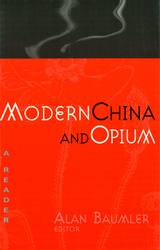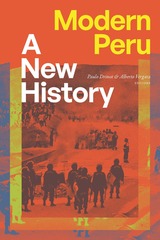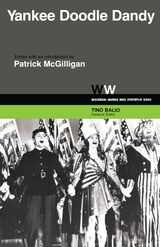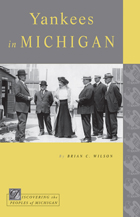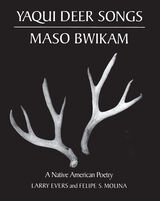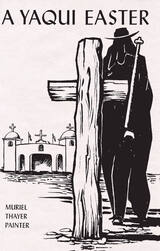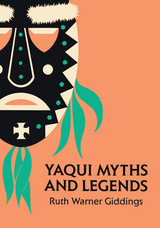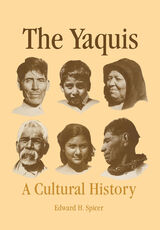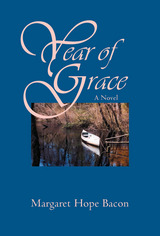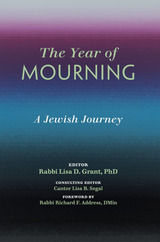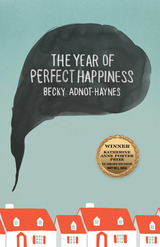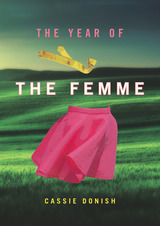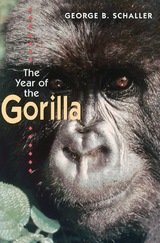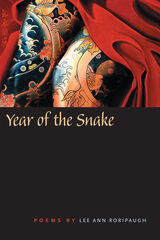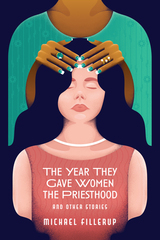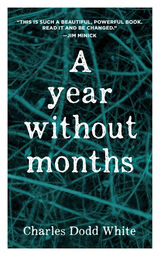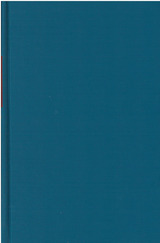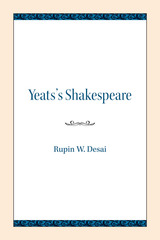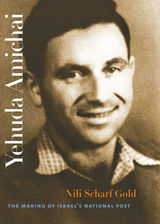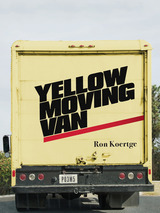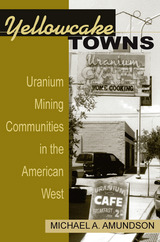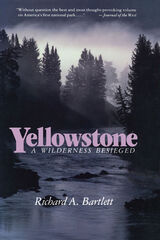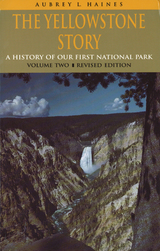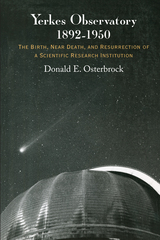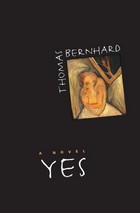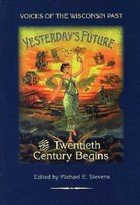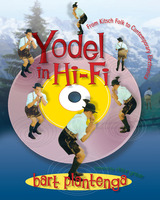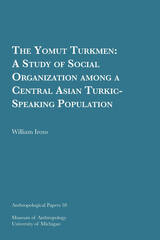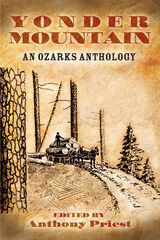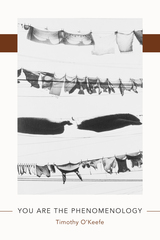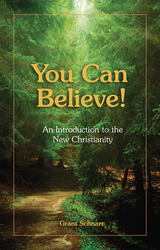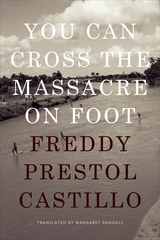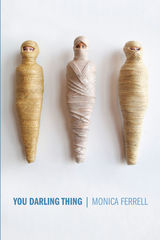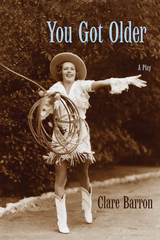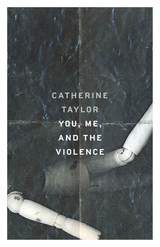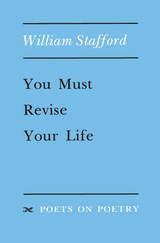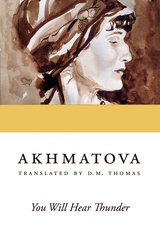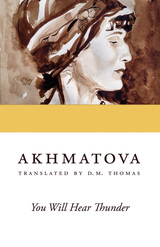 Ya Te Veo: Poems
P. Scott Cunningham
University of Arkansas Press, 2018 Finalist, 2018 Miller Williams Poetry Prize Ya Te Veo takes as its title the name of a mythical tree that eats people. Like the branches of that tree, the poems in this book seem to capture and nourish themselves on a diverse cast of would-be passers-by, drawing their life-force from the resulting synthesis of characters. Among the seized are poets and painters alongside musicians from Garth Brooks to Wu-Tang Clan to the composer Morton Feldman, whose mysterious personality serves as a backdrop in many poems for meditations on intimacy, ethics, and anxiety. As the phrase “ya te veo” (“I see you”) implies, this is a book interested in revealing what we think is hidden, in questioning the gap inside all of us, a gap between what we feel and what we say and do, making space for our many contradictions. Like the works of Feldman, these poems focus and recede, experimenting with form in order to accomplish a state of deep concentration. They impersonate sonnets, ghazals, terza rima, monologues, translations, and freestyles, but inexactly, embracing failed imitation as an opportunity to remix the familiar.
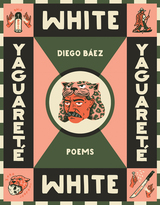 Yaguareté White: Poems
Diego Báez
University of Arizona Press, 2024 In Diego Báez’s debut collection, Yaguareté White, English, Spanish, and Guaraní encounter each other through the elusive yet potent figure of the jaguar.
The son of a Paraguayan father and a mother from Pennsylvania, Báez grew up in central Illinois as one of the only brown kids on the block—but that didn’t keep him from feeling like a gringo on family visits to Paraguay. Exploring this contradiction as it weaves through experiences of language, self, and place, Báez revels in showing up the absurdities of empire and chafes at the limits of patrimony, but he always reserves his most trenchant irony for the gaze he turns on himself.
Notably, this raucous collection also wrestles with Guaraní, a state-recognized Indigenous language widely spoken in Paraguay. Guaraní both structures and punctures the book, surfacing in a sequence of jokes that double as poems, and introducing but leaving unresolved ambient questions about local histories of militarism, masculine bravado, and the outlook of the campos. Cutting across borders of every kind, Báez’s poems attempt to reconcile the incomplete, contradictory, and inconsistent experiences of a speaking self that resides between languages, nations, and generations.
Yaguareté White is a lyrical exploration of Paraguayan American identity and what it means to see through a colored whiteness in all of its tangled contradictions.
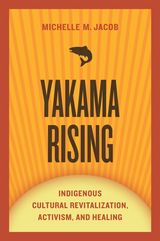 Yakama Rising: Indigenous Cultural Revitalization, Activism, and Healing
Michelle M. Jacob
University of Arizona Press, 2013 The Yakama Nation of present-day Washington State has responded to more than a century of historical trauma with a resurgence of grassroots activism and cultural revitalization. This pathbreaking ethnography shifts the conversation from one of victimhood to one of ongoing resistance and resilience as a means of healing the soul wounds of settler colonialism. Yakama Rising: Indigenous Cultural Revitalization, Activism, and Healing argues that Indigenous communities themselves have the answers to the persistent social problems they face. This book contributes to discourses of Indigenous social change by articulating a Yakama decolonizing praxis that advances the premise that grassroots activism and cultural revitalization are powerful examples of decolonization.
Michelle M. Jacob employs ethnographic case studies to demonstrate the tension between reclaiming traditional cultural practices and adapting to change. Through interviewees’ narratives, she carefully tacks back and forth between the atrocities of colonization and the remarkable actions of individuals committed to sustaining Yakama heritage. Focusing on three domains of Indigenous revitalization—dance, language, and foods—Jacob carefully elucidates the philosophy underlying and unifying each domain while also illustrating the importance of these practices for Indigenous self-determination, healing, and survival.
In the impassioned voice of a member of the Yakama Nation, Jacob presents a volume that is at once intimate and specific to her home community and that also advances theories of Indigenous decolonization, feminism, and cultural revitalization. Jacob’s theoretical and methodological contributions make this work valuable to a range of students, academics, tribal community members, and professionals, and an essential read for anyone interested in the ways that grassroots activism can transform individual lives, communities, and society.
 The Yale Critics: Deconstruction in America
Jonathan Arac, Wlad Godzich, and Wallace Martin, Editors
University of Minnesota Press, 1983 The Yale Critics was first published in 1983. Minnesota Archive Editions uses digital technology to make long-unavailable books once again accessible, and are published unaltered from the original University of Minnesota Press editions. A heated debate has been raging in North America in recent years over the form and function of literature. At the center of the fray is a group of critics teaching at Yale University—Harold Bloom, Geoffrey Hartman, Paul de Man, and J. Hillis Miller—whose work can be described in relation to the deconstructive philosophy practiced by French philosopher Jacques Derrida. For over a decade the Yale Critics have aroused controversy; most often they are considered as a group, to be applauded or attacked, rather than as individuals whose ideas merit critical scrutiny. Here a new generation of scholars attempts for the first time a serious, broad assessment of the Yale group. These essays appraise the Yale Critics by exploring their roots, their individual careers, and the issues they introduce. Wallace Martin's introduction offers a brilliant, compact account of the Yale Critics and of their relation to deconstruction and the deconstruction to two characteristically Anglo-American enterprises; Paul Bove explores the new criticism and Wlad Godzich the reception of Derrida in America. Next come essays giving individual attention to each of the critics: Michael Sprinker on Hartman, Donald Pease on Miller, Stanley Corngold on de Man, and Daniel O'Hara on Bloom. Two essays then illuminate "deconstruction in America" through a return to modern continental philosophy: Donald Marshall on Maurice Blanchot, and Rodolphe Gasche on Martin Heidegger. Finally, Jonathan Arac's afterword brings the volume together and projects a future beyond the Yale Critics. Throughout, the contributors aim to provide a balanced view of a subject that has most often been treated polemically. While useful as an introduction, The Yale Critics also engages in a serious critical reflection on the uses of the humanities in American today.
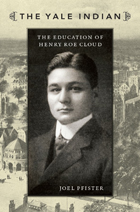 The Yale Indian: The Education of Henry Roe Cloud
Joel Pfister
Duke University Press, 2009 Honored in his own time as one of the most prominent Indian public intellectuals, Henry Roe Cloud (c. 1884–1950) fought to open higher education to Indians. Joel Pfister’s extensive archival research establishes the historical significance of key chapters in the Winnebago’s remarkable life. Roe Cloud was the first Indian to receive undergraduate and graduate degrees from Yale University, where he was elected to the prestigious and intellectual Elihu Club. Pfister compares Roe Cloud’s experience to that of other “college Indians” and also to African Americans such as W. E. B. Du Bois. Roe Cloud helped launch the Society of American Indians, graduated from Auburn seminary, founded a preparatory school for Indians, and served as the first Indian superintendent of the Haskell Institute (forerunner of Haskell Indian Nations University). He also worked under John Collier at the Bureau of Indian Affairs, where he was a catalyst for the Indian New Deal. Roe Cloud’s white-collar activism was entwined with the Progressive Era formation of an Indian professional and managerial class, a Native “talented tenth,” whose members strategically used their contingent entry into arenas of white social, intellectual, and political power on behalf of Indians without such access. His Yale training provided a cross-cultural education in class-structured emotions and individuality. While at Yale, Roe Cloud was informally adopted by a white missionary couple. Through them he was schooled in upper-middle-class sentimentality and incentives. He also learned how interracial romance could jeopardize Indian acceptance into their class. Roe Cloud expanded the range of what modern Indians could aspire to and achieve.
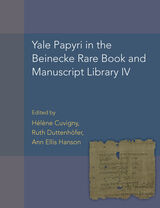 Yale Papyri in the Beinecke Rare Book and Manuscript Library IV
Hélène Cuvigny, Ruth Duttenhöfer, Ann Ellis Hanson, editors
University of Michigan Press, 2021 Yale Papyri in the Beinecke Rare Book and Manuscript Library IV springs from work undertaken at Yale University’s Beinecke Rare Book and Manuscript Library, at its Papyrological Summer Institute in 2003. This fourth volume of Yale papyri presents three groups of texts dating from the second century BCE to the seventh century CE. Editions are presented in chronological order, and include items such as samples of scribal training, mathematical tables and exercises, schoolroom work, letters, tax- receipts, contracts, and petitions. Contributors in addition to the volume editors include Daniel Markovich, Charles W. Hedrick, Jr., Jitse H. F. Dijkstra, Kevin Wilkinson, AnneMarie Luijendijk, Richard L. Phillips, Gary Reger, Shane Berg, Elizabeth Penland, George Bevan, Josiah E. Davis, Mariam Dandamayeva, Andrew T. Crislip, and Jean Gascou.
 A Yale Strike Dossier, Volume 14
Cary Nelson
Duke University Press A Yale Strike Dossier examines the uneasy coexistence of labor unions and the administration of Yale University. Inspired by the strike during the winter of 1995–96 and creating a context in which that event can be discussed, this special issue of Social Text focuses on the relationship between the university and its teaching assistants and service workers. The Yale Corporation, the university’s equivalent to a board of trustees, has been in conflict with its employees and their unions for decades. While partially blaming general economic trends for what they regard as the inhumane system at Yale, contributors to this collection explore the connection between big business and a large university as well as Yale’s choice to operate in a nontraditional, corporate style. An unprecedented collection of essays, this volume provides an in-depth discussion of the history and politics of Yale’s most visible campus conflict. Contributors. Michael Bérubé, Barbara Ehrenreich, Robin D. G. Kelley, Duncan Kennedy, Cary Nelson, Kathy Newman, Corey Robin, Andrew Ross, Michelle Stephens, John Wilhelm, Rick Wolff
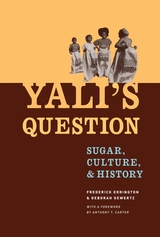 Yali's Question: Sugar, Culture, and History
Frederick Errington and Deborah Gewertz
University of Chicago Press, 2004 Yali's Question is the story of a remarkable physical and social creation—Ramu Sugar Limited (RSL), a sugar plantation created in a remote part of Papua New Guinea. As an embodiment of imported industrial production, RSL's smoke-belching, steam-shrieking factory and vast fields of carefully tended sugar cane contrast sharply with the surrounding grassland. RSL not only dominates the landscape, but also shapes those culturally diverse thousands who left their homes to work there.
To understand the creation of such a startling place, Frederick Errington and Deborah Gewertz explore the perspectives of the diverse participants that had a hand in its creation. In examining these views, they also consider those of Yali, a local Papua New Guinean political leader. Significantly, Yali features not only in the story of RSL, but also in Jared Diamond's Pulitzer Prize winning world history Guns, Germs, and Steel—a history probed through its contrast with RSL's. The authors' disagreement with Diamond stems, not from the generality of his focus and the specificity of theirs, but from a difference in view about how history is made—and from an insistence that those with power be held accountable for affecting history.
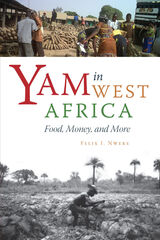 Yam in West Africa: Food, Money, and More
Felix I. Nweke
Michigan State University Press, 2015 Yam in West Africa examines a crop that has been sidelined and ignored for too long while being central to the existence of so many and consumed worldwide. In this book, Felix Nweke attempts to unravel the contradictory nature of the yam crop sector in West Africa by looking at the largest issues in the problematic industry.
Yam production is concentrated in West Africa, which is responsible for more than 90 percent of the 50 million tons produced annually around the globe. Though the crop can attract high prices, too often its producers live in penury. Regional issues drive up labor costs of food crops because of dependence on obsolete technology. In addition, certain agronomic practices that are peculiar to yam production remain unchanged, and pests and diseases still ravage the crop. Yam in West Africa investigates solutions to these problems with the aim of expanding yam production, increasing sales, helping farmers, and bringing more of this staple food to those who need it. The future of the yam is bright; this book aims to make it more so.
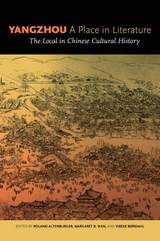 Yangzhou, A Place in Literature: The Local in Chinese Cultural History
Edited by Roland Altenburger, Margaret B. Wan, and Vibeke Børdahl
University of Hawaii Press, 2015 One of the famous canal cities of the world and a former center of culture, trade, transportation, and fashion, the old town of Yangzhou evokes romantic bridges, beautiful courtesans, fine gardens, and eccentric painters. It is also remembered as a war-torn ruin after the Qing conquest and the Taiping Rebellion, and as a city in decline as trade shifted to seaports and railways. Yangzhou, A Place in Literature offers a wealth of literary, semi-literary, and oral texts representing social life over three hundred years of dramatic change between the seventeenth and twentieth centuries. The translations in this volume represent a wide range of literary forms and styles, both elite and popular, with subjects ranging from literature, history, theater, and art to the history of architecture and gardening, and of material culture at large. Readers will come across rarely found details of everyday life, the sights, smells, and sounds of the lanes and teahouses, a world of taverns, pilgrimages, communal baths, fish markets, salt merchants, acting troupes, and food in one of the wealthiest cities of imperial China. Each text has an introductory essay and rich textual notes by an expert in the relevant field. The selected texts are historically and intellectually important in their own right, but the volume greatly enhances their collective value by combining them, arranging them in historical sequence, and providing a dense network of cross-references that invite comparisons and reveal contrasts in style, form, focus, and topic.
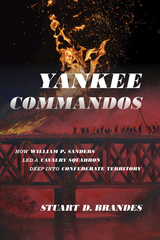 Yankee Commandos: How William P. Sanders Led a Cavalry Squadron Deep into Confederate Territory
Stuart Brandes
University of Tennessee Press, 2023 In June of 1863, Col. William P. Sanders led a cavalry raid of 1,300 men from the Union Army of the Ohio through Confederate-held East Tennessee. The raid severed the Confederate rail supply line from Virginia to the Western Theater and made national headlines. Until now, this incredible feat has been relegated to a footnote in the voluminous history of the American Civil War.
In Yankee Commandos, Stuart Brandes presents readers with the most complete account of the Sanders raid to date by using newly discovered and under-explored materials, such as Sanders’s official reports and East Tennessee diaries and memoirs in which Sanders is chronicled. The book presents important details of a cavalry raid through East Tennessee that further turned the tide of war for the Union in the Western Theater. It also sheds light on the raid’s effect on the divided civilian population of East Tennessee, where, unlike the largely pro-secession populations of Middle and West Tennessee, the fraction of enlisted men to the Union cause rose to nearly a quarter.
Colonel Sanders remains an enigma of the American Civil War. (He was a cousin of Confederate president Jefferson Davis, and his father and three brothers donned Confederate gray at the outbreak of the war.) By studying the legend of Sanders and his raid, Brandes fills an important gap in Civil War scholarship and in the story of Unionism in a mostly Confederate-sympathizing state.
Yankee Doodle Dandy
Edited by Patrick McGilligan; Tino T. Balio, Series Editor
University of Wisconsin Press, 1981 The 1942 smash musical hit Yankee Doodle Dandy has long remained a favorite among audiences and film buffs. Ostensibly the story of "Mr. Broadway"—George M. Cohan— the movie evolved in its making into one of Warners' trademark "biopics" and a showcase for the singing and dancing talents of James Cagney. This book includes the complete screenplay.
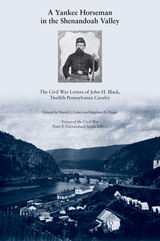 A Yankee Horseman in the Shenandoah Valley: The Civil War Letters of John H. Black, Twelfth Pennsylvania Cavalry
David J. Coles
University of Tennessee Press, 2012
In many ways, John H. Black typified the thousands of volunteers who fought for the Union during the Civil War. Born in 1834 and raised on his family’s farm near Allegheny Township, Pennsylvania, Black taught school until he, like many Pennsylvanians, rushed to defend the Union after the attack on Fort Sumter in April 1861. He served with the Twelfth Pennsylvania Cavalry, one of the Union’s most unruly, maligned, and criticized units.Consistently outperformed early in the conflict, the Twelfth finally managed to salvage much of its reputation by the end of the war. Throughout his service, Black penned frequent and descriptive letters to his fiancée and later wife, Jennie Leighty Black. This welcome volume presents this complete correspondence for the first time, offering a surprisingly full record of the cavalryman’s service from 1862 to 1865 and an intimate portrait of a wartime romance.
In his letters, Black reveals his impassioned devotion to the cause, frequently expressing his disgust toward those who would not enlist and his frustration with friends who were not appropriately patriotic. Despite the Twelfth Pennsylvania’s somewhat checkered history, Black consistently praises both the regiment’s men and their service and demonstrates a strong camaraderie with his fellow soldiers. He offers detailed descriptions of the regiment’s vital operations in protecting Unionists and tracking down and combating guerrillas, in particular John Singleton Mosby and his partisan rangers, providing a rare first-person account of Union counterinsurgency tactics in the Lower Shenandoah Valley. In the midst of portraying heated and chaotic military operations, Black makes Jennie a prominent character in his war, illustrating the various ways in which the conflict altered or nurtured romantic relationships.
One of the few compilations of letters by a long-term Yankee cavalry member and the only such collection by a member of the Twelfth Pennsylvania, A Yankee Horseman in the Shenandoah Valley provides new insights into the brutal, confused guerrilla fighting that occurred in northwestern Virginia. Moreover, these letters make a significant contribution toward an emerging consensus that Yankee cavalry—often maligned and contrasted with their celebrated Confederate foes—became a superior fighting force as the war progressed.
David J. Coles, professor of history at Longwood University, is the associate editor of the Encyclopedia of Civil War, coauthor of Sons of Garibaldi in Blue and Gray, and coeditor of the Encyclopedia of the American Civil War.
Stephen D. Engle, professor of history at Florida Atlantic University, is the author of Yankee Dutchman: The Life of Franz Sigel, Don Carlos Buell: Most Promising of All, and Struggle for the Heartland: The Campaigns from Fort Henry to Corinth.
 Yankee No!: Anti-Americanism in U.S.–Latin American Relations
Alan McPherson
Harvard University Press, 2003 In 1958, angry Venezuelans attacked Vice President Richard Nixon in Caracas, opening a turbulent decade in Latin American–U.S. relations. In Yankee No! Alan McPherson sheds much-needed light on the controversial and pressing problem of anti-U.S. sentiment in the world.
Examining the roots of anti-Americanism in Latin America, McPherson focuses on three major crises: the Cuban Revolution, the 1964 Panama riots, and U.S. intervention in the Dominican Republic. Deftly combining cultural and political analysis, he demonstrates the shifting and complex nature of anti-Americanism in each country and the love–hate ambivalence of most Latin Americans toward the United States. When rising panic over “Yankee hating” led Washington to try to contain foreign hostility, the government displayed a surprisingly coherent and consistent response, maintaining an ideological self-confidence that has outlasted a Latin American diplomacy torn between resentment and admiration of the United States.
However, McPherson warns, U.S. leaders run a great risk if they continue to ignore the deeper causes of anti-Americanism. Written with dramatic flair, Yankee No! is a timely, compelling, and carefully researched contribution to international history.
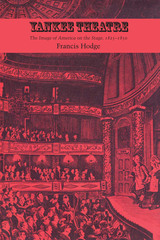 Yankee Theatre: The Image of America on the Stage, 1825–1850
By Francis Hodge
University of Texas Press, 1964 The famous "Stage Yankees," with their eccentric New England dialect comedy, entertained audiences from Boston to New Orleans, from New York to London in the years between 1825 and 1850. They provided the creative energy for the development of an American-type character in early plays of native authorship. This book examines the full range of their theatre activity, not only as actors, but also as playmakers, and re-evaluates their contribution to the growth of the American stage. Yankee theatre was not an oddity, a passing fad, or an accident of entertainment; it was an honest exploitation of the materials of American life for an audience in search of its own identification. The delineation of the American character—a full-length realistic portrait in the context of stage comedy—was its projected goal; and though not the only method for such delineation, the theatre form was the most popular and extensive way of disseminating the American image. The Yankee actors openly borrowed from what literary sources were available to them, but because of their special position as actors, who were required to give flesh-and-blood imitations of people for the believable acceptance of others viewing the same people about them, they were forced to draw extensively on their actors' imaginations and to present the American as they saw him. If the image was too often an external one, it still revealed the Yankee as a hardy individual whose independence was a primary assumption; as a bargainer, whose techniques were more clever than England's sharpest penny-pincher; as a country person, more intelligent, sharper and keener in dealings than the city-bred type; as an American freewheeler who always landed on top, not out of naive honesty but out of a simple perception of other human beings and their gullibility. Much new evidence in this study is based on London productions, where the view of English audiences and critics was sharply focused on what Americans thought about themselves and the new culture of democracy emerging around them. The shift from America, the borrower, to America, the original doer, can be clearly seen in this stager activity. Yankee theatre, then, is an epitome of the emerging American after the Second War for Independence. Emerging nationalism meant emerging national definition. Yankee theatre thus led to the first cohesive body of American plays, the first American actors seen in London, and to a new realistic interpretation of the American in the "character" plays of the 1870s and 1880s.
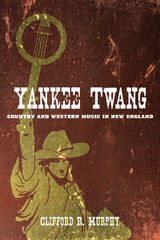 Yankee Twang: Country and Western Music in New England
Clifford R. Murphy
University of Illinois Press, 2014 Merging scholarly insight with a professional guitarist's sense of the musical life, Yankee Twang delves into the rich tradition of country & western music that is played and loved in the mill towns and cities of the American northeast. Scholar and musician Clifford R. Murphy draws on a wealth of ethnographic material, interviews, and encounters with recorded and live music to reveal the central role of country and western in the social lives and musical activity of working-class New Englanders. As Murphy shows, an extraordinary multiculturalism sets New England country and western music apart from other regional and national forms. Once segregated at work and worship, members of different ethnic groups used the country and western popularized on the radio and by barnstorming artists to come together at social events, united by a love of the music. Musicians, meanwhile, drew from the wide variety of ethnic musical traditions to create the New England style. But the music also gave--and gives--voice to working-class feeling. Murphy explores how the Yankee love of country and western emphasizes the western, reflecting the longing of many blue collar workers for the mythical cowboy's life of rugged but fulfilling individualism. Indeed, many New Englanders use country and western to comment on economic disenfranchisement and express their resentment of a mass media, government, and Nashville music establishment that they believe neither reflects their experiences nor considers them equal participants in American life.
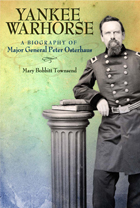 Yankee Warhorse: A Biography of Major General Peter Osterhaus
Mary Bobbit Townsend
University of Missouri Press, 2021 A German-born Union officer in the American Civil War, Maj. Gen. Peter Osterhaus served from the first clash in the western theater until the final surrender of the war. Osterhaus made a name for himself within the army as an energetic and resourceful commander who led his men from the front. He was one of the last surviving Union major general and military governor of Mississippi in the early days of Reconstruction. This first full-length study of the officer documents how, despite his meteoric military career, his accomplishments were underreported even in his own day and often misrepresented in the historical record. Mary Bobbitt Townsend corrects previous errors about his life and offers new insights into his contributions to major turning points in the war at Vicksburg, Chattanooga, and Atlanta, as well as other battles. Townsend draws on battle reports not found in the Official Records, on personal papers, and on other nonpublished material to examine Osterhaus’s part in the major battles in the West as well as in minor engagements. She tells how he came into his own in the Vicksburg campaign and proved himself through skill with artillery, expertise in intelligence gathering, and taking the lead in hostile territory—blazing the trail down the west side of the river for the entire Union army and then covering Grant’s back for a month during the siege. At Chattanooga, Osterhaus helped Joe Hooker strategize the rout at Lookout Mountain; at Atlanta, he led the Fifteenth Corps, the largest of the four corps making Sherman's March to the Sea. Townsend also documents his contributions in the battles of Wilson's Creek, Pea Ridge, Arkansas Post, Port Gibson, Ringgold Gap, and Resaca and shows that he played a crucial role in Canby’s Mobile Bay operations at the end of the war. In addition to reporting Osterhaus’s wartime experiences, Townsend describes his experiences as a leader in the 1848–1849 Rebellion in his native Germany, his frustration during his term as Mississippi’s governor, and his stint as U.S. consul to France during the Franco-Prussian War. Osterhaus stood out from other volunteer officers in his understanding of tactics and logistics, even though his careful field preparation led to criticism by historians that he was unduly cautious in battle. Yankee Warhorse sets the record straight on this important Civil War general as it opens a new window on the war in the West.
Yankees in Michigan
Brian C. Wilson
Michigan State University Press, 2008 As Brian C. Wilson describes them in this highly readable and entertaining book, Yankees—defined by their shared culture and sense of identity—had a number of distinctive traits and sought to impose their ideas across the state of Michigan.
After the ethnic label of "Yankee" fell out of use, the offspring of Yankees appropriated the term "Midwesterner." So fused did the identities of Yankee and Midwesterner become that understanding the larger story of America's Midwestern regional identity begins with the Yankees in Michigan.
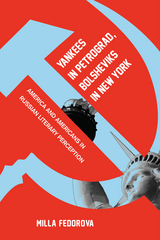 Yankees in Petrograd, Bolsheviks in New York: America and Americans in Russian Literary Perception
Milla Fedorova
Northern Illinois University Press, 2012 Yankees in Petrograd, Bosheviks in New York examines the myth of America as the Other World at the moment of transition from the Russian to the Soviet version. The material on which Milla Fedorova bases her study comprises a curious phenomenon of the waning nineteenth and early twentieth centuries—pilgrimages to America by prominent Russian writers who then created travelogues. The writers’ missions usually consisted of two parts: the physical journey, which most of the writers considered as ideologically significant, and the literary fruit of the pilgrimages. Until now, the American travelogue has not been recognized and studied as a particular kind of narration with its own canons. Arguing that the primary cultural model for Russian writers’ journey to America is Dante’s descent into Hell, Federova ultimately reveals how America is represented as the country of “dead souls” where objects and machines have exchanged places with people, where relations between the living and the dead are inverted.
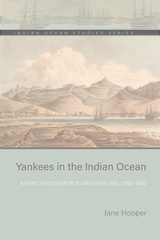 Yankees in the Indian Ocean: American Commerce and Whaling, 1786–1860
Jane Hooper
Ohio University Press, 2022 The history of US imperialism remains incomplete without this consideration of long-overlooked nineteenth-century American commercial and whaling ventures in the Indian Ocean. Yankees in the Indian Ocean shows how nineteenth-century American merchant and whaler activity in the Indian Ocean shaped the imperial future of the United States, influenced the region’s commerce, encouraged illegal slaving, and contributed to environmental degradation. For a brief time, Americans outnumbered other Western visitors to Mauritius, Madagascar, Zanzibar, and the East African littoral. In a relentless search for commodities and provisions, American whaleships landed at islands throughout the ocean and stripped them of resources. Yet Americans failed to develop a permanent foothold in the region and operated instead from a position of weakness relative to other major colonizing powers, thus discouraging the development of American imperial holdings there. The history of American concerns in the Indian Ocean world remains largely unwritten. Scholars who focus on the region have mostly ignored American involvement, despite arguments for the ocean’s importance in powering global connections during the late eighteenth and early nineteenth centuries. Historians of the United States likewise have failed to examine the western Indian Ocean because of a preoccupation with US interests in Asia and the Pacific. Failing to understand the scale of American trade in the Indian Ocean has led to a fixation on European commercial strength to the exclusion of other maritime networks. Instead, this book reveals how the people of Madagascar and East Africa helped the United States briefly dominate commerce and whaling. This book investigates how and why Americans were drawn to the western Indian Ocean years before the United States established a formal overseas empire in the late nineteenth century. Ship logs, sailor journals, and travel narratives reveal how American men transformed foreign land- and seascapes into knowable spaces that confirmed American conceptions of people and natural resources; these sources also provide insight into the complex social and ecological worlds of the Indian Ocean during this critical time.
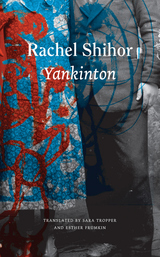 Yankinton
Rachel Shihor
Seagull Books, 2020 Set in the early days of the Jewish state, Yankinton tells the stories of refugees from the Holocaust and antisemitism who struggled to build new lives in Israel. Through the eyes of a young Orthodox Jewish girl growing up in Tel Aviv, we watch a colorful mosaic of characters from Soviet revolutionaries to weapons runners during the War of Independence. Faced with the difficulties of the traumatized adults around her, from panic attacks to suicide attempts, the girl seeks moments of wonder among the struggle and tragedy.
We join her as she moves through the Tel Aviv streets, avoiding the spots exposed to Arab sniper fire; seeks literature of the wider world in a city awash in translations of Soviet propaganda novels; and navigates the idiosyncrasies of the adults around her. With her, we listen in on political discussions, reminiscences of Russia and wartime Eastern Europe, and Soviet revolutionary songs accompanied by balalaikas. We track the lives of the couple for which the novel is named. Mrs. Yankinton smuggled grenades in her baby’s carriage during Israel’s War of Independence; for years after, she would end every day standing at attention, alone in her living room, when the national anthem came over the radio. Mr. Yankinton, whose arrest as a revolutionary in Soviet Russia foiled his plans to study medicine, became the proud curator of the Zionist visionary Jabotinsky’s complete works.
In this rich mosaic of scenes and characters from postwar Tel Aviv, Shihor muses on the vital significance of the act of remembering and of the search for flashes of magic in the darkness.
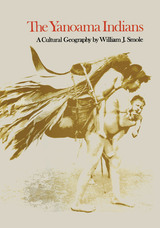 The Yanoama Indians: A Cultural Geography
By William J. Smole
University of Texas Press, 1976 The Yanoama are one of the most numerous remaining aboriginal populations of the South American tropical forests, and their large territory constitutes a significant culture region. Although other scholars (anthropologists, geneticists, linguists) have studied this contemporary "neolithic" population, this is the first geographic study of the Yanoama. It is also the only book to focus on the Yanoama highland core area—the Parima massif—and it is the first study to analyze Yanoama horticulture as an integral part of their ecosystem. The author is concerned principally with the spatial dimension as developed in Yanoama culture, with the spatial patterns of functioning systems, and with Yanoama ecology in this highland habitat. The natural environment is viewed, not as a cultural determinant, but as part of the total ecosystem. Livelihood activities constitute a major organizing theme and, among these, gardening receives the most attention. Frequently classified as a nomadic hunter-gatherer group, the Yanoama are found to have a deep-seated horticultural tradition, and many new data on this tradition are presented. As this study reveals, the Yanoama have created and maintained a cultural landscape that bears their distinctive stamp.
Yaqui Deer Songs/Maso Bwikam: A Native American Poetry
Larry Evers and Felipe S. Molina
University of Arizona Press, 1987 Winner of the American Folklore Society’s Chicago Folklore Prize
Yaqui regard song as a kind of lingua franca of the intelligent universe. It is through song that experience with other living things is made intelligible and accessible to the human community. Deer songs often take the form of dialogues in which the deer and others in the wilderness world speak with one another or with the deer singers themselves. It is in this way, according to one deer singer, that “the wilderness world listens to itself even today.”
In this book authentic ceremonial songs, transcribed in both Yaqui and English, are the center of a fascinating discussion of the Deer Song tradition in Yaqui culture. Yaqui Deer Songs/Maso Bwikam thus enables non-Yaquis to hear these dialogues with the wilderness world for the first time.
A Yaqui Easter
Muriel Thayer Painter
University of Arizona Press, 1971 The Yaqui Indian Easter Ceremony--from the initial events of Ash Wednesday through the final "Circle" on Easter Sunday--briefly described and interpreted by a long-time student of the tribe.
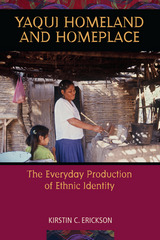 Yaqui Homeland and Homeplace: The Everyday Production of Ethnic Identity
Kirstin C. Erickson
University of Arizona Press, 2008 In this illuminating book, anthropologist Kirstin Erickson explains how members of the Yaqui tribe, an indigenous group in northern Mexico, construct, negotiate, and continually reimagine their ethnic identity. She examines two interconnected dimensions of the Yaqui ethnic imagination: the simultaneous processes of place making and identification, and the inseparability of ethnicity from female-identified spaces, roles, and practices.
Yaquis live in a portion of their ancestral homeland in Sonora, about 250 miles south of the Arizona border. A long history of displacement and ethnic struggle continues to shape the Yaqui sense of self, as Erickson discovered during the sixteen months that she lived in Potam, one of the eight historic Yaqui pueblos. She found that themes of identity frequently arise in the stories that Yaquis tell and that geography and location—space and place—figure prominently in their narratives.
Revisiting Edward Spicer’s groundbreaking anthropological study of the Yaquis of Potam pueblo undertaken more than sixty years ago, Erickson pays particular attention to the “cultural work” performed by Yaqui women today. She shows that by reaffirming their gendered identities and creating and occupying female-gendered spaces such as kitchens, household altars, and domestic ceremonial spaces, women constitute Yaqui ethnicity in ways that are as significant as actions taken by males in tribal leadership and public ceremony.
This absorbing study contributes new empirical knowledge about a Native American community as it adds to the growing anthropology of space/place and gender. By inviting readers into the homes and patios where Yaqui women discuss their lives, it offers a highly personalized account of how they construct—and reconstruct—their identity.
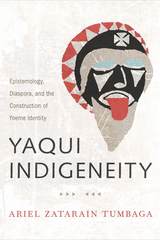 Yaqui Indigeneity: Epistemology, Diaspora, and the Construction of Yoeme Identity
Ariel Zatarain Tumbaga
University of Arizona Press, 2018 The Yaqui warrior is a persistent trope of the Mexican nation. But using fresh eyes to examine Yoeme indigeneity constructs, appropriations, and efforts at reclamation in twentieth- and twenty-first-century Mexican and Chicana/o literature provides important and vivid new opportunities for understanding. In Yaqui Indigeneity, Ariel Zatarain Tumbaga offers an interdisciplinary approach to examining representations of the transborder Yaqui nation as interpreted through the Mexican and Chicana/o imaginary.
Tumbaga examines colonial documents and nineteenth-century political literature that produce a Yaqui warrior mystique and reexamines the Mexican Revolution through indigenous culture. He delves into literary depictions of Yaqui battalions by writers like Martín Luis Guzmán and Carlos Fuentes and concludes that they conceal Yaqui politics and stigmatize Yaqui warriorhood, as well as misrepresent frequently performed deer dances as isolated exotic events.
Yaqui Indigeneity draws attention to a community of Chicana/o writers of Yaqui descent: Chicano-Yaqui authors such as Luis Valdez, Alma Luz Villanueva, Miguel Méndez, Alfredo Véa Jr., and Michael Nava, who possess a diaspora-based indigenous identity. Their writings rebut prior colonial and Mexican depictions of Yaquis—in particular, Véa’s La Maravilla exemplifies the new literary tradition that looks to indigenous oral tradition, religion, and history to address questions of cultural memory and immigration.
Using indigenous forms of knowledge, Tumbaga shows the important and growing body of literary work on Yaqui culture and history that demonstrates the historical and contemporary importance of the Yaqui nation in Mexican and Chicana/o history, politics, and culture.
Yaqui Myths and Legends
Ruth Warner Giddings
University of Arizona Press, 1968 Sixty-one tales narrated by Yaquis reflect this people's sense of the sacred and material value of their territory.
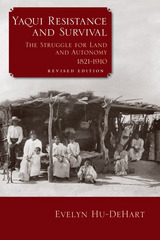 Yaqui Resistance and Survival: The Struggle for Land and Autonomy, 1821–1910
Evelyn Hu-DeHart
University of Wisconsin Press, 2016 Evelyn Hu-DeHart brings into focus the Yaqui in the nineteenth century, as the newly independent Mexico lurched through immense economic and governmental transformations, wars, insurgencies, and changing political alliances. This history includes Yaqui efforts to establish a native republic independent of Mexico, their resistance against government efforts to reduce their communal land to individual holdings, the value of their labor to mining and agricultural companies in northwest Mexico, their several revolts and guerrilla actions, the massive deportation of Yaquis from Sonora to Yucatán, the flight of some Yaquis across the U.S. border to Arizona, and their role in the 1910 Mexican Revolution.
In this revised edition of her groundbreaking work, Hu-DeHart reviews and reflects on the growth in scholarship about the Yaqui, including advances in theoretical frameworks and methodologies on borderlands, transnationalism, diaspora, and collective memory that are especially relevant to their history.
The Yaquis: A Cultural History
Edward H. Spicer
University of Arizona Press, 1980 This study is based on a thirty-month residence in Yaqui communities in both Arizona and Sonora and consists of integrating information from documented historical writing, of some primary source documents, of three centuries of contemporary descriptions of Yaqui customs and individuals, and of anthropological studies based on direct observation.
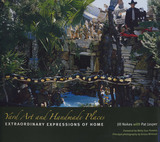 Yard Art and Handmade Places: Extraordinary Expressions of Home
By Jill Nokes, with Pat Jasper
University of Texas Press, 2007 Relatively few people in America build their own homes, but many yearn to make the places they live in more truly their own. Yard Art and Handmade Places profiles twenty homemakers who have used their yards and gardens to express their sense of individuality, to maintain connections to family and heritage, or even to create sacred spaces for personal and community refreshment and healing. Jill Nokes, an authority on native plants and ecological restoration, traveled across the state of Texas, seeking out residents who had transformed their yards and gardens into oases of art and exuberant personal expression. In this book, she presents their stories, told in their own words, about why they created these handmade places and what their yard art has come to mean to them and to their communities. Rather than viewing yard art as a curiosity or oddity, Nokes treats it as an integral part of home-making, revealing how these places become invested with deep personal or social meaning. Yard Art and Handmade Places celebrates the fact that, despite the proliferation of look-alike suburbs, places still exist where people with ordinary means and skills are shaping space with their own hands to create a personal expression that can be enjoyed by all.
Yardbird Suite: A Compendium of the Music and Life of Charlie Parker
Lawrence O. Koch
University of Wisconsin Press, 1988 A comprehensive study of jazz great Charlie Parker, including details of record dates, more than 200 musical illustrations, and biographical material arranged chronologically and linked with Parker’s recordings. The “Bird Stories” are all here, from Parker’s Kansas City roots to his untimely death, as well as the seminal journal article on Parker’s music, “Ornithology” that appeared in the Journal of Jazz Studies.
 Yardstick Nation: The Metric System in America
Hector Vera
Vanderbilt University Press, 2025 Why is there no metric system in the United States? Why is it that a country known for its openness to the future, its scientific innovations, and its preference for practicality has not adopted the most practical, scientific, and innovative system of measurement? Yardstick Nation answers these questions by analyzing the political, economic, and international factors that determined the trajectory of the United States as a nation self-excluded from one of the most successful global technical languages.
Using a historical-comparative approach and qualitative analysis of archival material, the book examines the trajectories of American scientists, engineers, politicians, and industrialists from 1787 to 1982, to detail what they wanted to attain and to explain what was actually possible to achieve given the political and economic conditions in which they lived. Yardstick Nation argues that in order to understand the unbreached distance between the United States and the metric system, we must consider the interaction between three structural elements: historical timing, state infrastructural power, and international economic integration.
Author Hector Vera’s systematic look at when and why countries have adopted the metric system shows that its introduction is never casual. In the countries that voluntarily embraced the metric system, this was the result of either deep internal political transformations or momentous changes in the international economy. When the adoption of the metric system is politically driven, it comes as the result of a social revolution, independence war, national unification, or the draft of a new constitution. When it is propelled by economic factors, metrication is part of the efforts of economically stagnant countries to integrate into international markets.
The Yavanajataka of Sphujidhvaja
David Pingree
Harvard University Press, 1978 The Yavanajataka, or “Greek Horoscopy,” is the only ancient Sanskrit text that can be proved to derive from a Western source; hence its importance for the study of cultural transmission. David Pingree's text and translation are accompanied by notes and commentary which demonstrate that this third-century astrological poem was based on a second-century prose translation of an Alexandrian Greek original. The Yavanajataka, here published for the first time, is the most solid evidence we have of the influence of Greece upon India in antiquity; in its own right it was the fountainhead of a rich astrological tradition in India. This monumental edition has been described as “a marvel of accurate and imaginative scholarship.”
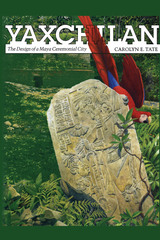 Yaxchilan: The Design of a Maya Ceremonial City
By Carolyn E. Tate
University of Texas Press, 1991 As archaeologists peel away the jungle covering that has both obscured and preserved the ancient Maya cities of Mexico and Central America, other scholars have only a limited time to study and understand the sites before the jungle, weather, and human encroachment efface them again, perhaps forever. This urgency underlies Yaxchilan: The Design of a Maya Ceremonial City, Carolyn Tate's comprehensive catalog and analysis of all the city's extant buildings and sculptures. During a year of field work, Tate fully documented the appearance of the site as of 1987. For each sculpture and building, she records its discovery, present location, condition, measurements, and astronomical orientation and reconstructs its Long Counts and Julian dates from Calendar Rounds. Line drawings and photographs provide a visual document of the art and architecture of Yaxchilan. More than mere documentation, however, the book explores the phenomenon of art within Maya society. Tate establishes a general framework of cultural practices, spiritual beliefs, and knowledge likely to have been shared by eighth-century Maya people. The process of making public art is considered in relation to other modes of aesthetic expression, such as oral tradition and ritual. This kind of analysis is new in Maya studies and offers fresh insight into the function of these magnificent cities and the powerful role public art and architecture play in establishing cultural norms, in education in a semiliterate society, and in developing the personal and community identities of individuals. Several chapters cover the specifics of art and iconography at Yaxchilan as a basis for examining the creation of the city in the Late Classic period. Individual sculptures are attributed to the hands of single artists and workshops, thus aiding in dating several of the monuments. The significance of headdresses, backracks, and other costume elements seen on monuments is tied to specific rituals and fashions, and influence from other sites is traced. These analyses lead to a history of the design of the city under the reigns of Shield Jaguar (A.D. 681-741) and Bird Jaguar IV (A.D. 752-772). In Tate's view, Yaxchilan and other Maya cities were designed as both a theater for ritual activities and a nexus of public art and social structures that were crucial in defining the self within Maya society.
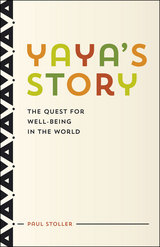 Yaya's Story: The Quest for Well-Being in the World
Paul Stoller
University of Chicago Press, 2014 Yaya’s Story is a book about Yaya Harouna, a Songhay trader originally from Niger who found a path to America. It is also a book about Paul Stoller—its author—an American anthropologist who found his own path to Africa. Separated by ethnicity, language, profession, and culture, these two men’s lives couldn’t be more different. But when they were both threatened by a grave illness—cancer—those differences evaporated, and the two were brought to profound existential convergence, a deep camaraderie in the face of the most harrowing of circumstances. Yaya’s Story is that story.
Harouna and Stoller would meet in Harlem, at a bustling African market where Harouna built a life as an African art trader and Stoller was conducting research. Moving from Belayara in Niger to Silver Spring, Maryland, and from the Peace Corps to fieldwork to New York, Stoller recounts their separate lives and how the threat posed by cancer brought them a new, profound, and shared sense of meaning. Combining memoir, ethnography, and philosophy through a series of interconnected narratives, he tells a story of remarkable friendship and the quest for well-being. It’s a story of difference and unity, of illness and health, a lyrical reflection on human resiliency and the shoulders we lean on.
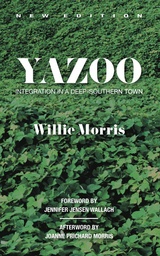 Yazoo: Integration in a Deep-Southern Town
Willie Morris
University of Arkansas Press, 2012 In 1970 Brown v. Board of Education was sixteen years old, and fifteen years had passed since the Brown II mandate that schools integrate "with all deliberate speed." Still, after all this time, it was necessary for the U.S. Supreme Court to order thirty Mississippi school districts--whose speed had been anything but deliberate--to integrate immediately. One of these districts included Yazoo City, the hometown of writer Willie Morris. Installed productively on "safe, sane Manhattan Island," Morris, though compelled to write about this pivotal moment, was reluctant to return to Yazoo and do no less than serve as cultural ambassador between the flawed Mississippi that he loved and a wider world. "I did not want to go back," Morris wrote. "I finally went home because the urge to be there during Yazoo's most critical moment was too elemental to resist, and because I would have been ashamed of myself if I had not." The result, Yazoo, is part reportage, part memoir, part ethnography, part social critique--and one of the richest accounts we have of a community's attempt to come to terms with the realities of seismic social change. As infinitely readable and nuanced as ever, Yazoo is available again, enhanced by an informative foreword by historian Jenifer Jensen Wallach and a warm and personal afterword on Morris's writing life by his widow, JoAnne Prichard Morris.
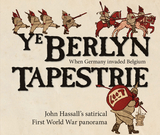 Ye Berlyn Tapestrie: John Hassall's Satirical First World War Panorama
John Hassall
Bodleian Library Publishing, 2014 As the devastation of German-occupied Belgium awakened Britain to the horrors of the Great War, a group of English cartoonists responded to these events with characteristic black humor. Among the most inventive responses was advertising artist John Hassall’s Ye Berlyn Tapestrie, an ambitious red-and-black panorama measuring thirty panels and more than fifteen feet and modeled after the famous Bayeux Tapestry, which recorded William the Conqueror’s invasion of England and the Battle of Hastings.
Ye Berlyn Tapestrie adapts the format of the Bayeux Tapestry to depict Kaiser Wilhelm II’s invasion of Luxembourg and Belgium. Hassall takes every opportunity to lampoon the German army, who are seen looting homes, marching shamefully through the streets behind women and children, drinking copious amounts of wine, and producing gas from sauerkraut and Limburger cheese. With comic inventiveness, Hassall has appended to the borders of the original Bayeux Tapestry stereotypical objects which the British public would have associated their enemy, from schnitzel to sausages, pilsners, and wild boar.
A fascinating example of war-induced farce, Ye Berlyn Tapestrie became itself a source of inspiration for later works, including wildly popular parodies of World War II in the Daily Mail and New Yorker. More recently, award-winning cartoonist and journalist Joe Sacco has adopted the format for his The Great War, which chronicles the first day of the Battle of the Somme. The Tapestrie is here presented in its entirety along with an introduction that sets out the historical conditions of its creation.
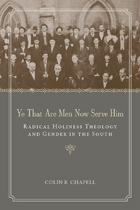 Ye That Are Men Now Serve Him: Radical Holiness Theology and Gender in the South
Colin B. Chapell
University of Alabama Press, 2016 Examines how religious belief reshaped concepts of gender during the New South period that took place from 1877 to 1915 in ways that continue to manifest today
Modernity remade much of the world in the late nineteenth and early twentieth centuries and was nowhere more transformational than in the American South. In the wake of the Civil War, the region not only formed new legal, financial, and social structures, but citizens of the South also faced disorienting uncertainty about personal identity and even gender itself. Ye That Are Men Now Serve Him traces the changes in southern gender roles during the New South period of 1877–1915 and demonstrates that religion is the key to perceiving how constructions of gender changed.
The Civil War cleaved southerners from the culture they had developed organically during antebellum decades, raising questions that went to the very heart of selfhood: What does it mean to be a man? How does a good woman behave? Unmoored from traditional anchors of gender, family, and race, southerners sought guidance from familiar sources: scripture and their churches. In Ye That Are Men Now Serve Him, Colin Chapell traces how concepts of gender evolved within the majority Baptist and Methodist denominations as compared to the more fluid and innovative Holiness movement.
Grounded in expansive research into the archives of the Southern Baptist Convention; Methodist Episcopal Church, South; and the Holiness movement, Chapell’s writing is also enlivened by a rich trove of primary sources: diaries, sermons, personal correspondence, published works, and unpublished memoirs. Chapell artfully contrasts the majority Baptist and Methodist view of gender with the relatively radical approaches of the emerging Holiness movement, thereby bringing into focus how subtle differences in belief gave rise to significantly different ideas of gender roles.
Scholars have explored class, race, and politics as factors that contributed to contemporary southern identity, and Chapell restores theology to its intuitive place at the center of southern identity. Probing and illuminating, Ye That Are Men Now Serve Him offers much of interest to scholars and readers of the South, southern history, and religion.
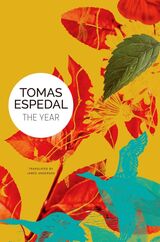 The Year: A Novel
Tomas Espedal
Seagull Books, 2021 In contemporary Norwegian fiction, Tomas Espedal’s work stands out as uniquely bound up with the author’s personal experiences. His first book, Tramp, introduced us to the wanderer Tomas; Against Art told us how a boy approaches art and eventually becomes a writer; Against Nature examined love’s labor—the job of writing; and in Bergerners, he is torn between his love for his home town and what lies beyond. Now, in The Year, we encounter the author’s struggle to reconcile his inner life with the external world, and the myriad forms of love, hate, loss, and death—both personal and literary—with the immutable pattern of time and the seasons. It is the journal of a year, a diary like no other. And suffusing it all are questions Petrarch asked: How do you live when the one you love is gone? And when your life force shifts from spring to autumn, how do you find the good death?
Written as a long poem, The Year is Espedal’s riveting stream of consciousness—profound, edgy, sometimes manic, but always intensely intimate.
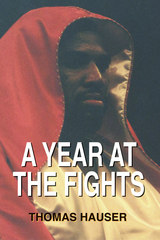 A Year at the Fights
Thomas Hauser
University of Arkansas Press, 2002 Acclaimed boxing writer Thomas Hauser admires the sweet science, but he also recognizes and confronts its problems. His essays here portray the sport in all its glory and gore, its grace and disgrace. Hauser tracks the effects of big money on the sport, exposes corruption at the highest levels, and examines the emotional links between the September 11 attack on America and the way we experience the violence of boxing. He follows the biggest fighters and the most important fights through 2001 into the early months of 2002. He also depicts the broadcasters, government regulators, and others-the people behind the scenes who shape boxing without ever taking a punch. We meet fighters such as Lennox Lewis, Mike Tyson, and Bernard Hopkins, and non-combatants like ringside physician Margaret Goodman, trainer Eddie Futch, and the powers that be at HBO. Praise for Thomas Hauser’s writing about professional boxing: New York Times: Incomparable and indispensable.
Washington Post: Brilliantly crafted.
New York Daily News:The best writing so far on the business of boxing.
Boxing Collectors’ News: A. J. Liebling’s current-day successor.
Ring Magazine: No one has ever done it better.
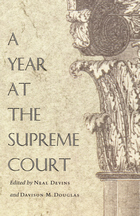 A Year at the Supreme Court
Neal Devins and Davison M. Douglas, eds.
Duke University Press, 2004 The United States Supreme Court’s 2002–03 term confounded Court watchers. The same Rehnquist Court that many had seen as solidly conservative and unduly activist—the Court that helped decide the 2000 presidential election and struck down thirty-one federal statutes since 1995—issued a set of surprising, watershed rulings. In a term filled with important and unpredictable decisions, it upheld affirmative action, invalidated a same-sex sodomy statute, and reversed a death sentence due to ineffective assistance of counsel. With essays focused on individual Justices, Court practices, and some of last year’s most important rulings, this volume explores the meaning and significance of the Court’s 2002–03 term. Seasoned Supreme Court advocates and journalists from The New Republic, The Los Angeles Times, Newsweek, National Journal, Slate, and Legal Times grapple with questions about the Rehnquist Court’s identity and the Supreme Court’s role in the political life of the country. Some essays consider the role of “swing” Justices Sandra Day O’Connor and Anthony Kennedy within a Court that divides 5–4 more than any other group of Justices in the nation’s history. Others examine the political reaction to and legal context of the Court’s Lawrence v. Texas decision declaring a Texas law criminalizing homosexual sodomy unconstitutional. Contributors analyze the Court’s rulings on affirmative action and reassess its commitment to states’ rights. Considering the Court’s practices, one advocate explores the use and utility of amicus curiae, or “friend of the court” briefs, while another reflects on indications of an increased openness by the Court to public scrutiny. Two advocates who argued cases before the Court—one related to hate speech and the other to a “three strikes and you’re out” criminal statute—offer vivid accounts of their experiences. Intended for general readers, A Year at the Supreme Court is for all those who want to understand the Rehnquist Court and its momentous 2002–03 term. Contributors
Erwin Chemerinsky
Neal Devins
Davison M. Douglas
David J. Garrow
Dahlia Lithwick
Tony Mauro
Carter Phillips
Ramesh Ponnuru
Jeffrey Rosen
David G. Savage
Rodney A. Smolla
Stuart Taylor Jr.
 A Year In Place
W Scott Olsen
University of Utah Press, 2001 W. Scott Olsen and Bret Lott invited a dozen friends to consider one particular calendar month in the place they call home. The result is A Year in Place, a captivating collection of new writing by twelve eminent American writers. More than a montage of voices and experiences, A Year in Place illustrates, as Olsen and Lott explain in their introduction, the trends in American thinking about who we are and what we care about. Rick Bass takes us to the Yaak Valley of Montana in June, where fawns are arriving, "newly-emerged, knocked-legged and groggy, legs still unfolding from that long sleeping passage." Peggy Shumaker explores the special social and cultural time that is March in Fairbanks, Alaska, where a long winter has whetted the psychic despair of inhabitants who find in the "sky’s unbearable brightness . . . a waking pain beyond endurance." Michael Martone transports us through memory to Indiana in the 1950s where each May a blimp "yawed and floated up," wallowing above a suburban neighborhood on its way to the Indianapolis 500. These and nine other contributions yield an unforgettable book about "the places we find ourselves blessed enough to be."
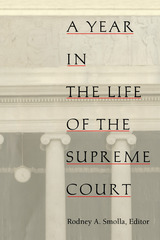 A Year in the Life of the Supreme Court
Rodney A. Smolla, ed.
Duke University Press, 1995 Despite its importance to the life of the nation and all its citizens, the Supreme Court remains a mystery to most Americans, its workings widely felt but rarely seen firsthand. In this book, journalists who cover the Court—acting as the eyes and ears of not just the American people, but the Constitution itself—give us a rare close look into its proceedings, the people behind them, and the complex, often fascinating ways in which justice is ultimately served. Their narratives form an intimate account of a year in the life of the Supreme Court.
The cases heard by the Surpreme Court are, first and foremost, disputes involving real people with actual stories. The accidents and twists of circumstance that have brought these people to the last resort of litigation can make for compelling drama. The contributors to this volume bring these dramatic stories to life, using them as a backdrop for the larger issues of law and social policy that constitute the Court’s business: abortion, separation of church and state, freedom of speech, the right of privacy, crime, violence, discrimination, and the death penalty. In the course of these narratives, the authors describe the personalities and jurisprudential leanings of the various Justices, explaining how the interplay of these characters and theories about the Constitution interact to influence the Court’s decisions.
Highly readable and richly informative, this book offers an unusually clear and comprehensive portrait of one of the most influential institutions in modern American life.
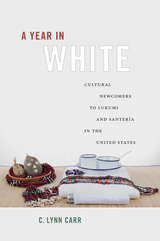 A Year in White: Cultural Newcomers to Lukumi and Santería in the United States
Carr, C. Lynn
Rutgers University Press, 2016 In the Afro-Cuban Lukumi religious tradition—more commonly known in the United States as Santería—entrants into the priesthood undergo an extraordinary fifty-three-week initiation period. During this time, these novices—called iyawo—endure a host of prohibitions, including most notably wearing exclusively white clothing. In A Year in White, sociologist C. Lynn Carr, who underwent this initiation herself, opens a window on this remarkable year-long religious transformation.
In her intimate investigation of the “year in white,” Carr draws on fifty-two in-depth interviews with other participants, an online survey of nearly two hundred others, and almost a decade of her own ethnographic fieldwork, gathering stories that allow us to see how cultural newcomers and natives thought, felt, and acted with regard to their initiation. She documents how, during the iyawo year, the ritual slowly transforms the initiate’s identity. For the first three months, for instance, the iyawo may not use a mirror, even to shave, and must eat all meals while seated on a mat on the floor using only a spoon and their own set of dishes. During the entire year, the iyawo loses their name and is simply addressed as “iyawo” by family and friends.
Carr also shows that this year-long religious ritual—which is carried out even as the iyawo goes about daily life—offers new insight into religion in general, suggesting that the sacred is not separable from the profane and indeed that religion shares an ongoing dynamic relationship with the realities of everyday life. Religious expression happens at home, on the streets, at work and school.
Offering insight not only into Santería but also into religion more generally, A Year in White makes an important contribution to our understanding of complex, dynamic religious landscapes in multicultural, pluralist societies and how they inhabit our daily lives.
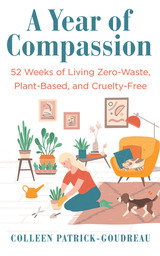 A Year of Compassion: 52 Weeks of Living Zero-Waste, Plant-Based, and Cruelty-Free
Colleen Patrick-Goudreau
Island Press, 2025 Affectionately known as the Joyful Vegan, Colleen Patrick-Goudreau has been a leading voice in compassionate living for over two decades, guiding countless people to achieve lasting health and purpose. Now, with A Year of Compassion, she shares simple, effective, and impactful actions we can all take to make humankind a little kinder—by protecting animals, supporting the planet, and optimizing our own health.
Colleen lives by the motto: Don’t do nothing because you can’t do everything. Do something. Anything. She knows we’ll never be perfect in this imperfect world, but with small, incremental changes, we can each contribute to big change. One week you might declutter your fridge to cut down on food waste, while the next you could store some basic supplies in your car to help an injured animal. Another week you might explore eating by color to boost your nutrient intake, while the next you can take steps to stop junk mail in its tracks.
Feel free to skip around, choosing your own sustainable adventure. Whether you read A Year of Compassion cover to cover or take it week by week, Colleen is there to encourage, inspire, and motivate, helping you become the change you want to see in the world.
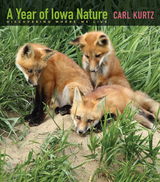 A Year of Iowa Nature: Discovering Where We Live
Carl Kurtz
University of Iowa Press, 2014 Every Sunday evening for almost ten years, Iowa photographer and naturalist Carl Kurtz has e-mailed a photo and an extended caption to hundreds of outdoor enthusiasts. Engaging and informative, the photos focus on the world around and away from his tallgrass prairie homeplace: snow buntings in a blizzard, maple leaves in fall, migrating snow geese and red-winged blackbirds and monarchs, prairie spiderworts in spring bloom, leopard frogs loafing on waterlily leaves, northern flickers feeding young, and all the inhabitants and moods of the passing seasons. Now, in A Year of Iowa Nature, he presents fifty-five of his favorite photos along with an evocative introduction that urges us to go forth and discover the beauty in our own backyards.
Concentrating on Iowa’s tallgrass prairie, Kurtz also points his viewfinder toward the great variety of natural habitats in the eastern United States. Arranged chronologically throughout the year, the fifty-five color photos and their accompanying narratives rotate through the seasons like a nature film. The winter months showcase a frost-covered white-tailed deer, cedar waxwings feeding on winter apples, a muskrat on the surface of an icy pond, and dune-like snowdrifts. Kurtz’s palette warms up in springtime with stunning photos of Virginia bluebells, fox cubs, juvenile chipmunks, and ruddy ducks. Summer brings a host of butterflies, frogs, and goldfinches as well as blooming prairie plants. The colors become more subdued in fall with the change in light, revealing the rich hues of Indian grass and big bluestem and the subtle plumage of migrating warblers.
Just as Kurtz’s Practical Guide to Prairie Reconstruction offers an indispensable manual for individuals and land managers working to create a diverse prairie community, so does A Year of Iowa Nature point the way toward a sincere, month-by-month appreciation of the natural world around us.
The Year of Mourning: A Jewish Journey
Lisa D. Grant
Central Conference of American Rabbis, 2023 The Jewish mourning process is a voyage through pain, brokenness, comfort, resilience, acceptance, and even gratitude. The Year of Mourning: A Jewish Journey offers an expansive array of resources—stories, songs, study texts, poetry, and prayers—to lovingly and patiently guide the bereaved through the first year after their loss. Each week the mourner is encouraged to focus on a particular theme to deepen their Kaddish practice. The book also includes new rituals for shivah, sh’loshim, unveiling, and yahrzeit. The Year of Mourning helps support individuals to regain their grounding after loss and, through the richness of Jewish tradition, deepen their connections to memories of loved ones and to others in the community who are walking a similar path.
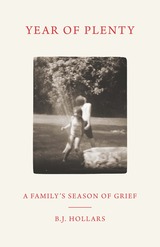 Year of Plenty: A Family's Season of Grief
B.J. Hollars
University of Wisconsin Press, 2024 In November 2020, B.J. Hollars answered a call from his father-in-law while teaching. “When will you be home?” Steve asked. “I have news.”
So began the Hollars family’s year of plenty—a cancer diagnosis on top of the ongoing COVID pandemic, then feelings of falling short as parents, partners, and people. While Hollars traces his family’s daily devastations alongside his father-in-law’s decline, he recounts the small mercies along the way: birthdays, campfires, fishing trips, kayaking, and fireflies. As he, his wife, Meredith, and their three young children grapple with how best to say goodbye to the person they love, they are forced to reassess their own lives. How can we make the most of our time, they wonder, when time feels so short?
Written in vignettes and accompanied by photographs and family interviews, Year of Plenty provides a poignant and unflinching account of how death separates us not only from the people we love but from places and memories too. Hollars explores how death’s all-consuming weight has the potential to fracture—rather than strengthen—even those relationships we think we know the best. Ultimately, he cracks wide personal moments from his own life and allows the world to peer in.
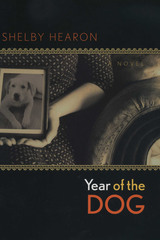 Year of the Dog: A Novel
By Shelby Hearon
University of Texas Press, 2007 When her husband dumps her for an old girlfriend and sets all of Peachland, South Carolina, gossiping, Janey Daniels has to get away—far away—for a "sabbatical" year. She flees to Burlington, Vermont, home of Aunt May, her mother's only living relative. There she adopts Beulah, a Labrador puppy in training to become a companion dog for the blind. Not for a moment does Janey suspect that this "year of the dog" will change her life forever.
Shelby Hearon is an acknowledged master at illuminating the nuances of relationships. In Year of the Dog, she explores the surprising ways that the heart heals after a betrayal. While Janey is training Beulah, Beulah leads Janey to a new love, James Maarten, a smart, "fidgety" teacher they meet at the dog park. As Janey soon discovers, James has suffered a betrayal of his own that makes it hard for him to open up and trust her with even the smallest details of his past. While Janey tries to help James, she also reaches out to her enigmatic Aunt May, a retired librarian reputed to be the friend, perhaps even the lover, of popular mystery writer Bert Greenwood. When Janey attempts to solve the twin mysteries of why her great aunt has distanced herself from the family—and what her true relationship is with Bert Greenwood—Beulah provides the clues that lead Janey to uncover the secrets of her aunt's life. By the time Beulah's stay with Janey comes to an end, the people whose lives she's linked will discover that healing and reconciliation can come in the most unexpected ways.
The Year of the Femme
Cassie Donish
University of Iowa Press, 2019 “At the edge of a field a thought waits,” writes Cassie Donish, in her collection that explores the conflicting diplomacies of body and thought while stranding us in a field, in a hospital, on a shoreline. These are poems that assess and dwell in a sensual, fantastically queer mode. Here is a voice slowed by an erotics suffused with pain, quickened by discovery. In masterful long poems and refracted lyrics, Donish flips the coin of subjectivity; different and potentially dangerous faces are revealed in turn. With lyricism as generous as it is exact, Donish tunes her writing as much to the colors, textures, and rhythms of daily life as to what violates daily life—what changes it from within and without.
The Year of the Gorilla
George B. Schaller
University of Chicago Press, 1988 "A sensitive and articulate observer, [Schaller] is at his best when he is describing the forest itself . . . . This is an exciting book. Although Schaller feels that this is 'not an adventure book,' few readers will be able to agree."—Irven DeVore, Science
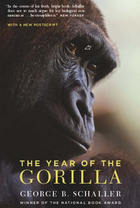 The Year of the Gorilla
George B. Schaller
University of Chicago Press, 2010 This seminal work chronicles George B. Schaller’s two years of travel and observation of gorillas in East and Central Africa in the late 1950s, high in the Virunga volcanoes on the Zaire-Rwanda-Uganda border. There, he learned that these majestic animals, far from being the aggressive apes of film and fiction, form close-knit societies of caring mothers and protective fathers watching over playful young. Alongside his observations of gorilla society, Schaller celebrates the enforced yet splendid solitude of the naturalist, recounts the adventures he experienced along the way, and offers a warning against poaching and other human threats against these endangered creatures. This edition features a postscript detailing Schaller’s more recent visits with gorillas, current to 2009. “Whether the author is tracking gorillas, slipping past elephant herds on narrow jungle paths, avoiding poachers’ deadfalls, or routing Watusi invaders, this is an exciting book. Although Schaller feels that this is ‘not an adventure book,’ few readers will be able to agree.”—Irven DeVore, Science
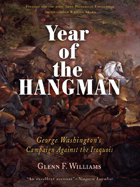 Year of the Hangman: George Washington's Campaign Against the Iroquois
Glenn F. Williams
Westholme Publishing, 2007 Winner of the 2005 Thomas Fleming Award for the Best Book in American Revolutionary War History
Finalist for the Army Historical Foundation Distinguished Writing Award
After two years of fighting, Great Britain felt confident that the American rebellion would be crushed in 1777, the "Year of the Hangman." Britain devised a bold new strategy. Turning its attention to the colonial frontiers, especially those of western New York, Pennsylvania, and Virginia, Britain enlisted its provincial rangers, Tories, and allied warriors, principally from the Iroquois Confederacy, to wage a brutal backwoods war in support of General John Burgoyne's offensive as it swept southward from Canada in an attempt to cut the colonies in half, divert the Continental Army, and weaken its presence around British-occupied New York City and Philadelphia. Burgoyne's defeat at Saratoga sent shock waves through the British command. But the efforts along the frontier under the direction of Sir John Johnson, Colonel John Butler, and the charismatic Mohawk leader, Joseph Brant, appeared to be impairing the American ability to conduct the war. Destroying Patriot settlements and farms across hundreds of miles of frontier, the British and Indian forces threatened to reduce Continental army enlistment, and more importantly, precious food supplies. Following the massacres at the well-established colonial settlements of Wyoming, Pennsylvania, and Cherry Valley, New York, the Continental Congress persuaded General George Washington to conduct a decisive offensive to end the threat once and for all. Brewing for years, the conflict between the Iroquois and colonists would now reach its deadly climax. Charging his troops "to not merely overrun, but destroy," Washington devised a two-prong attack to exact American revenge. The largest coordinated American military action against American Indians in the war, the campaign shifted the power in the east, ending the political and military influence of the Iroquois, forcing large numbers of loyalist to flee to Canada, and sealing Britain's fateful decision to seek victory in the south. In Year of the Hangman: George Washington's Campaign Against the Iroquois, historian Glenn F. Williams recreates the riveting events surrounding the action, including the checkered story of European and Indian alliances, the bitter frontier wars, and the bloody battles of Oriskany and Newtown.
Year of the Heroic Guerrilla: World Revolution and Counterrevolution in 1968
Robert V. Daniels
Harvard University Press From Paris to Peking, from Saigon to Washington, the pillars of the postwar world tottered on the brink of collapse in 1968. Year of the Heroic Guerrilla is the first global analysis of that universal upheaval.
Daniels vividly depicts the great crises of that era: the Tet offensive and the abdication of Lyndon Johnson; the denouncement of the counterculture; the fissuring of the civil rights movement and the assassination of Martin Luther King, Jr.; the student revolt at Columbia University; the May uprising in France that nearly overthrew the Fifth Republic; the "cultural revolution" in China; the chilling of the Prague Spring by the Soviet army; and, finally, the convention and riots in Mayor Daley's Chicago, signaling the downturn of the revolutionary spirit in America.
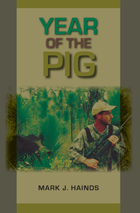 Year of the Pig: Hunting Feral Hogs
Mark J. Hainds
University of Alabama Press, 2011 Year of the Pig is a personal account of one avid hunter's pursuit of wild pigs in eleven American states. Mark Hainds tied his mission to the Chinese calendar's Year of the Pig in 2007 and journeyed through longleaf forests, cypress swamps, and wiliwili forests in search of his prey. He used a range of weapons--black-powder rifle, bow and arrow, knife, and high-powered rifle--and various methods to stalk his quarry through titi, saw palmetto, privet hedge, and blue palms.
Introduced pig populations have wreaked havoc on ecosystems the world over. Non-native to the Western Hemisphere, pigs originally arrived in the southeast with De Soto's entrada and in the Hawaiian Archipelago on the outriggers of South Pacific islanders. In America feral hogs are considered pests and invaders because of their omnivorous diet and rooting habits that destroy both fragile native species and agricultural cropland.
Appealing to hunters and adventure readers for its sheer entertainment, Year of the Pig will also be valuable to farmers, land managers, and environmentalists for its broad information and perspective on the topic.
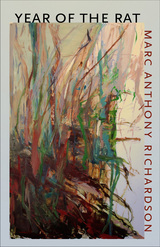 Year of the Rat
Marc Anthony Richardson
University of Alabama Press, 2016 2017 American Book Award Winner
Winner of the FC2 Ronald Sukenick Innovative Fiction Prize
Marc Anthony Richardson's Year of the Rat is a poignant and riveting literary debut narrated in an unabashedly exuberant voice.
In Year of the Rat, an artist returns to the dystopian city of his birth to tend to his invalid mother only to find himself torn apart by memories and longings. Narrated by this nameless figure whose rants, reveries, and Rabelaisian escapades take him on a Dantesque descent into himself, the story follows him and his mother as they share a one-bedroom apartment over the course of a year.
Despite his mother’s precarious health, the lingering memories of a lost love, an incarcerated sibling, a repressed sexuality, and an anarchic inability to support himself, he pursues his dream of becoming an avant-garde artist. His prospects grow dim until a devastating death provides a painful and unforeseeable opportunity. With a voice that is poetic and profane, ethereal and irreverent, cyclical and succinct, he roams from vignette to vignette, creating a polyphonic patchwork quilt of a family portrait.
Year of the Snake
Lee Ann Roripaugh
Southern Illinois University Press, 2004 In her second collection of poems, Lee Ann Roripaugh probes themes of mixed-race female identities, evoking the molting processes of snakes and insects who shed their skins and shells as an ongoing metaphor for transformation of self. Intertwining contemporary renditions of traditional Japanese myths and fairy tales with poems that explore the landscape of childhood and early adolescence, she blurs the boundaries between myth and memory, between real and imagined selves. This collection explores cultural, psychological, and physical liminalities and exposes the diasporic arc cast by first-generation Asian American mothers and their second-generation daughters, revealing a desire for metamorphosis of self through time, geography, culture, and myth.
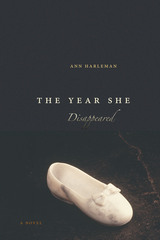 The Year She Disappeared: A Novel
By Ann Harleman
University of Texas Press, 2008 Nan and her four-year-old granddaughter Jane are taking their first airplane trip together, flying from Seattle to the East Coast. But this is no ordinary excursion. Nan is abducting Jane.
Nan's own daughter, Alex, believes Jane's father has been sexually abusing her, and she's asked Nan to take her away, to hide her. But when she and Jane arrive in Providence, Rhode Island, things begin to go wrong. The old friend whom Nan expected to stay with has vanished. Her son-in-law is on her trail. And Alex disappears.
"I'm too old for this!" Nan thinks, in furious, self-pitying despair. She wasn't a good wife; she wasn't a good mother. Now she's stranded in a strange city, without friends or money or even her own identity, in sole charge of a very unhappy little girl. When her new life offers new friends, new work, and even a new lover, she must decide whom to trust.
The Year She Disappeared explores the possibility—and the price—of late blooming love. Will the trials Nan faces during her year on the lam break her? Or will she discover who she really is?
The Year They Gave Women the Priesthood and Other Stories
Michael Fillerup
Signature Books, 2022 In this new collection of short fiction, award-winning author Michael Fillerup explores the shuttered landscapes of Mormon culture where feel-good clichés falter and the faithful are scorched in the refiner’s fire. The seventeen stories in Fillerup’s new compilation run the gamut in length, style, and voice, but all share an unapologetic authenticity. Whether examining the hypocrisy of sexism, the crucible of forgiveness, or the heartbreak of parenthood, Fillerup leads readers through a labyrinth of emotions but never feeds them to the Minotaur. Light shines at the end of each tortuous tunnel and, to the thoughtful reader, genuine joy.
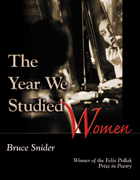 Year We Studied Women
Bruce Snider
University of Wisconsin Press, 2003 In this intimate first collection Bruce Snider explores the intricacies of memory, loss, and identity in poems about everything from algebra to sperm to lipstick. A farmer finds the body of a dead child, a boy watches his mother get ready for a date, a woman with cancer shops for a wig, an overweight sister shares a cupcake with her little brother. In the book’s longest and most complex poem a tarot card reading excavates the relationship between a son and his distant, often violent father. Sometimes funny, always big-hearted and inventive, Snider catalogues the minutiae of daily life with language that is plainspoken yet strongly imagistic, weaving together both public and private moments as he maps one man’s longing for transformation. It’s an attempt to reconcile it all—past and present, fear and desire, self and sexuality—making the barest symbols of maleness and femaleness into their own deeply personal language.
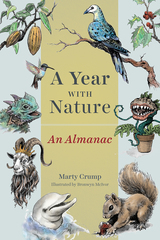 A Year with Nature: An Almanac
Marty Crump
University of Chicago Press, 2018 A Year with Nature is an almanac like none you’ve ever seen: combining science and aesthetics, it is a daily affirmation of the extraordinary richness of biodiversity and our enduring beguilement by its beauty. With a text by herpetologist and natural history writer Marty Crump and a cornucopia of original illustrations by Bronwyn McIvor, this quirky quotidian reverie gazes across the globe, media, and time as it celebrates date-appropriate natural topics ranging from the founding of the National Park Service to annual strawberry, garlic, shrimp, hummingbird, and black bear festivals.
With Crump, we mark the publication of classics like Carson’s Silent Spring and White’s Charlotte’s Web, and even the musical premiere of Tchaikovsky’s Swan Lake. We note the discovery of the structure of DNA and the mountain gorilla, the rise of citizen science projects, and the work of people who’ve shaped how we view and protect nature—from Aristotle to E. O. Wilson. Some days feature US celebrations, like National Poinsettia Day and National Cat Day; others highlight country-specific celebrations, like Australia’s Wombat Day and Thailand’s Monkey Buffet Festival, during which thousands of macaques feast on an ornately arranged spread of fruits and vegetables. Crump also highlights celebrations that span borders, from World Wildlife Conservation Day to International Mountain Day and global festivities for snakes, sea turtles, and chocolate. Interweaving fascinating facts on everything from jellyfish bodies to monthly birth flowers with folkloric entries featuring the Loch Ness Monster, unicorns, and ancient Greek, Roman, and Egyptian mythology, the almanac is as exhaustive as it is enchanting.
A Year with Nature celebrates the wonder and beauty of our natural world as we have expressed it in visual arts, music, literature, science, natural history, and everyday experience. But more than this, the almanac’s vignettes encourage us to contemplate how we can help ensure that future generations will be able to enjoy the landscapes and rich biodiversity we so deeply cherish.
A Year without Months
Charles Dodd White
West Virginia University Press, 2022 “A beautiful, powerful book. Read it and be changed.”—Jim Minick This collection of fourteen essays by Charles Dodd White—praised by Silas House as “one of the best prose stylists of Appalachian literature”—explores the boundaries of family, loss, masculinity, and place. Contemplating the suicides of his father, uncle, and son, White meditates on what it means to go on when seemingly everything worth living for is lost. What he discovers is an intimate connection to the natural world, a renewed impulse to understand his troubled family history, and a devotion to following the clues that point to the possibility of a whole life. Avoiding easy sentiment and cliché, White’s transformative language drives toward renewal. A Year without Months introduces lively and memorable characters, as the author draws on a wide range of emotions to analyze everything, including himself.
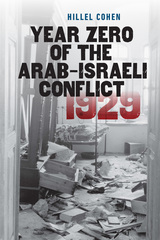 Year Zero of the Arab-Israeli Conflict 1929
Hillel Cohen
Brandeis University Press, 2015 In late summer 1929, a countrywide outbreak of Arab-Jewish-British violence transformed the political landscape of Palestine forever. In contrast with those who point to the wars of 1948 and 1967, historian Hillel Cohen marks these bloody events as year zero of the Arab-Israeli conflict that persists today. The murderous violence inflicted on Jews caused a fractious—and now traumatized—community of Zionists, non-Zionists, Ashkenazim, and Mizrachim to coalesce around a unified national consciousness arrayed against an implacable Arab enemy. While the Jews unified, Arabs came to grasp the national essence of the conflict, realizing that Jews of all stripes viewed the land as belonging to the Jewish people. Through memory and historiography, in a manner both associative and highly calculated, Cohen traces the horrific events of August 23 to September 1 in painstaking detail. He extends his geographic and chronological reach and uses a non-linear reconstruction of events to call for a thorough reconsideration of cause and effect. Sifting through Arab and Hebrew sources—many rarely, if ever, examined before—Cohen reflects on the attitudes and perceptions of Jews and Arabs who experienced the events and, most significantly, on the memories they bequeathed to later generations. The result is a multifaceted and revealing examination of a formative series of episodes that will intrigue historians, political scientists, and others interested in understanding the essence—and the very beginning—of what has been an intractable conflict.
 The Yearning Feed
Manuel Paul Lopez
University of Notre Dame Press, 2013 The poems in Manuel Paul López's The Yearning Feed, winner of the 2013 Ernest Sandeen Prize in Poetry, are embedded in the San Diego/Imperial Valley regions, communities located along the U.S.-Mexico border. López, an Imperial Valley native, considers La Frontera, or the border, as magical, worthy of Macondo-like comparisons, where contradictions are firmly rooted and ironies play out on a daily basis. These poems synthesize López’s knowledge of modern and contemporary literature with a border-child vernacular sensibility to produce a work that illustrates the ongoing geographical and literary historical clash of cultures.
With humor and lyrical intensity, López addresses familial relationships, immigration, substance abuse, violence, and, most importantly, the affirmation of life. In the poem titled "Psalm," the speaker experiences a deep yearning to relearn his family's Spanish tongue, a language lost somewhere in the twelve-mile stretch between his family's home, his school, and the border. The poem “1984” borrows the prose-poetics of Joe Brainard, who was known for his collage and assemblage work of the 1960s and 1970s, to describe the poet’s bicultural upbringing in the mid-1980s. Many of the poems in The Yearning Feed use a variety of media, techniques, and cultural signifiers to create a hybrid visual language that melds “high” art with "low." The poems in The Yearning Feed establish López as a singular and revelatory voice in American poetry, one who challenges popular perceptions of the border region and uses the unique elements of the rich border experience to inform and guide his aesthetics.
"In this eclectic collection, López brings readers to the edge of their convictions then redraws the borders, leaving us to find our own way back home. He has an uncanny ability to drop dynamic characters into situations where they face universal moral dilemmas. These pieces are inundated with haunting landscapes of dialogue, poignant juxtapositions, deliberate capriciousness, and spontaneous humor that will immigrate into your consciousness." —Rebecca Schumejda, author of Cadillac Men
"Manuel Paul López's The Yearning Feed evokes the rich, beautiful, and bizarre geocultural (and psychological) tapestry that is the California Imperial Valley. Like some enchanted reincarnation of Dante Alighieri (or Virgil), he guides his reader through the hot, sandy expanses right at the heart of the Americas. The frontier dividing and defining the United States and Mexico reaches new heights in the diverse poetic and prose portraits found in this remarkable new collection." —William Anthony Nericcio, author of Tex[t]-Mex: Seductive Hallucinations of the "Mexican" in America
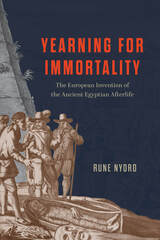 Yearning for Immortality: The European Invention of the Ancient Egyptian Afterlife
Rune Nyord
University of Chicago Press, 2025 How our understanding of the ancient Egyptian afterlife was shaped by Christianity.
Many of us are familiar with the ancient Egyptians’ obsession with immortality and the great efforts they made to secure the quality of their afterlife. But, as Rune Nyord shows, even today, our understanding of the Egyptian afterlife has been formulated to a striking extent in Christian terms. Nyord argues that this is no accident, but rather the result of a long history of Europeans systematically retelling the religion of ancient Egypt to fit the framework of Christianity. The idea of ancient Egyptians believing in postmortem judgment with rewards and punishments in the afterlife was developed during the early modern period through biased interpretations that were construed without any detailed knowledge of ancient Egyptian religion, hieroglyphs, and sources.
As a growing number of Egyptian images and texts became available through the nineteenth century, these materials tended to be incorporated into existing narratives rather than being used to question them. Against this historical background, Nyord argues that we need to return to the indigenous sources and shake off the Christian expectations that continue to shape scholarly and popular thinking about the ancient Egyptian afterlife.
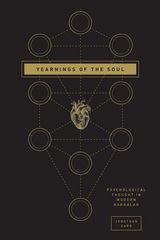 Yearnings of the Soul: Psychological Thought in Modern Kabbalah
Jonathan Garb
University of Chicago Press, 2015 In Yearnings of the Soul, Jonathan Garb uncovers a crucial thread in the story of modern Kabbalah and modern mysticism more generally: psychology. Returning psychology to its roots as an attempt to understand the soul, he traces the manifold interactions between psychology and spirituality that have arisen over five centuries of Kabbalistic writing, from sixteenth-century Galilee to twenty-first-century New York. In doing so, he shows just how rich Kabbalah’s psychological tradition is and how much it can offer to the corpus of modern psychological knowledge.
Garb follows the gradual disappearance of the soul from modern philosophy while drawing attention to its continued persistence as a topic in literature and popular culture. He pays close attention to James Hillman’s “archetypal psychology,” using it to engage critically with the psychoanalytic tradition and reflect anew on the cultural and political implications of the return of the soul to contemporary psychology. Comparing Kabbalistic thought to adjacent developments in Catholic, Protestant, and other popular expressions of mysticism, Garb ultimately offers a thought-provoking argument for the continued relevance of religion to the study of psychology.
 The Years of Blood: Stories from a Reporting Life in Latin America
Alma Guillermoprieto
Duke University Press, 2025 For forty years and more Alma Guillermoprieto has wandered tirelessly over the countries of Latin America, interviewing assassins and the families of their victims, talking to street sweepers and artists, rowdy carnival makers and thoughtful politicians (and plenty of rowdy politicians as well). Guillermoprieto draws out common threads in different contexts, like the effects of The War on Drugs in rural and poverty-stricken regions and the experiences of people mixed up in the fray of state- or cartel-sponsored violence. At the same time, she shows how Latin American art translates nostalgia and pain into great beauty. In The Years of Blood, the third volume of her collected reporting, she completes her complex and always compelling portrait of the Latin America of our times, in all its tragedy and glory, as it enters a new era of populism and demagoguery, and tries, yet again, to answer the great unsolved question: How do we change our future so that it does not so exhaustingly resemble our past?
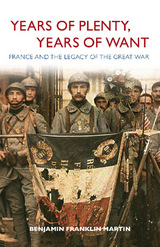 Years of Plenty, Years of Want: France and the Legacy of the Great War
Benjamin Franklin Martin
Northern Illinois University Press, 2013 The Great War that engulfed Europe between 1914 and 1918 was a catastrophe for France. French soil was the site of most of the fighting on the Western Front. French dead were more than 1.3 million, the permanently disabled another 1.1 million, overwhelmingly men in their twenties and thirties. The decade and a half before the war had been years of plenty, a time of increasing prosperity and confidence remembered as the Belle Epoque or the good old days. The two decades that followed its end were years of want, loss, misery, and fear. In 1914, France went to war convinced of victory. In 1939, France went to war dreading defeat. To explain the burden of winning the Great War and embracing the collapse that followed, Benjamin Martin examines the national mood and daily life of France in July 1914 and August 1939, the months that preceded the two world wars. He presents two titans: Georges Clemenceau, defiant and steadfast, who rallied a dejected nation in 1918, and Edouard Daladier,hesitant and irresolute, who espoused appeasement in 1938 though comprehending its implications. He explores novels by a constellation of celebrated French writers who treated the Great War and its social impact, from Colette to Irène Némirovsky, from François Mauriac to Antoine de Saint-Exupéry. And he devotes special attention to Roger Martin du Gard, the1937 Nobel Laureate, whose roman-fleuve The Thibaults is an unrivaled depiction of social unraveling and disillusionment. For many in France, the legacy of the Great War was the vow to avoid any future war no matter what the cost. They cowered behind the Maginot Line, the fortifications along the eastern border designed to halt any future German invasion. Others knew that cost would be too great and defended the “Descartes Line”: liberty and truth, the declared values of French civilization. In his distinctive and vividly compelling prose, Martin recounts this struggle for the soul of France.
Yeats: An Annual of Critical and Textual Studies, Volume XII, 1994
Richard J. Finneran, Editor
University of Michigan Press, 1996 This latest volume of Yeats continues the tradition of excellence with nine new critical essays and a host of book reviews. Highlights include "Yeats at Fifty," a recent essay by A. Walton Litz; a consideration of the art in the Cuala Press Broadsides by Elizabeth Bergmann Loizeaux; and a discussion of the textual and interpretive history of The Green Helmet and Other Poems by David Holdeman. Other contributors include Brian Arkins on style in Yeats's poetry, David Clark on "Her Vision in a Wood," Peter Denman on Ferguson and Yeats, Shelley Sharp on Yeats's theater, and Janis E. Tedesco on the sexual dynamic of A Vision. Rounding out the volume are the annual bibliography of Yeats's scholarship by K. P. S. Jochum and a compilation of dissertation abstracts.
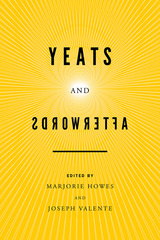 Yeats and Afterwords
Marjorie Howes
University of Notre Dame Press, 2014 In Yeats and Afterwords, contributors articulate W. B. Yeats’s powerful, multilayered sense of belatedness as part of his complex literary method. They explore how Yeats deliberately positioned himself at various historical endpoints—of Romanticism, of the Irish colonial experience, of the Ascendancy, of civilization itself—and, in doing so, created a distinctively modernist poetics of iteration capable of registering the experience of finality and loss. While the crafting of such a poetics remained a constant throughout Yeats’s career, the particular shape it took varied over time, depending on which lost object Yeats was contemplating. By tracking these vicissitudes, the volume offers new ways of thinking about the overarching trajectory of Yeats’s poetic engagements.
Yeats and Afterwords proceeds in three stages, involving past-pastness, present-pastness, and future-pastness. The first, “The Last Romantics,” examines how Yeats repeats classic motifs and verbal formulations from his literary forebears in order to express the circumscribed cultural options with which he struggles. The essays in this section often uncover Yeats’s relation to sources and precursors that are surprising or have been relatively neglected by scholars. The second section, “Yeats and Afterwords,” looks at how Yeats subjects his own past sentiments, insights, and styles to critical negation, crafting his own afterwords in various ways. The last section, “Yeats’s Aftertimes,” explores how, thanks to the stature Yeats achieved through its invention, his style of belatedness itself comes to be reiterated by other writers. Yeats is a towering figure in literary history, hard to follow and harder to avoid, and later writers often found themselves producing words that were, in some sense, his afterwords.
"This ground-breaking collection of essays examines Yeats's sense of historical belatedness as theme, as trope, in formal embodiments such as the afterword, and in his strong critical shaping of literary history. In doing so, it historicizes Yeats's own sense of history with unparalleled depth, while seriously acting on the acceptance that form is itself historical. In showing how Yeats's moulding of the past was also the creation of a future, it offers a range of productive new starting-points for the study of this great poet." —Edward Larrissy, emeritus, Queen's University, Belfast
"Although Yeats and Afterwords focuses broadly on questions of inheritance and legacy, it marks a new departure because it re-conceptualizes belatedness in a more complex and more theoretically useful manner than prior studies. What impressed me most about the collection is that the theoretical paradigms introduced at the outset are at once defining and fluid. The editors conceptualize belatedness in such a way that this insight gives structure to the volume, even as it allows for a multiplicity of readings. This volume will have a major impact on Yeats studies and will be useful for scholars working more broadly in Irish and modernist studies." —Rob Doggett, SUNY Geneseo
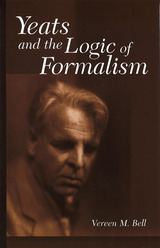 Yeats and the Logic of Formalism
Vereen M. Bell
University of Missouri Press, 2006
Yeats and the Logic of Formalism deals with formalism as a philosophy in Yeats’s works and how that in turn affects both his art and his social vision. Vereen M. Bell’s linking of “formalism” and “philosophy” stems from a meditation by Yeats in a manuscript note: “I am always feeling a lack of life's own values behind my
thought. They should have been there before the stream began, before it became necessary to let the work create its values.” In Bell’s reading, formalism is not simply a philosophy of art but a philosophy of life as directed by art—existential at its source and unpredictably political in its applications.
Bell examines formalism as an ideology and evaluates its credibility in Yeats's practice in relation to other theoretical discourses and in the context of the turbulent cultural and historical circumstances under which Yeats worked. He invokes and elaborates upon Edward Said’s reading of Yeats as a special kind of colonial subject. He revisits in this context the issue of how much Yeats and Nietzsche have in common and argues, in the manner of J. Hillis Miller, that the primordial is for Yeats what formalism ultimately sets itself against.
Yeats and the Logic of Formalism mediates between older, traditional readings and recent materialist critiques of Yeats’s work in an effort to restore a balanced perspective. The author centers most of his discussion on Yeats's poems as acts of thought, both as poetry and as a body of ideas. Within this context he
maintains that Yeats as a modernist is essentially aligned with Wallace Stevens in the project of creating supreme fictions. Formalism in this function, he argues, is an ideology without content. As such, it compelled Yeats to remain unsettled in his outlook. On the other hand, it enabled him, as Richard Ellmann has pointed out, to continually adapt and readapt "himself to the changing conditions of his body and mind and of the outside world."
Yeats's Shakespeare
Rupin W. Desai
Northwestern University Press, 1971 In Yeats's Shakespeare, the first full-length study of Yeats’s interest in Shakespeare, Rupin W. Desai explores how Shakespearean works influenced Yeats’s poetry and mythological drama. Exploring Shakespeare’s sonnets and Yeats’s poetry, Desai illustrates the deep degree to which Yeats identifies with Shakespeare, even to the extent of including some of Shakespeare’s heroes in his own late poetry. Yeats’s Shakespeare also includes an appendix that lists in detail all of Yeats’s references to Shakespeare’s works.
YEET!
jason b. crawford
Omnidawn, 2025 Afrofuturist poetry that envisions Black people finding new worlds of freedom.
Following the traditions of Eve L. Ewing, Rio Cortez, and Douglas Kearney, jason b. crawford’s YEET! envisions the Black community lifted off the earth and set free towards the stars. These poems ask what a free Black people would look like and how we might achieve such a thing. This collection presents a new take on Afrofuturism and utopianism. Rather than looking to a future of technological change, it steps years ahead to show how people are happier once they are no longer owned. These poems speak to racism, gun violence, colonization, global warming, flight, joy, friendship, and noise. This is a book about creating new worlds without the systems of supremacy that held down the old one.
YEET! is the winner of the 2023 Omnidawn 1st/2nd Poetry Book Contest, chosen by Sawako Nakasayu.
Yehuda Amichai: The Making of Israel's National Poet
Nili Scharf Gold
Brandeis University Press, 2008 Yehuda Amichai is one of the twentieth century’s (and Israel’s) leading poets. In this remarkable book, Nili Scharf Gold offers a profound reinterpretation of Amichai’s early works and reconstructs his poetic biography. Her close reading of his oeuvre, untapped notebooks, and a cache of unpublished letters to a woman identified as Ruth Z. that Gold discovered convincingly demonstrates how the poet’s German past infused his work, despite his attempts to conceal it as he adopted an Israeli identity.
 Yellow Future: Oriental Style in Hollywood Cinema
Jane Chi Hyun Park
University of Minnesota Press, 2010 Yellow Future examines the emergence and popularity of techno-oriental representations in Hollywood cinema since the 1980s, focusing on the ways East Asian peoples and places have become linked with technology to produce a collective fantasy of East Asia as the future. Jane Chi Hyun Park demonstrates how this fantasy is sustained through imagery, iconography, and performance that conflate East Asia with technology, constituting what Park calls oriental style.
Park provides a genealogy of oriental style through contextualized readings of popular films-from the multicultural city in Blade Runner and the Japanese American mentor in The Karate Kid to the Afro-Asian reworking of the buddy genre in Rush Hour and the mixed-race hero in The Matrix. Throughout these analyses Park shows how references to the Orient have marked important changes in American popular attitudes toward East Asia in the past thirty years, from abjection to celebration, invisibility to hypervisibility.
Unlike other investigations of racial imagery in Hollywood, Yellow Future centers on how the Asiatic is transformed into and performed as style in the backdrop of these movies and discusses the significance of this conditional visibility for representations of racial difference.
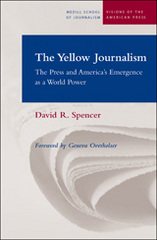 The Yellow Journalism: The Press and America's Emergence as a World Power
David R. Spencer
Northwestern University Press, 2007 When a case containing dismembered human remains surfaced in New York's East River in June of 1897, the publisher of the New York Journal--a young, devil-may-care millionaire named William Randolph Hearst--decided that his newspaper would "scoop" the city's police department by solving this heinous crime. Pulling out all the stops, Hearst launched more than a journalistic murder investigation; his newspaper's active intervention in the city's daily life, especially its underside, marked the birth of the Yellow Press. In a work that studies the rise and fall of this phenomenon, David R. Spencer documents the fierce competition that characterized yellow journalism, the social realities and trends that contributed to its success (and its ultimate demise), its accomplishments for good or ill, and its long-term legacy.
Most notable among Hearst's competitors was New York City's The World, owned and managed by a European Jewish immigrant named Joseph Pulitzer. The Yellow Journalism describes how these two papers and others exploited the scandal, corruption, and crime among the city's most influential citizens, and its most desperate inhabitants--a policy that made this "journalism of action" remarkably effective, not just as a commercial force, but also as an advocate for the city's poor and defenseless. Spencer shows how many of the innovations first introduced during this period--from investigative reporting to the use of color, entertainment news, and cartoons in papers--have had a lasting effect on journalism; and how media in our day reflects the Yellow Press's influence, but also its threatened irrelevance within the broader realities of contemporary society.
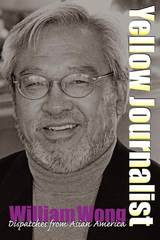 Yellow Journalist: Dispatches from Asian America
William Wong
Temple University Press, 2001 "For three decades, William Wong has been America's most energetic and entertaining chronicler of the Asian diaspora and its effects on politics, culture, business, sports, dress, diet, and language. Like other great humorists, he exposes the painful absurdities that plague each new wave of immigrant families as they enrich the national character, from Wong's own adventurous parents to Tiger Woods. Some of these pieces offer surprising insights on geopolitics and others explore the legal and social consequences of racial discrimination, but my favorites are the playful essays, including the classic 'So That's Why I Can't Lose Weight.' "
--Jay Mathews, Washington Post reporter and columnist, and author of Class Struggle
Who are Asian Americans? Are they the remnants of the "yellow peril" portrayed in the media through stories on Asian street gangs, unscrupulous political fundraisers, and crafty nuclear spies? Or are they the "model minority" that the media present as consistently outranking European Americans in math scores and violin performances?
In this funny, sobering, and always enlightening collection, journalist William Wong comments on these and other anomalies of the Asian American experience. From its opening tribute to the Oakland Chinatown of Wong's childhood to its closing tribute to Tiger Woods, Yellow Journalist portrays the many-sided legacies of exclusion and discrimination. The stories, columns, essays, and commentaries in this collection tackle such persistent problems as media racism, criminality, inter-ethnic tensions, and political marginalization. As a group, they make a strong case for the centrality of the Asian American historical experiences in U.S. race relations.
The essays cover many subjects, from the personal to policy, from the serious to the silly. You will learn a little Asian American history and a lot about the nuances and complexities of the contemporary Asian American experience. If there is an overriding theme of these stories and essays, it is the multi-faceted adaptation of ethnic Asians to the common American culture, the intriguing roles that they play in our society, and the quality of their achievements to contribute to a better society.
Bill Wong's high school journalism teacher took him aside during his senior year and told him he would have to be "twice as good" to succeed at his chosen profession. Succeed he did, and "twice as good" he is. As Darrell Hamamoto remarks in his Foreword, "'Chinaman,' Chinese American, Asian American; any way you slice it, Bill Wong is one straight-up righteous Yellow Man."
"One of the advantages of having a writer of Bill Wong's talent around is that we don't have to depend upon intermediaries and go-betweens to give us insights about issues affecting Asian-Americans. He is often entertaining, and ironic, but underneath it all is a serious mind devoted to shattering myths about one of our fastest growing minorities."
--Ishmael Reed, author of The Reed Reader
"It is about time that America meet William Wong--an icon in journalism whose experience as a second generation Chinese-American has given him a unique lens through which life in America can be examined. For almost two decades, his columns in the Oakland Tribune and other San Francisco bay area newspapers have captured a different kind of reality about some of our most important social, cultural, and political moments. Wong's readiness to share his family, his community, and his conscience allows readers to cross a bridge into the world of Asian America. Whether it is an analysis of the 1996 campaign finance scandals or a perspective on how parent pressures and bi-cultural conflicts can play out in a young Asian American teen's life, Wong's skillful weaving of humor, irony, and poignant portrayals of the circumstances make each story linger long past the final sentence of his essay."
--Angela E. Oh, Lecturer/Former Advisory Board Member, President's Initiative on Race
"...an anthology of Wong's best writing from the last decade and a half, covering an impressive array of topics and tone."
--Asianweek
Yellow Moving Van
Ron Koertge
University of Pittsburgh Press, 2018 Ron Koertge’s Yellow Moving Van is a collection of relaxed and buoyant and sometimes very funny poems that address Desi & Lucy with the same courtesy as Walt Whitman. The author celebrates his roots in the Mid-West and a few pages later stops off in Transylvania. These poems like to sometimes embrace and sometimes confound expectations, and they all stand together as enemies of the murky and pompous. There is apparently no subject—Prometheus, a fifty foot woman, or Death himself—that is unwilling to fall under his spell.
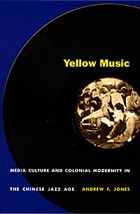 Yellow Music: Media Culture and Colonial Modernity in the Chinese Jazz Age
Andrew F. Jones
Duke University Press, 2001 Yellow Music is the first history of the emergence of Chinese popular music and urban media culture in early-twentieth-century China. Andrew F. Jones focuses on the affinities between "yellow” or “pornographic" music—as critics derisively referred to the "decadent" fusion of American jazz, Hollywood film music, and Chinese folk forms—and the anticolonial mass music that challenged its commercial and ideological dominance. Jones radically revises previous understandings of race, politics, popular culture, and technology in the making of modern Chinese culture.
The personal and professional histories of three musicians are central to Jones's discussions of shifting gender roles, class inequality, the politics of national salvation, and emerging media technologies: the American jazz musician Buck Clayton; Li Jinhui, the creator of "yellow music"; and leftist Nie Er, a former student of Li’s whose musical idiom grew out of virulent opposition to this Sinified jazz. As he analyzes global media cultures in the postcolonial world, Jones avoids the parochialism of media studies in the West. He teaches us to hear not only the American influence on Chinese popular music but the Chinese influence on American music as well; in so doing, he illuminates the ways in which both cultures were implicated in the unfolding of colonial modernity in the twentieth century.
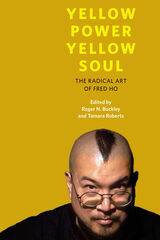 Yellow Power, Yellow Soul: The Radical Art of Fred Ho
Edited by Roger N. Buckley and Tamara Roberts
University of Illinois Press, 2013 This dynamic collection explores the life, work, and persona of saxophonist Fred Ho, an unabashedly revolutionary artist whose illuminating and daring work redefines the relationship between art and politics. Scholars, artists, and friends give their unique takes on Ho's career, articulating his artistic contributions, their joint projects, and personal stories. Exploring his musical and theatrical work, his political theory and activism, and his personal life as it relates to politics, Yellow Power, Yellow Soul offers an intimate appreciation of Fred Ho's irrepressible and truly original creative spirit. Contributors are Roger N. Buckley, Peggy Myo-Young Choy, Jayne Cortez, Kevin Fellezs, Diane C. Fujino, Magdalena Gómez, Richard Hamasaki, Esther Iverem, Robert Kocik, Genny Lim, Ruth Margraff, Bill V. Mullen, Tamara Roberts, Arthur J. Sabatini, Kalamu ya Salaam, Miyoshi Smith, Arthur Song, and Salim Washington.
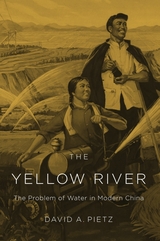 The Yellow River: The Problem of Water in Modern China
David A. Pietz
Harvard University Press, 2015 Flowing through the heart of the North China Plain—home to 200 million people—the Yellow River sustains one of China’s core regions. Yet this vital water supply has become highly vulnerable in recent decades, with potentially serious repercussions for China’s economic, social, and political stability. The Yellow River is an investigative expedition to the source of China’s contemporary water crisis, mapping the confluence of forces that have shaped the predicament that the world’s most populous nation now faces in managing its water reserves.
Chinese governments have long struggled to maintain ecological stability along the Yellow River, undertaking ambitious programs of canal and dike construction to mitigate the effects of recurrent droughts and floods. But particularly during the Maoist years the North China Plain was radically re-engineered to utilize every drop of water for irrigation and hydroelectric generation. As David A. Pietz shows, Maoist water management from 1949 to 1976 cast a long shadow over the reform period, beginning in 1978. Rapid urban growth, industrial expansion, and agricultural intensification over the past three decades of China’s economic boom have been realized on a water resource base that was acutely compromised, with effects that have been more difficult and costly to overcome with each passing decade. Chronicling this complex legacy, The Yellow River provides important insight into how water challenges will affect China’s course as a twenty-first-century global power.
 Yellow Steel: The Story of the Earthmoving Equipment Industry
William R. Haycraft
University of Illinois Press, 2000 In Yellow Steel, the first overarching history of the earthmoving equipment industry, William Haycraft examines the tremendous increase in the scope of mining and construction projects, from the Suez Canal through the interstate highway system, made possible by innovations in earthmoving machinery. Led by Cyrus McCormick's invention in 1831 of a practical mechanical reaper, many of the builders of today's massive earthmoving machines began as makers of reapers, plows, threshers, and combines.
Haycraft traces the efforts of manufacturers such as Caterpillar, Allis-Chalmers, International Harvester, J. I. Case, Deere, and Massey-Ferguson to diversify from farm equipment to specialized earthmoving equipment and the important contributions of LeTourneau, Euclid, and others in meeting the needs of the construction and mining industries. He shows how postwar economic and political events, especially the creation of the interstate highway system, spurred the development of more powerful and more agile machines. He also relates the precipitous fall of several major American earthmoving machine companies and the rise of Japanese competitors in the early 1980s.
Extensively illustrated and packed with detailed information on both manufacturers and machines, Yellow Steel knits together the diverse stories of the many companies that created the earthmoving equipment industry—how they began, expanded, retooled, merged, succeeded, and sometimes failed. Their history, a step-by-step linking of need and invention, provides the foundation for virtually all modern transportation, construction, commerce, and industry.
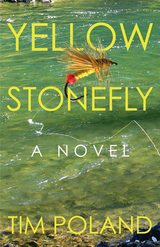 Yellow Stonefly: A Novel
Tim Poland
Ohio University Press, 2024 In her day job as a nurse, Sandy Holston cares for the elderly and the sick, even as she is haunted by her own questionable past and the deaths that marked it. Her true self resides among the mountain trout streams of her Appalachian home, where she wields her fly rod with uncanny accuracy as her life plays out along a tight line between herself and a fish on the other end. But then the Ripshin River threatens to flood. Sandy can no longer deny that dementia has taken hold in James Keefe, her older sometimes-lover. An elusive eastern mountain lion appears. And when a predatory survivalist keeping a solitary camp by the headwaters arrives, he poses the biggest threat of all. His merciless pursuit of the lion brings him ever closer to Sandy, triggering her final, tragic attempt to preserve her connections with Keefe, the headwaters, and all that she has, at last, come to love. In Yellow Stonefly—a rare fly fishing novel with a female protagonist—Tim Poland weaves suspense and introspection into an unforgettable read, at once mournful and bracing.
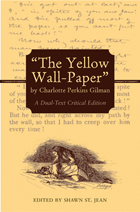 "The Yellow Wall-Paper" by Charlotte Perkins Gilman: A Dual-Text Critical Edition
Charlotte Perkins Gilman
Ohio University Press, 2006 Scholars have argued for decades over which constitutes the best possible version of Charlotte Perkins Gilman’s frequently anthologized story “The Yellow Wall-Paper.”
Most editions have been based on the 1892 New England Magazine publication rather than the handwritten manuscript at Radcliffe College. Publication of the unedited manuscript in 1994 sparked controversy over which of the two was definitive. Since then, scholars have discovered half a dozen parent texts for later twentieth-century printings, including William Dean Howells’s version from 1920 and the 1933 Golden Book version.
While traditional critical editions gather evidence and make an argument for adopting one text as preferable to others,“The Yellow Wall-Paper” by Charlotte Perkins Gilman: A Dual-Text Critical Edition, edited by Shawn St. Jean, offers both manuscript and magazine versions, critically edited and printed in parallel for the first time. New significance appears in such facets as the magazine’s accompanying illustrations, its lineation and paragraphing, Gilman’s choice of pronouns, and her original handwritten ending.
This critical edition of “The Yellow Wall-Paper” includes a full and nontraditional apparatus, making it easy for students and scholars to study the more than four hundred variants between the two texts. Four new essays, written especially for this volume, explore the implications of this multitext model.
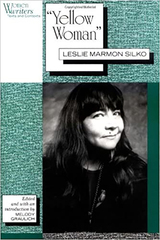 'Yellow Woman': Leslie Marmon Silko
Edited by Melody Graulich
Rutgers University Press, 1993 In the past twenty-five years many Native American writers have retold the traditional stories of powerful mythological women: Corn Woman, Changing Woman, Serpent Woman, and Thought Woman, who with her sisters created all life by thinking it into being. Within and in response to these evolving traditions, Leslie Marmon Silko takes from her own tradition, the Keres of Laguna, the Yellow Woman. Yellow Woman stories, always female-centered and always from the Yellow Woman's point of view, portray a figure who is adventurous, strong, and often alienated from her own people. She is the spirit of woman. Ambiguous and unsettling, Silko's "Yellow Woman" explores one woman's desires and changes--her need to open herself to a richer sensuality. Walking away from her everyday identity as daughter, wife and mother, she takes possession of transgressive feelings and desires by recognizing them in the stories she has heard, by blurring the boundaries between herself and the Yellow Woman of myth. Silko's decision to tell the story from the narrator's point of view is traditional, but her use of first person narration and the story's much raised ambiguity brilliantly reinforce her themes. Like traditional yellow women, the narrator is unnamed. By choosing not to reveal her name, she claims the role of Yellow Woman, and Yellow Woman's story is the one Silko clearly claims as her own. The essays in this collection compare Silko's many retellings of Yellow Woman stories from a variety of angles, looking at crucial themes like storytelling, cultural inheritances, memory, continuity, identity, interconnectedness, ritual, and tradition. This casebook includes an introduction by the editor, a chronology, an authoritative text of the story itself, critical essays, and a bibliography for further reading in both primary and secondary sources. Contributors include Kim Barnes, A. LaVonne Ruoff, Paula Gunn Allen, Patricia Clark Smith, Bernard A. Hirsch, Arnold Krupat, Linda Danielson, and Patricia Jones.
Yellowcake Towns: Uranium Mining Communities in the American West
Michael A. Amundson
University Press of Colorado, 2002 Michael Amundson presents a detailed analysis of the four mining communities at the hub of the twentieth-century uranium booms: Moab, Utah; Grants, New Mexico; Uravan, Colorado; and Jeffrey City, Wyoming. He follows the ups and downs of these "Yellowcake Towns" from uranium's origins as the crucial element in atomic bombs and the 1950s boom to its use in nuclear power plants, the Three Mile Island accident, and the 1980s bust. Yellowcake Towns provides a look at the supply side of the Atomic Age and serves as an important contribution to the growing bibliography of atomic history.
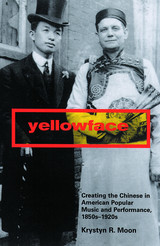 Yellowface: Creating the Chinese in American Popular Music and Performance, 1850s-1920s
Moon, Krystyn R.
Rutgers University Press, 2004 Music and performance provide a unique window into the ways that cultural information is circulated and perceptions are constructed. Because they both require listening, are inherently ephemeral, and most often involve collaboration between disparate groups, they inform cultural perceptions differently from literary or visual art forms, which tend to be more tangible and stable. In Yellowface, Krystyn R. Moon explores the contributions of writers, performers, producers, and consumers in order to demonstrate how popular music and performance has played an important role in constructing Chinese and Chinese American stereotypes. The book brings to life the rich musical period of the late nineteenth and early twentieth centuries. During this time, Chinese and Chinese American musicians and performers appeared in a variety of venues, including museums, community theaters, and world’s fairs, where they displayed their cultural heritage and contested anti-Chinese attitudes. A smaller number crossed over into vaudeville and performed non-Chinese materials. Moon shows how these performers carefully navigated between racist attitudes and their own artistic desires. While many scholars have studied both African American music and blackface minstrelsy, little attention has been given to Chinese and Chinese American music. This book provides a rare look at the way that immigrants actively participated in the creation, circulation, and, at times, subversion of Chinese stereotypes through their musical and performance work.
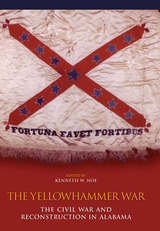 The Yellowhammer War: The Civil War and Reconstruction in Alabama
Edited by Kenneth W. Noe
University of Alabama Press, 2014 Published to mark the Civil War sesquicentennial, The Yellowhammer War collects new essays on Alabama’s role in, and experience of, the bloody national conflict and its aftermath.
During the first winter of the war, Confederate soldiers derided the men of an Alabama Confederate unit for their yellow-trimmed uniforms that allegedly resembled the plumage of the yellow-shafted flicker or “yellowhammer” (now the Northern Flicker, Colaptes auratus, and the state bird of Alabama). The soldiers’ nickname, “Yellowhammers,” came from this epithet. After the war, Alabama veterans proudly wore yellowhammer feathers in their hats or lapels when attending reunions. Celebrations throughout the state have often expanded on that pageantry and glorified the figures, events, and battles of the Civil War with sometimes dubious attention to historical fact and little awareness of those who supported, resisted, or tolerated the war off the battlefield.
Many books about Alabama’s role in the Civil War have focused serious attention on the military and political history of the war. The Yellowhammer War likewise examines the military and political history of Alabama’s Civil War contributions, but it also covers areas of study usually neglected by centennial scholars, such as race, women, the home front, and Reconstruction. From Patricia A. Hoskins’s look at Jews in Alabama during the Civil War and Jennifer Ann Newman Treviño’s examination of white women’s attitudes during secession to Harriet E. Amos Doss’s study of the reaction of Alabamians to Lincoln’s Assassination and Jason J. Battles’s essay on the Freedman’s Bureau, readers are treated to a broader canvas of topics on the Civil War and the state.
CONTRIBUTORS
Jason J. Battles / Lonnie A. Burnett / Harriet E. Amos Doss / Bertis English / Michael W. Fitzgerald / Jennifer Lynn Gross / Patricia A. Hoskins / Kenneth W. Noe / Victoria E. Ott / Terry L. Seip / Ben H. Severance / Kristopher A. Teters / Jennifer Ann Newman Treviño / Sarah Woolfolk Wiggins / Brian Steel Wills
Published in Cooperation with the Frances S. Summersell Center for the Study of the South
Yellowstone: A Wilderness Besieged
Richard A. Bartlett
University of Arizona Press, 1985 "A detailed, well documented history of the extablishment (in 1872), growth, and maturation of Yellowstone National Park . . . America's (and the world's) first national park." —Wildlife Book Review
"Without question the best and most thought-provoking volume on America's first national park that has been written in the last half-century." —Journal of the West
"Broad ranging, informative, thoughtful, and simply fun to read." —Western Historical Quarterly
"...written in warm and human terms. It documents that good can triumph over greed, that man himself can overcome his tendency toward exploitation and follow his better self toward conservation and concern." --USA Today
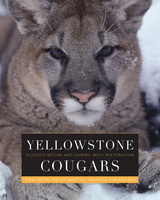 Yellowstone Cougars: Ecology before and during Wolf Restoration
Toni K. Ruth
University Press of Colorado, 2018 Yellowstone Cougars examines the effect of wolf restoration on the cougar population in Yellowstone National Park—one of the largest national parks in the American West. No other study has ever specifically addressed the theoretical and practical aspects of competition between large carnivores in North America. The authors provide a thorough analysis of cougar ecology, how they interact with and are influenced by wolves—their main competitor—and how this knowledge informs management and conservation of both species across the West.
Of practical importance, Yellowstone Cougars addresses the management and conservation of multiple carnivores in increasingly human-dominated landscapes. The authors move beyond a single-species approach to cougar management and conservation to one that considers multiple species, which was impossible to untangle before wolf reestablishment in the Yellowstone area provided biologists with this research opportunity.
Yellowstone Cougars provides objective scientific data at the forefront of understanding cougars and large carnivore community structure and management issues in the Greater Yellowstone Ecosystem, as well as in other areas where wolves and cougars are reestablishing. Intended for an audience of scientists, wildlife managers, conservationists, and academics, the book also sets a theoretical precedent for writing about competition between carnivorous mammals.
 Yellowstone National Park: Through the Lens of Time
Bradly J. Boner
University Press of Colorado, 2017 Pioneer photographer William Henry Jackson’s photographs from the 1871 Hayden Survey were instrumental in persuading Congress to designate Yellowstone as a national park—America’s first and greatest experiment in the preservation of an extraordinary landscape. Yellowstone National Park: Through the Lens of Time is an extended visual essay presenting Jackson’s images paired with breathtaking color rephotographs of each view from photojournalist Bradly J. Boner. These contemporary comparisons to Jackson’s originals reveal just how well that experiment has stood the test of time. Yellowstone is always changing. The Grand Canyon is getting deeper and wider as the Yellowstone River carves a chasm into the earth. The flows of the great hot springs at Mammoth are creating new layers of delicate, colorful cascades and leaving the old terraces to crumble in decay. Roads, bridges, and pathways wind through the park, and there are restaurants, campgrounds, and hotels. Yet even with the impact of humanity, Yellowstone remains remarkably intact, evidence that the effort to preserve and sustain the park for future generations has been a success. Combining more than 100 gorgeous “then and now” sets of photographs—the first complete published collection of Jackson’s images from the 1871 Hayden Survey and a result of Boner's three years of work rephotographing them—with history, extensive notes, and personal tales, Yellowstone National Park: Through the Lens of Time pays homage to the park’s early history and its present state, and offers a glimpse into the future. The great experiment of Yellowstone—which captivates millions of visitors from all corners of the globe each year—has transcended generations and should be maintained for generations to come.
The University Press of Colorado and the author gratefully acknowledge the generous contributions of the many donors to the Kickstarter campaign supporting the publication of this book.
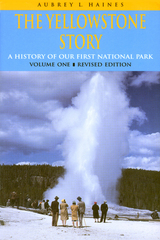 The Yellowstone Story, Revised Edition, Volume I: A History of Our First National Park
Aubrey L. Haines
University Press of Colorado, 1996 The Yellowstone Park Act
Approved March 1, 1872 Be it enacted by the Senate and House of Representatives of the United States of America in Congress assembled, That the tract of land in the Territories of Montana and Wyoming, lying near the headwaters of the Yellowstone river . . . is hereby reserved and withdrawn from settlement, occupancy, or sale under the laws of the United States, and dedicated and set apart as a public park or pleasuring-ground for the benefit and enjoyment of the people. The Yellowstone Story traces the history of the Yellowstone region from the time when hunters and gatherers migrated into the Rocky Mountains thousands of years ago to the post-World War II era when tourists began inundating Yellowstone National Park. Volume I takes the account from prehistoric times through the mid-1880s, with emphasis on the park's exploration and its trouble-filled early years under federal management. Volume II covers the years of military administration of the park and the more recent developments under the National Park Service.
The Yellowstone Story, Revised Edition, Volume II: A History of Our First National Park
Aubrey L. Haines
University Press of Colorado, 1996 The Yellowstone Story traces the history of the Yellowstone region from the time when hunters and gatherers migrated into the Rocky Mountains thousands of years ago to the post-World War II era when tourists began inundating Yellowstone National Park. Volume I takes the account from prehistoric times through the mid-1880s, with emphasis on the park's exploration and its trouble-filled early years under federal management. Volume II covers the years of military administration of the park and the more recent developments under the National Park Service.
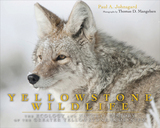 Yellowstone Wildlife: Ecology and Natural History of the Greater Yellowstone Ecosystem
Paul A. Johnsgard, Photographs by Thomas D. Mangelsen
University Press of Colorado, 2013 Yellowstone Wildlife is a natural history of the wildlife species that call Yellowstone National Park and the Greater Yellowstone Ecosystem their home. Illustrated with stunning images by renowned wildlife photographer Thomas Mangelsen, Yellowstone Wildlife describes the lives of species in the park, exploring their habitats from the Grand Tetons to Jackson Hole.
From charismatic megafauna like elk, bison, wolves, bighorn sheep, and grizzly bears, to smaller mammals like bats, pikas, beavers, and otters, to some of the 279 species of birds, Johnsgard describes the behavior of animals throughout the seasons, with sections on what summer and autumn mean to the wildlife of the park, especially with the intrusion of millions of tourists each year. Enhanced by Mangelsen’s wildlife photography, Yellowstone Wildlife reveals the beauty and complexity of these species’ intertwined lives and that of Yellowstone’s greater ecosystem.
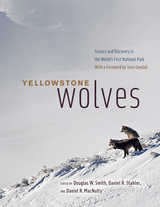 Yellowstone Wolves: Science and Discovery in the World's First National Park
Edited by Douglas W. Smith, Daniel R. Stahler, and Daniel R. MacNulty
University of Chicago Press, 2020 In 2020, it will have been twenty-five years since one of the greatest wildlife conservation and restoration achievements of the twentieth century took place: the reintroduction of wolves to the world’s first national park, Yellowstone. Eradicated after the park was established, then absent for seventy years, these iconic carnivores returned to Yellowstone in 1995 when the US government reversed its century-old policy of extermination and—despite some political and cultural opposition—began the reintroduction of forty-one wild wolves from Canada and northwest Montana. In the intervening decades, scientists have studied their myriad behaviors, from predation to mating to wolf pup play, building a one-of-a-kind field study that has both allowed us to witness how the arrival of top predators can change an entire ecosystem and provided a critical window into impacts on prey, pack composition, and much else.
Here, for the first time in a single book, is the incredible story of the wolves’ return to Yellowstone National Park as told by the very people responsible for their reintroduction, study, and management. Anchored in what we have learned from Yellowstone, highlighting the unique blend of research techniques that have given us this knowledge, and addressing the major issues that wolves still face today, this book is as wide-ranging and awe-inspiring as the Yellowstone restoration effort itself. We learn about individual wolves, population dynamics, wolf-prey relationships, genetics, disease, management and policy, newly studied behaviors and interactions with other species, and the rippling ecosystem effects wolves have had on Yellowstone’s wild and rare landscape. Perhaps most importantly of all, the book also offers solutions to ongoing controversies and debates.
Featuring a foreword by Jane Goodall, beautiful images, a companion online documentary by celebrated filmmaker Bob Landis, and contributions from more than seventy wolf and wildlife conservation luminaries from Yellowstone and around the world, Yellowstone Wolves is a gripping, accessible celebration of the extraordinary Yellowstone Wolf Project—and of the park through which these majestic and important creatures once again roam.
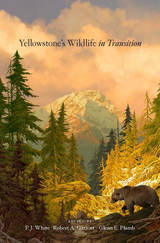 Yellowstone’s Wildlife in Transition
P. J. White
Harvard University Press, 2013 The world's first national park, Yellowstone is a symbol of nature's enduring majesty and the paradigm of protected areas across the globe. But Yellowstone is constantly changing. How we understand and respond to events that are putting species under stress, say the authors of Yellowstone's Wildlife in Transition, will determine the future of ecosystems that were millions of years in the making. With a foreword by the renowned naturalist E. O. Wilson, this is the most comprehensive survey of research on North America's flagship national park available today.
Marshaling the expertise of over thirty contributors, Yellowstone's Wildlife in Transition examines the diverse changes to the park's ecology in recent decades. Since its creation in the 1870s, the priorities governing Yellowstone have evolved, from intensive management designed to protect and propagate depleted large-bodied mammals to an approach focused on restoration and preservation of ecological processes. Recognizing the importance of natural occurrences such as fires and predation, this more ecologically informed oversight has achieved notable successes, including the recovery of threatened native species of wolves, bald eagles, and grizzly bears.
Nevertheless, these experts detect worrying signs of a system under strain. They identify three overriding stressors: invasive species, private-sector development of unprotected lands, and a warming climate. Their concluding recommendations will shape the twenty-first-century discussion over how to confront these challenges, not only in American parks but for conservation areas worldwide. Highly readable and fully illustrated, Yellowstone's Wildlife in Transition will be welcomed by ecologists and nature enthusiasts alike.
The Yemassee: A Romance of Carolina
William Gilmore Simms
University of Arkansas Press, 1994 Viewed from today's perspective, The Yemassee dramatically and unflinchingly bares the manipulation, exploitation, and eventual genocide of a proud indigenous nation that preferred extinction to the surrender of its land and the subjugation of its people.
 Yenching University and Sino-Western Relations, 1916–1952
Philip West
Harvard University Press, 1976 Yenching University was perhaps the most impressive example of Sino-Western cooperation in the twentieth century. From its founding in 1916 by Western missionaries until the Communist victory, Yenching mirrored the colorful and frustrating efforts of Chinese and Western liberals to find solutions to China's overriding preoccupation with national salvation. In charting the ebb and flow of university life, this definitive work sheds light on the intellectual, social, and diplomatic forces at work in this transitional period in Chinese history.
Philip West's analysis of the Yenching episode is carefully placed within the political context, both domestic and foreign, of the Republican years (1912–1949). But the author sees intercultural history as being more than an extension of politics and diplomacy. The early bond between Chinese and Westerners at Yenching, despite its fame as an educational institution, was a religious one. Rising national consciousness, student radicalization, and China's unending experience of war weakened that religious tie. And yet religious purposes are a part of the Yenching story to the end.
In his handling of intercultural history, West has a keen appreciation for the interplay of political forces and individuals. The demise of Yenching and the breakdown of Sino-Western relations generally are seen in terms of the individual behavior of Yenching personalities, the pressures of Communist ideology, and also Western diplomacy surrounding the Korean War. Throughout this study major attention is given to the pivotal role of that towering personality in Sino-Western relations, John Leighton Stuart, Yenching's longtime president and the last American Ambassador to China prior to the Communist takeover.
Yes
Thomas Bernhard
University of Chicago Press, 1992 The narrator, a scientist working on antibodies and suffering from emotional and mental illness, meets a Persian woman, the companion of a Swiss engineer, at an office in rural Austria. For the scientist, his endless talks with the strange Asian woman mean release from his condition, but for the Persian woman, as her own circumstances deteriorate, there is only one answer.
"Thomas Bernhard was one of the few major writers of the second half of this century."—Gabriel Josipovici, Independent
"With his death, European letters lost one of its most perceptive, uncompromising voices since the war."—Spectator
Widely acclaimed as a novelist, playwright, and poet, Thomas Bernhard (1931-89) won many of the most prestigious literary prizes of Europe, including the Austrian State Prize, the Bremen and Brüchner prizes, and Le Prix Séguier.
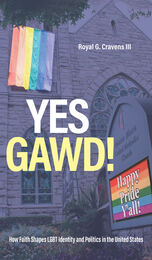 Yes Gawd!: How Faith Shapes LGBT Identity and Politics in the United States
Cravens III, Royal G.
Temple University Press, 2024 Yes Gawd! explores the effects of religious belief and practice on political behavior among the LGBT community, a population long persecuted by religious institutions and generally considered to be non-religious. Royal Cravens deftly shows how faith impacts the politics of LGBT people. He details how the queer community creates, defines, and experiences spirituality and spiritual affirmation as well as the consequences this has for their identity, socialization, and political development.
Cravens also demonstrates the mobilizing power of faith for LGBT people by contrasting the effects of participation in faith and secular communities on political activism. He explores how factors such as coming out, race, and LGBT-affirming churches influence political attitudes and behavior and explains how the development of LGBT politico-religious activism provides opportunities for LGBT people to organize politically.
Ultimately, Cravens provides a cohesive account of how religion acts as a catalyst for and facilitator in the political development of LGBT people in the United States. In the process, he shows that there is room for both religion in LGBT communities and LGBT people in religious communities.
Yes, There Will Be Singing
Marilyn Krysl
University of Michigan Press, 2014 Yes, There Will Be Singing brings together Marilyn Krysl’s essays on the origins of language and poetry, poetic form, the poetry of witness, and poetry’s collaboration with the healing arts. Beginning with pieces on her own origins as a poet, she branches into poetry’s profound spiritual and political possibilities, drawing on rich examples from poets such as Anna Akhmatova, W.S. Merwin, and Vénus Khoury-Ghata. Krysl concludes with a selection of stories of her nursing and humanitarian work, powerfully connecting poetic expression with a generous and compassionate worldview.
Yes Thorn
Amy Munson
Tupelo Press, 2016 Yes Thorn abides with mysteries—mortality, spirituality, sexuality, nature, divinity, love—and interrogates them without necessarily pressing toward or expecting explanation. Its diction is sometimes ornate, but language and images that dwell in more classically lyric places are often undercut or mixed with tougher, blunter elements.
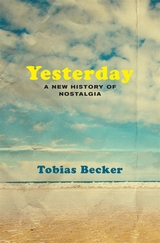 Yesterday: A New History of Nostalgia
Tobias Becker
Harvard University Press, 2023 A sweeping reassessment of our longing for the past, from the rise of “retro” to the rhetoric of Brexit and Trump.
Nostalgia has a bad reputation. Its critics dismiss it as mere sentimentality or, worse, a dangerous yearning for an imagined age of purity. And nostalgia is routinely blamed for trivializing the past and obscuring its ugly sides. In Yesterday, Tobias Becker offers a more nuanced and sympathetic view. Surveying the successive waves of nostalgia that swept the United States and Europe after the Second World War, he shows that longing for the past is more complex and sometimes more beneficial than it seems.
The current meaning of “nostalgia” is surprisingly recent: until the 1960s, it usually just meant homesickness, in keeping with the original Greek word. Linking popular culture to postwar politics in the United States, Great Britain, and Germany, Becker explains the shift in meaning. He also responds to arguments against nostalgia, showing its critics as often shortsighted in their own ways as they defend an idea of progress no less naïve than the wistfulness they denounce. All too often, nostalgia itself is criticized, as if its merit did not depend on which specific past one longs for.
Taking its title from one of the most popular songs of all time, and grounded in extensive research, Yesterday offers a rigorous and entertaining perspective on divisive issues in culture and politics. Whether we are revisiting, reviving, reliving, reenacting, or regressing, and whether these activities find expression in politics, music, fashion, or family history, nostalgia is inevitable. It is also powerful, not only serving to define the past but also orienting us toward the future we will create.
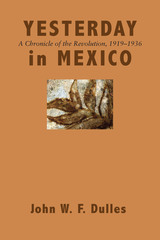 Yesterday in Mexico: A Chronicle of the Revolution, 1919–1936
By John W. F. Dulles
University of Texas Press, 1961 Early in a sixteen-year sojourn in Mexico as an engineer for an American mining company, John W. F. Dulles became fascinated by the story of Mexico’s emergence as a modern nation, and was imbued with the urge to tell that story as it had not yet been told—by letting events speak for themselves, without any interpretations or appraisal. The resultant book offers an interesting paradox: it is “chronicle” in the medieval sense—a straightforward record of events in chronological order, recounted with no effort at evaluation or interpretation; yet in one aspect it is a highly personal narrative, since much of its significant new material came to Dulles as a result of personal interviews with principals of the Revolution. From them he obtained firsthand versions of events and other reminiscences, and he has distilled these accounts into a work of history characterized by thorough research and objective narration. These fascinating interviews were no more important, however, than were the author’s many hours of laborious search in libraries for accounts of the events from Carranza’s last year to Calles’ final retirement from the Mexican scene. The author read scores of impassioned versions of what transpired during these fateful years, accounts written from every point of view, virtually all of them unpublished in English and many of them documents which had never been published in any language. Combining this material with the personal reminiscences, Dulles has provided a narrative rich in its new detail, dispassionate in its presentation of facts, dramatic in its description of the clash of armies and the turbulence of rough-and-tumble politics, and absorbing in its panoramic view of a people’s struggle. In it come to life the colorful men of the Revolution —Obregón, De la Huerta, Carranza, Villa, Pani, Carillo Puerto, Morones, Calles, Portes Gil, Vasconcelos, Ortiz Rubio, Garrido Canabal, Rodríguez, Cárdenas. (Dulles’ narrative of their public actions is illumined occasionally by humorous anecdotes and by intimate glimpses.) From it emerges also, as the main character, Mexico herself, struggling for self-discipline, for economic stability, for justice among her citizens, for international recognition, for democracy. This account will be prized for its encyclopedic collection of facts and for its important clarification of many notable events, among them the assassination of Carranza, the De La Huerta revolt, the assassination of Obregón, the trial of Toral, the resignation of President Ortiz Rubio, and the break between Cárdenas and Calles. More than sixty photographs supplement the text.
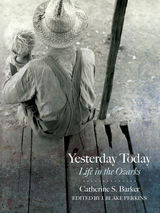 Yesterday Today: Life in the Ozarks
Catherine S. Barker
University of Arkansas Press, 2020 The emergence into pop culture of quaint and simple Ozarks Mountaineers—through the writings of Vance Randolph, Wayman Hogue, Charles Morrow Wilson, and others—was a comfort and fascination to many Americans in the early twentieth century. Disillusioned with the modernity they felt had contributed to the Great Depression, middle-class Americans admired the Ozarkers’ apparently simple way of life, which they saw as an alternative to an increasingly urban and industrial America.
Catherine S. Barker's 1941 book Yesterday Today: Life in the Ozarks sought to illuminate another side of these “remnants of eighteenth-century life and culture”: poverty and despair. Drawing on her encounters and experiences as a federal social worker in the backwoods of the Ozarks in the 1930s, Barker described the mountaineers as “lovable and pathetic and needy and self-satisfied and valiant,” declaring that the virtuous and independent people of the hills deserved a better way and a more abundant life. Barker was also convinced that there were just as many contemptible facets of life in the Ozarks that needed to be replaced as there were virtues that needed to be preserved.
This reprinting of Yesterday Today—edited and introduced by historian J. Blake Perkins—situates this account among the Great Depression-era chronicles of the Ozarks.
Yesterday's Faces, Volume 1: Glory Figures
Robert Sampson
University of Wisconsin Press, 1983 The pulp magazines dealt in fiction that was, by reason of the audience and the medium, heightened beyond normal experience. The drama was intense, the colors vivid, and the pace exhausting. The characters moving through these prose dreams were heightened, too. Most were cast in a quasi-heroic mold and moved on elevated planes of accomplishment.
This book and its companion volumes are concerned with the slow shaping of many literary conventions over many decades. This volume begins the study with the dime novels and several early series characters who influenced the direction of pulp fiction at its source.
Yesterday's Faces, Volume 2: Strange Days
Robert Sampson
University of Wisconsin Press, 1984 The second volume within this series presents more than fifty series characters within pulp fiction, selected to represent four popular story types from the 1907–1939 pulps—scientific detectives, occult and psychic investigators, jungle men, and adventurers in interplanetary romance. Some characters—Tarzan, John Carter of Mars, Craig Kennedy, Anthony (Buck) Rogers—became internationally known. Others are now almost forgotten, except by collectors and specialists.
Yesterday's Faces, Volume 3: From the Dark Side
Robert Sampson
University of Wisconsin Press, 1987 More than forty criminal heroes are examined in this volume. They include evil characters such as Dr. Fu Manchu, Li Shoon, Black Star, the Spider, Rafferty, Mr. Clackworthy, Elegant Edward, Big-nose Charlie, Thubway Tham, the Thunderbolt, the Man in Purple, and the Crimson Clown, plus many, many more!
The development of these characters is traced across more than two decades of crime fiction published in Detective Story Magazine, Flynn’s, Black Mask, and other magazines. The conventions that made these stories a special part of popular fiction are examined in detail.
Yesterday's Faces, Volume 4: The Solvers
Robert Sampson
University of Wisconsin Press, 1987 For the fourth volume of this series, Robert Sampson has selected more than fifty magazine series characters to illustrate the development of the character of the detective. Included here are both the amateur and professional detective, female investigators, deducting doctors, brilliant amateurs, and equally brilliant professional police. There are private detectives reflecting Holmes and hard-boiled cops from the parallel traditions of realism and melodramatic fantasy. Characters include Brady and Riordan, Terry Trimble, Glamorous Nan Russell, J. G. Reeder, plus many others.
Yesterday's Faces, Volume 5: Dangerous Horizons
Robert Sampson
University of Wisconsin Press, 1991 In this fifth volume of the Yesterday’s Faces series, Robert Sampson has selected a host of series characters who adventured throughout the world in the 1903–1930 pulps. Sparkling brightly among these characters are Terence O'Rourke, Captain Blood, and the ferocious Hurricane Williams. More characters include Peter the Brazen, in China, Sanders of the River, in Africa—and much, much more.
Yesterday's Future: The Twentieth Century Begins
Michael E. Stevens
Wisconsin Historical Society Press, 1999 Although Wisconsin residents gloried in the past, they paid even greater attention to the future. Journalists, scholars, religious leaders, and even schoolteachers offered predictions. Some predictions proved quite accurate, such as increased life expectancy through better medicine, central air conditioning, and air travel, while others, such as free university education for all and communication with Martians, did not.
The nearly one hundred items that appear here are taken from newspapers, magazines, and other materials that were published in Wisconsin at the turn of the century. These articles and essays--some wildly funny and engaging, others somber and thoughtful--offer a window on the hopes and fears of our forebears at a moment of great change.
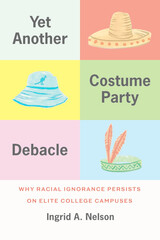 Yet Another Costume Party Debacle: Why Racial Ignorance Persists on Elite College Campuses
Ingrid A. Nelson
University of Chicago Press, 2024 How the policies of elite colleges allow racially themed parties to continue by perpetuating the status quo.
On a cold February evening, a group of students at Bowdoin College, an elite and historically white liberal arts college in Maine, gathered to drink tequila at a party referred to as “not not a fiesta.” By noon the next day, Instagram videos of students sporting miniature sombreros had spread like wildfire through campus. Over the next few weeks, national media outlets would broadcast the embarrassing fallout. But the frequency with which similar parties recur on campuses across the United States begs the question: what, if anything, do undergraduates learn about race and racism from these encounters?
Drawing on interviews and archival research, Yet Another Costume Party Debacle shows us how colleges both contest and reproduce racialized systems of power. Sociologist Ingrid A. Nelson juxtaposes how students and administrators discuss race with how they behave in the aftermath of racially charged campus controversies. Nelson spoke in-depth with students and other key players in several controversial parties—“Cracksgiving,” a “gangster party,” and the “not not a fiesta” tequila party—at Bowdoin. The college’s administrative response failed to encourage productive dialogue or address larger questions about race on campus. Nelson shows how the underlying campus structures at elite liberal arts colleges foster an environment that is ripe for racially charged incidents; we shouldn’t be surprised when we read about yet another costume party debacle. Nelson advises how we can take charge of diversity on our campuses by changing the systems that bring students together and drive them apart.
 Yet Another Costume Party Debacle: Why Racial Ignorance Persists on Elite College Campuses
Ingrid A. Nelson
University of Chicago Press, 2024 This is an auto-narrated audiobook version of this book.
How the policies of elite colleges allow racially themed parties to continue by perpetuating the status quo.
On a cold February evening, a group of students at Bowdoin College, an elite and historically white liberal arts college in Maine, gathered to drink tequila at a party referred to as “not not a fiesta.” By noon the next day, Instagram videos of students sporting miniature sombreros had spread like wildfire through campus. Over the next few weeks, national media outlets would broadcast the embarrassing fallout. But the frequency with which similar parties recur on campuses across the United States begs the question: what, if anything, do undergraduates learn about race and racism from these encounters?
Drawing on interviews and archival research, Yet Another Costume Party Debacle shows us how colleges both contest and reproduce racialized systems of power. Sociologist Ingrid A. Nelson juxtaposes how students and administrators discuss race with how they behave in the aftermath of racially charged campus controversies. Nelson spoke in-depth with students and other key players in several controversial parties—“Cracksgiving,” a “gangster party,” and the “not not a fiesta” tequila party—at Bowdoin. The college’s administrative response failed to encourage productive dialogue or address larger questions about race on campus. Nelson shows how the underlying campus structures at elite liberal arts colleges foster an environment that is ripe for racially charged incidents; we shouldn’t be surprised when we read about yet another costume party debacle. Nelson advises how we can take charge of diversity on our campuses by changing the systems that bring students together and drive them apart.
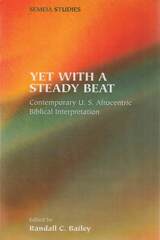 “Yet with a Steady Beat”: U. S. Afrocentric Biblical Interpretation
Randall C. Bailey
SBL Press, 2003 This collection of essays exemplifies new directions being taken by biblical scholars using new literary, historical, and sociological critical tools to explore issues of concern to their communities and thus poses a challenge to others in the discipline to broaden the canons of interpretation and sources. The essays, from the generation of scholars following the writers of the historic Stony the Road We Trod: African American Biblical Interpretation (Fortress, 1991), address issues of cultural criticism, utilization of Black religious sources such as the Negro spirituals and sermons, histories of struggles of Afro-diasporan peoples, and ideological criticism in interpreting the biblical text.
This collection of essays exemplifies new directions being taken by biblical scholars using new literary, historical, and sociological critical tools to explore issues of concern to their communities and thus poses a challenge to others in the discipline to broaden the canons of interpretation and sources. The essays, from the generation of scholars following the writers of the historic Stony the Road We Trod: African American Biblical Interpretation (Fortress, 1991), address issues of cultural criticism, utilization of Black religious sources such as the Negro spirituals and sermons, histories of struggles of Afro-diasporan peoples, and ideological criticism in interpreting the biblical text.
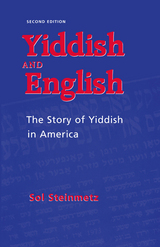 Yiddish & English: The Story of Yiddish in America
Sol Steinmetz
University of Alabama Press, 2001 This is the only book to seriously treat the intriguing linguistic and cultural phenomenon of the intimate contact between Yiddish and English over the past 120 years. Yiddish arrived in America as the mother tongue of millions of Jewish immigrants from eastern Europe. Not only did this language without a homeland survive in the great American melting pot, it infiltrated the majority language, English, with a wide variety of new words and expressions and helped to establish a new ethnic language called "Jewish English." New Yorkers, in particular, have adopted a long list of Yiddish words, including the well-known "kosher," "chutzpah," "klutz," "yenta," "nosh," "mavin," "schlep," and "shmo." Yiddish had first developed from language sharing as Jews of northern France and northern Italy migrated into the German-speaking region of the Rhine Valley in the Middle Ages. Sol Steinmetz traces the development of such words as bonhomme from the Old French meaning "good man" to the Yiddish of bonim, or shul for synagogue derived from the German schuol, meaning "school," which had come originally from the Latin schola, for example. With a rich collection of quotations from literature and the press, Steinmetz documents the unusually high lexical, semantic, and intonational exchanges between Yiddish and English in America. He offers more than 1,200 Yiddish words, expressions, idioms, and phrases that have melted into the English vernacular. Yiddish and English is important for Judaica collections with its two appendixes-one on the romanization of Yiddish and another of Yiddish-origin words, a Jewish-English glossary, a selected bibliography, and an index. But this slim volume is so entertaining and informative for the general reader that it is recommended for anyone who delights in word derivations and language.
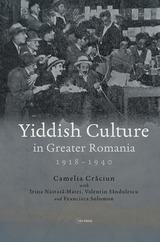 Yiddish Culture in Greater Romania (1918-1940)
Camelia Craciun
Central European University Press, 2025 Yiddish culture was an important part of the cultural landscape of Eastern Europe from the Baltic Sea to the Danube, connecting the scattered Ashkenazi Jewry, the overwhelming majority of the Jews living in this geographical area.
In the newly created Greater Romania, the Jewish community included more than half a million individuals still speaking Yiddish. Building on pre-war trends, the new nation-state faced an antisemitism problem since its inception. This continued in the period that followed, culminating in the horrors of the Holocaust, which destroyed most of the Yiddish-language community. Most survivors were discouraged from continuing to use a language that reminded them of a painful past.
This volume examines the socio-cultural mechanisms responsible for restructuring the Yiddish cultural life after the changes brought about by the end of World War I and the creation of Greater Romania. It describes how this process evolved until the political regimes banned the activity of Yiddish theaters, press and, ultimately, the usage of Yiddish, thus making cultural life impossible.
The four authors identify the main institutions, individuals and projects that promoted Yiddish cultural life in interwar Romania. They also trace the impact of Yiddish within Romanian society through joint projects, events, and initiatives. Special attention is given to Yiddish theater, which played a key role both within the community and in its interaction with the Romanian-speaking public.
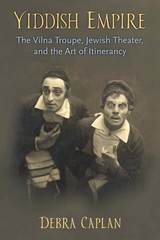 Yiddish Empire: The Vilna Troupe, Jewish Theater, and the Art of Itinerancy
Debra Caplan
University of Michigan Press, 2018 Yiddish Empire tells the story of how a group of itinerant Jewish performers became the interwar equivalent of a viral sensation, providing a missing chapter in the history of the modern stage. During World War I, a motley group of teenaged amateurs, impoverished war refugees, and out- of- work Russian actors banded together to revolutionize the Yiddish stage. Achieving a most unlikely success through their productions, the Vilna Troupe (1915– 36) would eventually go on to earn the attention of theatergoers around the world. Advancements in modern transportation allowed Yiddish theater artists to reach global audiences, traversing not only cities and districts but also countries and continents. The Vilna Troupe routinely performed in major venues that had never before allowed Jews, let alone Yiddish, upon their stages, and operated across a vast territory, a strategy that enabled them to attract unusually diverse audiences to the Yiddish stage and a precursor to the organizational structures and travel patterns that we see now in contemporary theater. Debra Caplan’s history of the Troupe is rigorously researched, employing primary and secondary sources in multiple languages, and is engagingly written.
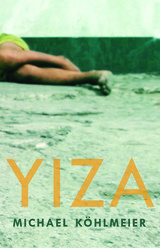 Yiza
Michael Köhlmeier
Haus Publishing, 2017 Part dark fairy tale, part mystery, Yiza is the story of three homeless street children on the run. One evening, not long after her arrival in Germany, six-year-old Yiza is abandoned at the market where she spends her days. At a shelter for migrant children she meets two boys, Schamhan and Arian, and together they run away. Trekking through snowy forests and housing settlements, they evade police custody, subsisting on the margins of society and doing whatever it takes to survive.
Both boys are protective of Yiza but are blind to the moral and emotional complexities of their actions. When Yiza falls ill they take shelter in a greenhouse and Arian spends his days begging for food and medicine, but before long they are discovered. When Yiza is illicitly taken into foster care and confined the novel reaches its brutal denouement as we see that Schamhan and Arian will do anything to be reunited with her.
Narrated in simple language and with an innocent charm that belies its social reality, Yiza is a pertinent and timely tale of displacement and suffering.
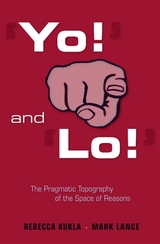 ‘Yo!’ and ‘Lo!’: The Pragmatic Topography of the Space of Reasons
Rebecca Kukla and Mark Lance
Harvard University Press, 2009 Much of twentieth-century philosophy was organized around the “linguistic turn,” in which metaphysical and epistemological issues were approached through an analysis of language. This turn was marked by two assumptions: that it was primarily the semantics of language that was relevant to broader philosophical issues, and that declarative assertions were the only verbal acts of serious philosophical interest. In ‘Yo!’ and ‘Lo!’ Rebecca Kukla and Mark Lance reject these assumptions. Looking at philosophical problems starting with the pragmatics of language, they develop a typology of pragmatic categories of speech within which declaratives have no uniquely privileged position. They demonstrate that non-declarative speech acts—including vocative hails (“Yo!”) and calls to shared attention (“Lo!”)—are as fundamental to the possibility and structure of meaningful language as are declaratives.
Entering into conversation with the work of Anglo-American philosophers such as Wilfrid Sellars, Robert Brandom, and John McDowell, and Continental philosophers including Heidegger and Althusser, ‘Yo!’ and ‘Lo!’ offers solutions (or dissolutions) to long-standing philosophical problems, such as how perception can be both inferentially fecund and responsive to an empirical world, and how moral judgment can be both objective and inherently motivating.
Yodel in Hi-Fi: From Kitsch Folk to Contemporary Electronica
Bart Plantenga
University of Wisconsin Press, 2012
Yodel in Hi-Fi explores the vibrant and varied traditions of yodelers around the world. Far from being a quaint and dying art, yodel is a thriving vocal technique that has been perennially renewed by singers from Switzerland to Korea, from Colorado to Iran. Bart Plantenga offers a lively and surprising tour of yodeling in genres from opera to hip-hop and in venues from cowboy campfires and Oktoberfests to film soundtracks and yogurt commercials. Displaying an extraordinary versatility, yodeling crosses all borders and circumvents all language barriers to assume its rightful place in the world of music.
“If Wisconsin wasn’t on the yodel music map before, this book puts it there.”— Wisconsin State Journal
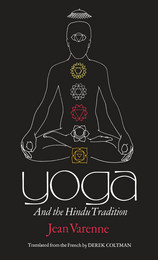 Yoga and the Hindu Tradition
Jean Varenne
University of Chicago Press, 1977 A popular and critical success when it first appeared in France, Yoga and the Hindu Tradition has freed Yoga from the common misconceptions of the recent Yoga vogue. Jean Varenne, the distinguished French Orientalist, presents the theory of classical Yoga, in all its richness, as a method—a concrete way to reach the Absolute through spiritual exercises—which makes possible the transition from existence to essence.
This excellent translation, including line drawings and charts, a glossary of technical terms, and a complete translation of the Yoga Darshana Upanishad, begins with a brief description of the metaphysical and religious history on which Yoga is based. Varenne discusses the theoretical conception of Yoga as the search for liberating knowledge, concluding with a brief indication of the physical practices and extra Yogic themes such as Kundalini and Tantrism. It is the author's hope that "those who read [this book] will come to realize that it is in fact dishonest to reduce Yoga to some sort of physical training, or to just an occult doctrine; it is a 'world view' a Weltanschauung that comprehends reality in its totality."
"The straightforward, well-organized presentation makes the book itself a microcosm of what Varenne singles out as a dominant feature of classical Hindu thought—a bringing of the complex and multitudinous into a unity."—Judith Guttman, Yoga Journal
 The Yogaśāstra of Hemacandra: A Twelfth Century Handbook on Śvetāmbara Jainism
Olle Qvarnström
Harvard University Press The Yogaśāstra and its voluminous auto-commentary, the Svopajnavrtti, is the most comprehensive treatise on Śvetāmbara Jainism. Written in the twelfth century by the polymath Hemacandra, it was instrumental in the survival and growth of Jainism in India as well as in the spreading of Sanskrit culture within Jaina circles. Its influence extended far beyond confessional and geographical borders and it came to serve as a handbook for the Jain community in Gujarat and overseas.
It is a systematic presentation of a set of ideas and practices originally belonging to the Śvetāmbara canonical scriptures and traditions molded into a coherent whole with the help of a long row of scholastic thinkers. Hemacandra integrates innovations of his own as well as non-Jain elements of pan-Indian and Saiva provenance, attesting to a strong Tantric influence on medieval Jainism. Some of these elements came to be perpetually included within Śvetāmbara orthopraxy and orthodoxy due to the normative status acquired by the Yogaśāstra.
The present translation is the first of its kind in a Western language.
The Yogi of Cockroach Court
Frank Waters
Ohio University Press, 1970 In this novel of the mestizo, or mixed-blood, Frank Waters completes the Southwestern canvas begun in The Man Who Killed the Deer and People of the Valley. Set in a violent Mexican border town, the story centers on Barby, a tormented mestizo, Guadalupe, the mestiza “percentage-girl,” and Tai-Ling, the serene yogi. Their fates mingle though each remains alone—Barby bound to the brute rages of the night; Guadalupe unconscious of all save the sun of her sexuality; Tai-Ling believing it is possible to transcend completely the flow of life.
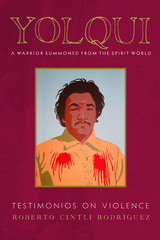 Yolqui, a Warrior Summoned from the Spirit World: Testimonios on Violence
Roberto Cintli Rodríguez; Foreword by Patrisia Gonzales
University of Arizona Press, 2019 In Nahuatl yolqui is the idea of a warrior brought back from the dead. For author and activist Roberto Cintli Rodríquez, it describes his own experience one night in March 1979 after a brutal beating at the hands of L.A. sheriffs.
Framed by Rodríguez’s personal testimony of police violence, this book offers a historia profunda of the culture of extralegal violence against Red-Black-Brown communities in the United States. In addition to Rodríguez’s story, this book includes several short essays from victims and survivors that bring together personal accounts of police brutality and state-sponsored violence. This wide-ranging work touches on historical and current events, including the Watts rebellion, the Zoot Suit Riots, Operation Streamline, Standing Rock, and much more.
From the eyewitness accounts of Bartolomé de las Casas to the protestors and allies at Standing Rock, this book makes evident the links between colonial violence against Red-Black-Brown bodies to police violence in our communities today. Grounded in the stories of the lives of victims and survivors of police violence, Yolqui, a Warrior Summoned from the Spirit World illuminates the physical, spiritual, and epistemic depths and consequences of racialized dehumanization.
Rodríguez offers us an urgent, poignant, and personal call to end violence and the philosophies that permit such violence to flourish. Like the Nahuatl yolqui, this book is intended as a means of healing, offering a footprint going back to the origins of violence, and, more important, a way forward.
With contributions by Raúl Alcaraz-Ochoa, Citalli Álvarez, Tanya Alvarez, Rebekah Barber, Juvenal Caporale, David Cid, Arianna Martinez Reyna, Carlos Montes, Travis Morales, Simon Moya Smith, Cesar Noriega, Kimberly Phillips, Christian Ramirez, Michelle Rascon Canales, Carolyn Torres, Jerry Tello, Tara Trudell, and Laurie Valdez.
Yonder Mountain: An Ozarks Anthology
Anthony Priest
University of Arkansas Press, 2013 Yonder Mountain, inspired by poet Miller Williams's Ozark, Ozark: A Hillside Reader, is rooted in the literary legacy of the Ozarks while reflecting the diversity and change of the region. Readers will find fresh, creative, honest voices profoundly influenced by the landscape and culture of the Ozark Mountains. Poets, novelists, columnists, and historians are represented--Donald Harington, Sara Burge, Marcus Cafagna, Art Homer, Pattiann Rogers, Miller Williams, Roy Reed, Dan Woodrell, and more.
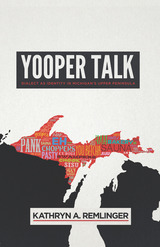 Yooper Talk: Dialect as Identity in Michigan's Upper Peninsula
Kathryn A. Remlinger
University of Wisconsin Press, 2019 Yooper Talk is a fresh and significant contribution to understanding regional language and culture in North America. The Upper Peninsula of Michigan—known as "the UP"—is historically, geographically, and culturally distinct. Struggles over land, labor, and language during the last 150 years have shaped the variety of English spoken by resident Yoopers, as well as how they are viewed by outsiders.
Drawing on sixteen years of fieldwork, including interviews with seventy-five lifelong residents of the UP, Kathryn Remlinger examines how the idea of a unique Yooper dialect emerged. Considering UP English in relation to other regional dialects and their speakers, she looks at local identity, literacy practices, media representations, language attitudes, notions of authenticity, economic factors, tourism, and contact with immigrant and Native American languages. The book also explores how a dialect becomes a recognizable and valuable commodity: Yooper talk (or "Yoopanese") is emblazoned on t-shirts, flags, postcards, coffee mugs, and bumper stickers.
Yooper Talk explains linguistic concepts with entertaining examples for general readers and also contributes to interdisciplinary discussions of dialect and identity in sociolinguistics, anthropology, dialectology, and folklore.
 York's Ride: A Novel of Old California
Michael Dennis Cassity
University of Nevada Press, 2025 In 1914, most of the world is focused on The Great War, but a much quieter story is taking place in a remote mountain region in northern California and western Nevada with the tale of two twelve-year-old boys and a legendary, wild horse from the desert. The stallion, Meshuga—part mustang and part giant Percheron draft —is a stallion so strong that he becomes a mythical, inspirational fable. Meshuga is destined to compete in a long-distance race through the mountains and valleys against the nation’s best Arabian horses.
Jim, an orphan, has moved to the West to live on his Uncle Martin and Aunt Hanna’s ranch in the small, post-Gold Rush town of Taylorsville where the Sierra Nevada meets the Cascades. Mostly, Jim doesn’t miss his family farm in Missouri, and when he’s not doing ranch chores, he spends his time fly-fishing on nearby Indian Creek. This is where he first encounters York, a local boy from the Maidu tribe, and the two become fast friends. Jim and York soon meet up with Blind Charlie, a famous Maidu elder storyteller, who fills their heads with ancestral myths and legends.
After the untimely death of York, Meshuga’s caretaker, Jim is suddenly moved to take responsibility for the great black mustang and become part of Blind Charlie’s prophecies. With York gone, Jim must fulfill what his friend knew all along—that he and Meshuga would learn to conquer the challenge of the race of the century. A romantic novel of the Old West imbued with rich historical details, York’s Ride is a complex and beautiful tale about family relationships and coming-of-age in early twentieth-century California.
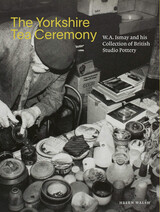 The Yorkshire Tea Ceremony: W. A. Ismay and His Collection of British Studio Pottery
Helen Walsh
Paul Holberton Publishing, 2021 The remarkable collection of the UK’s most prolific collector of postwar British studio pottery.
In the latter half of the twentieth century, “professional Yorkshireman” W. A. Ismay (1910–2001) amassed over 3,600 pieces by more than 500 potters. Surrounded by his family of pots, he lived in a tiny terraced house in Wakefield, Yorkshire, and left his collection and its associated archive to the city of York upon his death. This eclectic group of works contains objects created by many of the most significant potters working in the United Kingdom, including Lucie Rie, Hans Coper, Bernard Leach, and Michael Cardew, as well as lesser-known makers.
With new academic research into this little-studied collection and archive, Yorkshire Tea Ceremony explores Ismay’s journey as a collector and offers fresh perspectives on a marginalized area of British Modernism. Tracing the collection’s journey from private to public ownership illuminates issues surrounding the acquisition and reveals the transformative effect it has had on both curatorial practice and the ambition of regional public institutions. The W. A. Ismay Collection offers a well-documented example of the valuable contribution collectors can make to the British studio ceramics movement.
Published to coincide with the twentieth anniversary of the collection’s move from private to public ownership, this volume accompanies an exhibition at York Art Gallery’s Centre of Ceramic Art (CoCA).
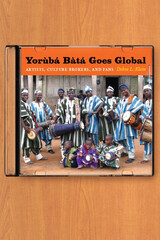 Yorùbá Bàtá Goes Global: Artists, Culture Brokers, and Fans
Debra L. Klein
University of Chicago Press, 2007 Responding to growing international interest in the Yorùbá culture of southwestern Nigeria, practitioners of bàtá—a centuries-old drumming, dancing, and singing tradition—have recast themselves as traditional performers in a global market. As the Nigerian market for ritual bàtá has been declining, international opportunities for performance have grown. Debra L. Klein’s lively ethnography explores this disjunction, revealing the world of bàtá artists and the global culture market that helps to sustain their art.
Yorùbá Bàtá Goes Global describes the dramatic changes and reinventions of traditional bàtá performance in recent years, showing how they are continually recreated, performed, and sold. Klein delves into the lives of Yorùbá musicians, focusing on their strategic collaborations with artists, culture brokers, researchers, and entrepreneurs worldwide. And she explores how reinvigorated performing ensembles are beginning to parlay success on the world stage into increased power and status within Nigeria. Klein’s study of the interwoven roles of innovation and tradition will interest scholars of African, global, and cultural studies, anthropology, and ethnomusicology alike.
 Yorùbá Metaphysics: Spirituality and Supernaturality
Toyin Falola
Ohio University Press, 2025 Yorùbá Metaphysics challenges Western dominance in the field of epistemology and sheds light on the sophisticated realm of indigenous African knowledge systems and metaphysical thought. Toyin Falola comprehensively explores the complex interplay between the physical and spiritual worlds as understood by the Yorùbá people, offering a fresh perspective on metaphysics, spirituality, and the societal roles these elements play in African communities. The book contributes to the fields of philosophy, religious studies, and African studies by revealing how indigenous epistemologies can inform broader discussions of metaphysics, ethics, and societal development that are outside the Western frame of thought. Each of the book’s fifteen chapters focuses on a distinct aspect of Yorùbá life and cosmology. Topics encompass the everyday consequences of spiritual beliefs on social interactions and community living as well as the philosophical foundations that inform these practices. Noteworthy discussions include the function of language in conveying metaphysical knowledge, the societal impact of esoteric beliefs, and the application of these traditional understandings to contemporary life challenges. This work not only elucidates the nuances of Yorùbá metaphysical thought but also promotes the integration of this knowledge into broader academic and practical settings to advance societal development and sustainability. As global discourse increasingly seeks to acknowledge and incorporate diverse viewpoints, this book provides essential insights into the workings of an African metaphysical philosophy and its relevance to both regional and international concerns. Falola urges the academic community to reconsider the value and role of indigenous knowledge systems in present-day education and policy formation. This work is vital for scholars, policymakers, and practitioners interested in cultural studies, philosophy, religious studies, and African studies. It is not merely a scholarly work; it is an appeal for a reassessment of the methods by which indigenous knowledge is viewed and applied on an international scale.
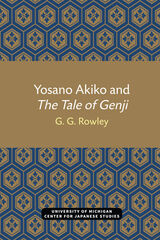 Yosano Akiko and The Tale of Genji
G. G. Rowley
University of Michigan Press, 2000 Yosano Akiko (1878–1942) has long been recognized as one of the most important literary figures of prewar Japan. Her renown derives principally from the passion of her early poetry and from her contributions to 20th-century debates about women. This emphasis obscures a major part of her career, which was devoted to work on the Japanese classics and, in particular, the great Heian period text The Tale of Genji. Akiko herself felt that Genji was the bedrock upon which her entire literary career was built, and her bibliography shows a steadily increasing amount of time devoted to projects related to the tale. This study traces for the first time the full range of Akiko’s involvement with The Tale of Genji. The Tale of Genji provided Akiko with her conception of herself as a writer and inspired many of her most significant literary projects. She, in turn, refurbished the tale as a modern novel, pioneered some of the most promising avenues of modern academic research on Genji, and, to a great extent, gave the text the prominence it now enjoys as a translated classic. Through Akiko’s work Genji became, in fact as well as in name, an exemplum of that most modern of literary genres, the novel. In delineating this important aspect of Akiko’s life and her bibliography, this study aims to show that facile descriptions of Akiko as a “poetess of passion” or “new woman” will no longer suffice.
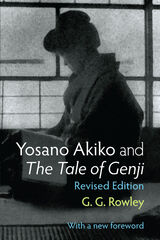 Yosano Akiko and The Tale of Genji
G. G. Rowley
University of Michigan Press, 2000 Yosano Akiko (1878–1942) has long been recognized as one of the most important literary figures of prewar Japan. Her renown derives principally from the passion of her early poetry and from her contributions to 20th-century debates about women. This emphasis obscures a major part of her career, which was devoted to work on the Japanese classics and, in particular, the great Heian period text The Tale of Genji. Akiko herself felt that Genji was the bedrock upon which her entire literary career was built, and her bibliography shows a steadily increasing amount of time devoted to projects related to the tale. This study traces for the first time the full range of Akiko’s involvement with The Tale of Genji.
The Tale of Genji provided Akiko with her conception of herself as a writer and inspired many of her most significant literary projects. She, in turn, refurbished the tale as a modern novel, pioneered some of the most promising avenues of modern academic research on Genji, and, to a great extent, gave the text the prominence it now enjoys as a translated classic. Through Akiko’s work Genji became, in fact as well as in name, an exemplum of that most modern of literary genres, the novel. In delineating this important aspect of Akiko’s life and her bibliography, this study aims to show that facile descriptions of Akiko as a “poetess of passion” or “new woman” will no longer suffice.
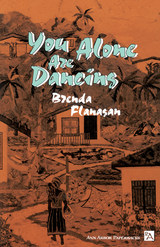 You Alone Are Dancing
Brenda Flanagan
University of Michigan Press, 1996 Rape, the devastation of hurricane Flora, a child's tragic death, and an indifferent and corrupt government are some of the numerous problems challenging the people of Rosehill. Set on the fictional island of Santabella and spanning three years, You Alone Are Dancing follows the life of young Beatrice Salandy, balancing her ambitions, obligations, and love for Sonny Allen. Determined to create his own opportunities, Sonny leaves Rosehill for the United States in a swirl of promises and expectations. Beatrice remains on Rosehill, sharing her neighbors' struggle, adding their pain to her own, but sharing as well their music and their laughter, their history and their allegiance to it.
Like Santabella, set in an indifferent blue sea, Rosehill is part of a larger neglected Caribbean society, and Beatrice must learn to negotiate its tides and ebbs, overcome its storm and ensure its lulls, as she peruses what has to be done. She succeeds--but at a price that changes her life forever, as it does that of Sonny and all of Rosehill.
"In Brenda Flanagan's novel, You Alone Are Dancing, there's talk and talk, the life-long dance of talk--it's lyrical, raucous, sorrowful, vibrant, inventive. And there you are, on the island, in the midst and mix of it all. What the best musicians do with wood and brass and air, Brenda Flanagan does with words--she gives them voice and life." --Janet Kauffman, author of Places in the World a Woman Could Walk
Brenda Flanagan, a native of Trinidad, is Professor of English at Eastern Michigan University, where she teaches creative writing and African-American and Caribbean literature. Flanagan is a three-time Hopwood award winner, including one for this novel. She is also the author of a play, When the Jumbie Bird Calls, and a forthcoming short story collection, In Praise of Older Women and Other Crimes. Her poetry and short fiction have appeared in Caliban, Calalloo, the Caribbean Review, and the Indiana Review, among others.
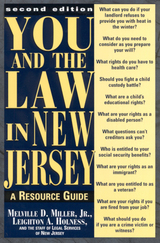 You and the Law in New Jersey: A Resource Guide
Leighton A. Holness
Rutgers University Press, 1998 What are your rights if you are fired from your job? What should you do if you are a crime victim or witness? How can you fight a child custody battle? What can you do if your landlord refuses to provide you with heat in the winter? You and the Law in New Jersey, newly updated, is the ideal guidebook to assist readers in understanding the law, their rights, and how to get legal help. In clear, straightforward language, the book describes how law is made, how to do legal research, how the state and federal court systems work, how to get help if you can't afford a lawyer, how to hire a lawyer, and what to do if you are sued. The second edition contains much new information, including a chapter on credit, debt, and banking, and others on the rights of senior citizens, veterans, and people with disabilities. The authors have also expanded their information on the rights of renters, homeowners, and consumers of public utilities, as well as their treatment of employment law. They have rewritten chapters on health and public benefits to address the recent sweeping reforms of federal and state law. Other topics include family matters such as marriage, divorce, adoption, and domestic violence; the landlord-tenant relationship and buying a home; consumer rights; the criminal justice system; and citizen involvement in environmental law.
You and Your Deaf Child: A Self-Help Guide for Parents of Deaf and Hard of Hearing Children
John Adams
Gallaudet University Press, 1997 You and Your Deaf Child is a guide for parents of deaf or hard of hearing children that explores how parents and their children interact. It examines the special impact of having a deaf child in the family.
Eleven chapters focus on such topics as feelings about hearing loss, the importance of communication in the family, and effective behavior management. Many chapters contain practice activities and questions to help parents retain skills taught in the chapter and check their grasp of the material. Four appendices provide references, general resources, and guidelines for evaluating educational programs.
Once parents have worked through You and Your Deaf Child, this friendly guide can be referred to for specific information and advice as different situations arise.
You Are Here
Paul Breslin
Northwestern University Press, 2000 Acerbic, rueful, tender, and suffused with understated wit, Paul Breslin's first collection of poems inhabits a realm of hard truths: the human condition in extremis, imprisoned or enslaved; the urban nightmare of incipient violence; the universe of adult dementia seen from the perspective of the baffled child.
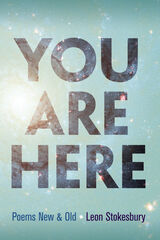 You Are Here: Poems New & Old
Leon Stokesbury
University of Arkansas Press, 2016 Winnowed from a distinguished career, then distilled, then polished and winnowed again, the poems in You Are Here are Leon Stokesbury’s best from fifty years of published work. The selections from his earlier volumes are as fully realized as one would expect from the winner of the AWP Poetry Competition and the Poets’ Prize. But it is in Stokesbury’s new work, collected under the heading “These Days,” that he reveals something completely different. From a carnival sideshow to Hitchcock’s Mount Rushmore, from John Keats’s backyard to the miseries of a failed crematorium operator, every turned page divulges a particular we didn’t see coming. You Are Here is like a sideshow of this modern world, even when we discover, amazed, our selves looking back at us. “Why do we still only stand here?” Stokesbury asks in one of his earliest salvos. The poems in this collection give such varied answers that readers will have no idea what the next page holds, only that they will find themselves somewhere new.
 You Are Not a Kinesthetic Learner: The Troubled History of the Learning Style Idea
Thomas Fallace
University of Chicago Press, 2025 A compelling history of the learning style concept and how it was shaped by shifting ideas in psychology, anthropology, and education.
The widely embraced notion that we all process information in one of three distinct modes—visual, auditory, or kinesthetic—has informed educational practices for decades. In recent years, however, numerous studies have questioned the effectiveness of aligning instruction with the alleged learning styles of individual students. So, why is it still commonplace in the literature on beneficial teaching at all levels of education?
In You Are Not a Kinesthetic Learner: The Troubled History of a Dangerous Idea, historian Thomas Fallace traces the origins, evolution, and history of the learning style idea, demonstrating its relationship to a legacy of unequal education for children of color. Fallace argues that the research supporting the learning style idea was problematic from its inception in the 1910s and that it was used to label and justify a diminished curriculum for many Black and Latine students, whose cultural differences were perceived as weaknesses. In recent years, numerous empirical studies have not found the approach to be effective. This fascinating history clearly shows the danger of sorting and labeling students with permanent style identities and makes a strong case for removing learning styles as the basis for any educators’ instructional toolkit.
The first book-length history of learning styles, You Are Not a Kinesthetic Learner encourages us all to consider the research, be open to future developments and updates, and question even our most intuitive assumptions.
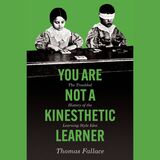 You Are Not a Kinesthetic Learner: The Troubled History of the Learning Style Idea
Thomas Fallace
University of Chicago Press, 2025 This is an auto-narrated audiobook version of this book.
A compelling history of the learning style concept and how it was shaped by shifting ideas in psychology, anthropology, and education.
The widely embraced notion that we all process information in one of three distinct modes—visual, auditory, or kinesthetic—has informed educational practices for decades. In recent years, however, numerous studies have questioned the effectiveness of aligning instruction with the alleged learning styles of individual students. So, why is it still commonplace in the literature on beneficial teaching at all levels of education?
In You Are Not a Kinesthetic Learner: The Troubled History of a Dangerous Idea, historian Thomas Fallace traces the origins, evolution, and history of the learning style idea, demonstrating its relationship to a legacy of unequal education for children of color. Fallace argues that the research supporting the learning style idea was problematic from its inception in the 1910s and that it was used to label and justify a diminished curriculum for many Black and Latine students, whose cultural differences were perceived as weaknesses. In recent years, numerous empirical studies have not found the approach to be effective. This fascinating history clearly shows the danger of sorting and labeling students with permanent style identities and makes a strong case for removing learning styles as the basis for any educators’ instructional toolkit.
The first book-length history of learning styles, You Are Not a Kinesthetic Learner encourages us all to consider the research, be open to future developments and updates, and question even our most intuitive assumptions.
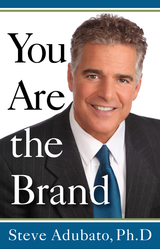 You Are the Brand
Adubato, Steve
Rutgers University Press, 2011 Let's face it--it's a tough economic world today and there's cutthroat competition. Dive into Adubato's book and get ready to turn a powerful page in life.
Steve Adubato's entire professional life has been about branding--learning it, living it, making mistakes at it, teaching it at several universities, while discovering how to find the fine line between shameless self-promotion and smart, strategic branding--first for himself, then for others, and now for readers interested in an honest analysis of the good and bad in practiced branding. So, what's really in this book for you? Adubato profiles the brands of more than thirty people and companies and skillfully analyzes and dissects their strategies. His sage advice and on-target approach will help readers who: - Feel they have something of value to offer,
- Are in a market-driven or aggressive environment in which their name, reputation, and persona hold the keys to their success,
- Want their customers to buy products and services again and again,
- Feel unappreciated in their current job,
- Have recently lost a job or are seeking their first job out of college,
- Are trying to get back into the workforce after years of being "out of it."
You Are the Phenomenology
Timothy O'Keefe
University of Massachusetts Press, 2018 You Are the Phenomenology is a cross-genre book—a blend of poetry, songs, lyric prose, and invented forms—that explores the everyday junctures of perception, compassion, and multiplicity. How might our powers of association create shared experiences without distorting the contexts from which those experiences emerge?
One of the volume's innovative forms is a poetic series called "Quadrilaterals"—four-line poems that present the reader with various ways to leap associative gaps:
Quadrilateral : Pinch in Your Heel
Soars the mackled sound, kites ago :
A Polish boy thinks with accordions, adopts a stammer :
When were we first older than we wanted to be :
That was our city, our chisel, the corbeil from which we ate.
 You as of Today My Homeland: Stories of War, Self, and Love
Tayseer Al-Sboul
Michigan State University Press, 2016 This volume comprises a translation of the first post-modernist historical Arabic novella, You as of Today, by the renowned Jordanian writer Tayseer al-Sboul, and his two short stories “Red Indian” and “The Rooster’s Cry.” “Red Indian” and “The Rooster’s Cry” complement You as of Today by providing, with striking transparency and precision, narratives that examine man’s journey to self-discovery through events that are culturally unique, transparent, and at times shocking. This volume is rich with tales of war, love, politics, censorship, and the search for self in a complex and conflicting Arab world at a critical time in its history. In a captivating style consistent with the nature of events narrated in the text, al-Sboul unveils the inner nature of social, political, and religious patterns of life in Arab society with an honesty and skill that renders You as of Today My Homeland a testimony of human experiences that transcend the boundaries of time and place.
You, Beast: Poems
Nick Lantz
University of Wisconsin Press, 2017 With macabre humor, You, Beast explores the roots and limits of human empathy. Nick Lantz examines our strange, absurd, and often brutal relationship with other animals, from roaches scuttling across the kitchen floor to pigs whose heart valves can replace our own. In poems ranging from found text to villanelles, and from short plays to fables, this lyric collection tracks the troubled ways we define our humanity through mythology, language, politics, art, and food.
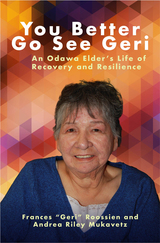 You Better Go See Geri: An Odawa Elder’s Life of Recovery and Resilience
Frances “Geri” Roossien
Oregon State University Press, 2021 Born into an Odawa family in Michigan in 1932, Frances “Geri” Roossien lived a life that was both ordinary and instructive. As a child, she attended Holy Childhood Boarding School; as an adult, she coped with her trauma through substance abuse; and in recovery she became a respected elder who developed tribally centered programs for addiction and family health, including the first Native American Recovery Group.
While a graduate student, Andrea Riley Mukavetz was invited into Geri’s home to listen to her stories and assist in compiling and publishing a memoir. Geri wanted her stories to serve as a resource, form of support, and affirmation that Indigenous people can be proud of who they are and overcome trauma. Geri hoped to be a model to current and future generations, and she believed strongly that more Indigenous people should become substance abuse counselors and work with their communities in tribally specific ways.
Geri died in 2019, but Riley Mukavetz carried on the work. This book presents Geri’s stories, lightly edited and organized for clarity, with an introduction by Riley Mukavetz that centers Geri’s life and the process of oral history in historical and theoretical context.
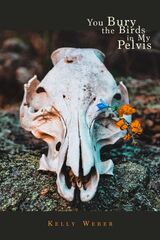 You Bury the Birds in My Pelvis
Kelly Weber
Omnidawn, 2023 Poems in a range of forms that consider the queer body, chronic illness, and love amid rural plains landscapes.
Set against a rural plains landscape of gas stations, wind, and roadkill bones littering the highways, You Bury the Birds in My Pelvis is a love letter to the nonbinary body as a site of both queer platonic intimacy and chronic illness. Looking at art and friendship, Kelly Weber’s poems imagine alternatives to x-rays, pathologizing medical settings, and other forms of harm. Considering the meeting place of radiological light and sunlit meadows, the asexual speaker’s body, and fox skeletons, these poems imagine possible forms of love. With the body caught in medical crisis and ecological catastrophe, Weber questions how to create a poetry fashioned both despite and out of endings.
You Bury the Birds in My Pelvis explores forms with plainspoken prose poems with a mix of short poems and longer lyric sections that navigate insurance systems and complicated rural relationships to queerness.
You Bury the Birds in My Pelvis is the winner of the 2022 Omnidawn 1st/2nd Poetry Book Contest, chosen by Mary Jo Bang.
 You Call This an Election?: America's Peculiar Democracy
Steven E. Schier
Georgetown University Press, 2003 Those who do not have their heads buried too deeply in partisan sands will know that there is something awry with the American form of electoral democracy. Florida's continuing ability to misplace votes recently and in the 2000 Presidential election is only part of the iceberg we have been made privy to-and Steven Schier takes a good, hard, evaluative look not only at what is there in plain sight, but that which lurks below the surface (and not only in Florida and not only with the electoral college). He further proposes practical improvements that will make our surprisingly peculiar democratic processes healthy, whole, and responsive again. Identifying four essential evaluative criteria for a democracy that genuinely works, Schier asks us to examine the degree to which our system promotes political stability, the degree to which our elected officials are held accountable, what the problems are with voter turnout and how to improve it, and asks for a meaningful scrutiny of governmental policy. No look at our peculiar democracy would be complete without an examination of other established democracies, nor a look at how special interests warp political parties and the concept of majority rule. The solution to many of our electoral problems, Schier argues, lies in enhancing the roles and influence of political parties. Schier proposes reforms that include broadening voter registration; giving parties large blocks of free TV time; adopting one-punch partisan ballots, making it easier for voters to cast a straight-party vote; abandoning initiatives which clutter up the ballot; and utilizing party-based financing to boost voter turnout. With these proposals, he encourages the creative consideration of election reform, and shows how the Florida 2000 race may have played out had these suggestions been in place. Schier's book appeals to any and every citizen interested in our electoral system and its role in governmental politics. It is invaluable for professionals in political science and ideal for students in American government, political parties, elections, and political behavior courses, as well for political scientists. Any citizens concerned about the conduct of American elections will discover here a fresh and focused analysis of our problems at the ballot box.
You Can Believe!: An Introduction to the New Christianity
Grant Schnarr
Swedenborg Foundation Publishers, 2006 Does God love and care for each individual? Should the Bible be interpreted literally? Why are we here? Questions such as these persist for many people today. Grant Schnarr presents "the new Christianity," based on the Bible and the teachings of the eighteenth-century theologian Emanuel Swedenborg. Schnarr examines the underlying reasons that prevent people from truly believing and provides logical and positive answers to life's questions. The result is a solid foundation for building faith and embracing a relationship with God.
You Can Cross the Massacre on Foot
Freddy Prestol Castillo
Duke University Press, 2019 In 1937 tens of thousands of Haitians living in the Dominican Republic were slaughtered by Dominican troops wielding machetes and knives. Dominican writer and lawyer Freddy Prestol Castillo worked on the Haiti-Dominican Republic border during the massacre, known as “The Cutting,” and documented the atrocities in real time in You Can Cross the Massacre on Foot. Written in 1937, published in Spanish in 1973, and appearing here in English for the first time, Prestol Castillo's novel is one of the few works that details the massacre's scale and scope. Conveying the horror of witnessing such inhumane violence firsthand, it is both an attempt to come to terms with personal and collective guilt and a search to understand how people can be driven to indiscriminately kill their neighbors.
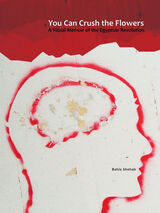 You Can Crush the Flowers: A Visual Memoir of the Egyptian Revolution
Bahia Shehab
Gingko, 2021 Part visual history, part memoir, You Can Crush the Flowers is a chronicle of the 2011 Egyptian Revolution and its aftermath, as it manifested itself not only in the art on the streets of Cairo but also through the wider visual culture that emerged during the revolution. Marking the ten-year anniversary of the revolution, celebrated Egyptian-Lebanese artist Bahia Shehab tells the stories that inspired both her own artwork and the work of her fellow revolutionaries. Shehab narrates the events of the revolution as they unfolded, describing on one hand the tactics deployed by the regime to drive protesters from the street—from the use of tear gas and snipers to brute force, intimidation techniques, and virginity tests—and on the other hand the retaliation by the protesters online and on the street in marches, chants, street art, and memes. Throughout this powerful and moving account, which includes over one hundred images, Shehab responds to all these aspects of the revolution as both artist and activist. The result bears witness to the brutality of the regime and pays tribute to the protestors who bravely defied it.
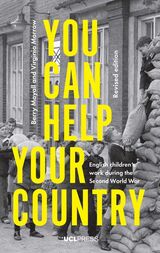 You Can Help Your Country: English Children's Work During the Second World War
Berry Mayall and Virginia Morrow
University College London, 2020 As men and women throughout England were called up for war work during World War II, the country needed to generate as much food and wealth as possible to support them. Children quickly came to be seen as a vital resource. Many children worked the land, planting and harvesting crops, raising money for the war effort, and carrying out a range of other tasks. That war work followed on debates throughout the preceding decades about the character and proper activities of childhood, debates that saw commentators in education and workers' organizations arguing about whether children should stay in school and learn or should combine their education with war-related work. The work of children during the war raised a question that still has relevance today: Should children be conceptualized as citizens of the future or as participating citizens now? That debate has led to even larger questions about the social construction of childhood. As children have increasingly withdrawn from paid and unpaid work, their contribution today can best be understood through their work at school, though that work is often disguised or devalued as mere socialization. The interwar years and the war years in England were a key time for re-thinking childhood, and the issues that were raised then still have relevance to the role of children in society today.
You Can Tell the Horse Anything
Mary A. Koncel
Tupelo Press, 2003 You Can Tell the Horse Anything is a debut collection of prose poems that explores the many manifestations of longing-true love, spiritual redemption, a good night’s sleep, the list is long and varied. Using humor and lyricism, they give voice to an array of animals as well as human characters who inhabit the sometimes rocky terrain between the common place and the absurd. Ultimately, these poems — these tightly packed mini-dramas — are microcosms of our own everyday lives. They challenge our sense of self, our sense of belonging and comfort. They ask us to tread carefully in a world that is easily turned on its side. Yet, ironically, they also encourage us to be hopeful, to realize that solace and small joy can be found talking to a horse or raising worms on a moonlit mountain.
 You Can’t Say You Can’t Play
Vivian Gussin Paley
Harvard University Press, 1993 Who of us cannot remember the pain and humiliation of being rejected by our classmates? However thick-skinned or immune to such assaults we may become as adults, the memory of those early exclusions is as palpable to each of us today as it is common to human experience. We remember the uncertainty of separating from our home and entering school as strangers and, more than the relief of making friends, we recall the cruel moments of our own isolation as well as those children we knew were destined to remain strangers.
In this book Vivian Paley employs a unique strategy to probe the moral dimensions of the classroom. She departs from her previous work by extending her analysis to children through the fifth grade, all the while weaving remarkable fairy tale into her narrative description. Paley introduces a new rule—“You can’t say you can’t play”—to her kindergarten classroom and solicits the opinions of older children regarding the fairness of such a rule. We hear from those who are rejected as well as those who do the rejecting. One child, objecting to the rule, says, “It will be fairer, but how are we going to have any fun?” Another child defends the principle of classroom bosses as a more benign way of excluding the unwanted.
In a brilliant twist, Paley mixes fantasy and reality, and introduces a new voice into the debate: Magpie, a magical bird, who brings lonely people to a place where a full share of the sun is rightfully theirs. Myth and morality begin to proclaim the same message and the schoolhouse will be the crucible in which the new order is tried. A struggle ensues and even the Magpie stories cannot avoid the scrutiny of this merciless pack of social philosophers who will not be easily caught in a morality tale.
You Can’t Say You Can’t Play speaks to some of our most deeply held beliefs. Is exclusivity part of human nature? Can we legislate fairness and still nurture creativity and individuality? Can children be freed from the habit of rejection? These are some of the questions. The answers are to be found in the words of Paley’s schoolchildren and in the wisdom of their teacher who respectfully listens to them.
You Darling Thing
Monica Ferrell
Four Way Books, 2018 Guided by a poem assembled from “compliments” paid by a suitor to his girlfriend (which echo the endearments Anna Karenina’s Count Vronsky directs toward his racehorse, before she collapses under his weight and is shot), You Darling Thing investigates bridehood and the concept of the vow through the voices of a variety of brides, ex-brides, courtesans, and wives. The book is ultimately less about marriage than about potentiality and promise, an engagement with what seems possible before it stops being possible—anticipation at the outset of a hunt, embryos that stay unborn, youthful predictions for a life before it’s lived, and delight in the expressive possibilities afforded by language and art.
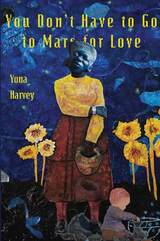 You Don’t Have to Go to Mars for Love
Yona Harvey
Four Way Books, 2020 The poems of award-winning poet Yona Harvey’s much anticipated You Don’t Have to Go to Mars for Love follow an unnamed protagonist on her multidimensional, Afro-futuristic journey. Her story stretches the boundaries normally constraining a black, female body like hers. Half-superhero, half-secret-identity, she encounters side-slipping, speculative realities testing her in poems that appear like the panels of a comic book. Music directs readers through large and small emotional arcs, constantly retroubled by lyric experimentation. Harvey layers her poems with a chorus of women’s voices. Her artful use of refrain emphasizes the protagonist’s meaning making and doubling back: “Who am I to say? The eye is often mistaken. Or is it the mind? Always eager to interpret.” Our hero is captured, escapes, scuba dives, goes interstellar, and she emerges on the other end of her journey renewed, invoking the gods: “taunt the sharks. & when the glaciers get to melting, / all God’s River’s we shall haunt.”
 You Feel So Mortal: Essays on the Body
Peggy Shinner
University of Chicago Press, 2014 Feet, bras, autopsies, hair—Peggy Shinner takes an honest, unflinching look at all of them in You Feel So Mortal, a collection of searing and witty essays about the body: her own body, female and Jewish; those of her parents, the bodies she came from; and the collective body, with all its historical, social, and political implications. What, she asks, does this whole mess of bones, muscles, organs, and soul mean? Searching for answers, she turns her keen narrative sense to body image, gender, ethnic history, and familial legacy, exploring what it means to live in our bodies and to leave them behind.
Over the course of twelve essays, Shinner holds a mirror up to the complex desires, fears, confusions, and mysteries that shape our bodily perceptions. Driven by the collision between herself and the larger world, she examines her feet through the often-skewed lens of history to understand what makes them, in the eyes of some, decidedly Jewish; considers bras, breasts, and the storied skills of the bra fitter; asks, from the perspective of a confused and grieving daughter, what it means to cut the body open; and takes a reeling time-trip through myth, culture, and history to look at women’s hair in ancient Rome, Laos, France, Syria, Cuba, India, and her own past. Some pieces investigate the body under emotional or physical duress, while others use the body to consider personal heritage and legacy. Throughout, Shinner writes with elegance and assurance, weaving her wide-ranging thoughts into a firm and fascinating fabric.
Turning the category of body books on, well, its ear, You Feel So Mortal offers a probing view of our preoccupation with the body that is both idiosyncratic and universal, leaving us with the deep satisfaction of our shared humanity.
You Got Older: A Play
Clare Barron
Northwestern University Press, 2017 Winner of a 2015 Obie Award for Playwriting
Mae has returned home to help her father while he undergoes treatment for cancer. But she needs a little help herself. She’s just lost her boyfriend and her job. (It turns out there are consequences to dating your boss . . .) And she’s desperately craving intimacy of any sort. Mae escapes into the the arms of a chain-smoking, imaginary Cowboy who turns her on and ties her up. And she escapes into chatter with her siblings as they attempt to distract and entertain themselves in a hospital waiting room. But ultimately, it’s her deep love for her father that teaches Mae to remain optimistic and ambitious in the face of suffering and that gets her back on track.
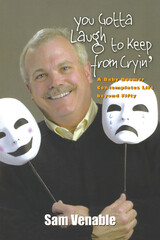 You Gotta Laugh to Keep From Cryin': A Baby Boomer Contemplates Life Beyond Fifty
Sam Venable
University of Tennessee Press, 2003 Sam Venable is one of America’s seventy-six million Baby Boomers who are turning into their parents. He can’t quite see without his reading glasses, he thinks the music kids listen to these days is nothing but a loud racket, and his belt is mysteriously creeping up higher and higher on his chest.
The way Venable figures it, he’s roaring along the road (at about twenty-seven miles per hour, the average speed for someone his age) to Codgerville. You Gotta Laugh to Keep From Cryin’ highlights the observations and lifestyle changes (and a few other things he can’t quite seem to remember at the moment) that Venable has made along the way.
From the day his wife discovers his first ear hair, Venable begins to recognize the signs of old age. Though he had reconciled himself to daily fiber and a distinguished head of gray, he is one step further to an insatiable desire for cafeteria food and permanently leaving his car’s right turn signal flashing.
The news isn’t all bad, though. To his surprise, Venable discovers that his new appearance and habits have qualified him for the senior discount on breakfast at his favorite restaurant. After reading about a scientific study concluding that men’s brains shrink faster than women’s in the normal aging process, Venable has a new source of excuses to explain to his wife why he is missing important dates, times, places, and appointments.
As an official CIT (Codger In Training), Venable delights in other newfound freedoms. He can stand in a fast-food line and stare at the menu for a full two minutes without saying a word (besides, he can’t hear the people behind him grumbling). He can drive as slowly as he likes and has perfected the art of maintaining a death grip on the steering wheel of his car. And he really doesn’t have to listen to anyone anymore; he can merely turn their way from time to time and mumble, “Huh?”
From the swinging doors whose “Push/Pull” directions elude him to the high-tech mysteries of ATMs designed to baffle the elderly, Sam Venable’s rollicking view of life after fifty will leave readers laughing and happy to be a member of the AARP set.
The Author: Sam Venable, recognized for his humor writing in 2000, 2001, and 2002 by the Tennessee Press Association, is a columnist for the Knoxville News-Sentinel. He is the author of a number of books, including Rock-Elephant: A Story of Friendship and Fishing and Mountain Hands: A Portrait of Southern Appalachia. He lives in Knoxville, Tennessee.
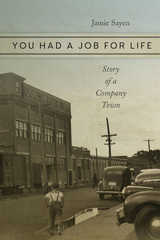 You Had a Job for Life: Story of a Company Town
Jamie Sayen
University Press of New England, 2017 Absentee owners. Single-minded concern for the bottom line. Friction between workers and management. Hostile takeovers at the hands of avaricious and unaccountable multinational interests. The story of America’s industrial decline is all too familiar—and yet, somehow, still hard to fathom. Jamie Sayen spent years interviewing residents of Groveton, New Hampshire, about the century-long saga of their company town. The community’s paper mill had been its economic engine since the early twentieth century. Purchased and revived by local owners in the postwar decades, the mill merged with Diamond International in 1968. It fell victim to Anglo-French financier James Goldsmith’s hostile takeover in 1982, then suffered through a series of owners with no roots in the community until its eventual demise in 2007. Drawing on conversations with scores of former mill workers, Sayen reconstructs the mill’s human history: the smells of pulp and wood, the injuries and deaths, the struggles of women for equal pay and fair treatment, and the devastating impact of global capitalism on a small New England town. This is a heartbreaking story of the decimation of industrial America.
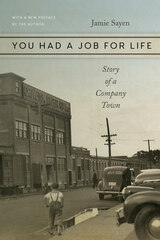 You Had a Job for Life: Story of a Company Town
Jamie Sayen
Brandeis University Press, 2023 A local story with profound national implications, now available as a paperback with a new preface by the author.
Absentee owners. Single-minded concern for the bottom line. Friction between workers and management. Hostile takeovers at the hands of avaricious and unaccountable multinational interests. The story of America’s industrial decline is all too familiar—and yet, somehow, still hard to fathom. Jamie Sayen spent years interviewing residents of Groveton, New Hampshire, about the century-long saga of their company town. The community’s paper mill had been its economic engine since the early twentieth century. Purchased and revived by local owners in the postwar decades, the mill merged with Diamond International in 1968. It fell victim to Anglo-French financier James Goldsmith’s hostile takeover in 1982, then suffered through a series of owners with no roots in the community until its eventual demise in 2007. Drawing on conversations with scores of former mill workers, Sayen reconstructs the mill’s human history: the smells of pulp and wood, the injuries and deaths, the struggles of women for equal pay and fair treatment, and the devastating impact of global capitalism on a small New England town. This is a heartbreaking story of the decimation of industrial America.
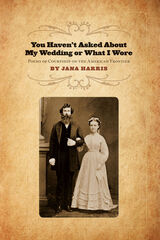 You Haven't Asked About My Wedding or What I Wore: Poems of Courtship on the American Frontier
Jana Harris
University of Alaska Press, 2014 “Nowhere / on these parchment leaves do I find / myself, my likeness, my name, / not a whisper—Cynthia—not one / breath of me.”
For thirty years poet Jana Harris researched the diaries and letters of North American pioneer women. While the names and experiences of the authors varied, Harris found one story often connected them: their most powerful memories were of courtships and weddings. They dreamed of having a fine wedding while they spent their lives hauling water, scrubbing floors, and hoping for admirers. Many married men they hardly knew.
Based on primary research of nineteenth-century frontier women, Harris uses her compelling poetry to resurrect a forgotten history. She captures the hope, anxiety, anger, and despair of these women through a variety of characters and poetic strategies, while archival photographs give faces to the names and details to the settings. Harris’s meticulous research and stirring words give these pioneer women a renewed voice that proves the timelessness of the hopes and fears of love and marriage.
You Know My Method: Science of the Detective
J.K. Van Dover
University of Wisconsin Press, 1994 You Know My Method surveys the century following Edgar Allan Poe’s invention of the fictional detective in 1841. The same century saw the development of the idea of the scientist as a person who defined himself by his use of a disciplined method of inquiry. By 1940, the detective had established himself as the most popular figure in literature, and science had become the custodian of truth in the modern world. These two developments were not unrelated.
The four principal writers covered are Edgar Allan Poe, Sir Arthur Conan Doyle, R. Austin Freeman, and Arthur B. Reeve. Another dozen more writers are treated somewhat more briefly: Gaboriau, Pinkerton, Green, Morrison, Futrelle, and Leroux, among others.
 You Know Nothing: Stories
Yasmina Din Madden
Northwestern University Press, 2026 Questioning the roles of women’s bodies and the emotions that drive them in Madden’s debut story collection
Following women and girls as they navigate everyday life in contemporary America, You Know Nothing explores the experiences of mothers, daughters, sisters, wives, and lovers whose inner worlds are animated by a tangle of emotion—from desire to rage and everything in between. Yasmina Din Madden’s characters inhabit the margins of their cultures, their diverse backgrounds united by their profound unease and the female bodies in which each resides. Madden takes us into the lives of a ravenous mother who devours her own son, a woman who sands away parts of her body, a Vietnamese mother facing her too-American children, and a fiercely protective dog owner who wanders a dog park with Satan’s master. In this debut collection, Madden brings these characters to life in bite-size stories of surreal revelation and inquisitive long-form explorations alike, leaving newfound clarity and hypnotizing carnage in her wake.
You May See a Stranger: Stories
Paula Whyman
Northwestern University Press, 2016 Miranda Weber is a hot mess. In Paula Whyman’s debut collection of stories, we find her hoarding duct tape to ward off terrorists, stumbling into a drug run with a crackhead, and—frequently—enduring the bad behavior of men. A drivers’ education class pulsing with racial tension is the unexpected context of her sexual awakening. As she comes of age, and in the three decades that follow, the potential for violence always hovers nearby. She’s haunted by the fate of her disabled sister and—thanks to the crack cocaine epidemic of the ’80s, the wars in the Middle East, and sniper attacks—the threat of crime and terror in her hometown of Washington, D.C. Miranda can be lascivious, sardonic, and maddeningly self-destructive, but, no matter what befalls her, she never loses her sharp wit or powers of observation, which illuminate both her own life and her strange, unsettling times.
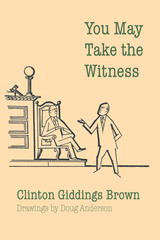 You May Take the Witness
By Clinton Giddings Brown
University of Texas Press, 1955 When Clinton Giddings Brown (1882–1964) retired from a long and successful career as a trial lawyer in San Antonio, Texas, fishing on the Gulf Coast was out—by doctor’s orders. So he sat on the front gallery of his house in San Antonio and fished with a lead pencil in the richly stocked memories of his professional life. “Some days I didn’t get a nibble, but some mornings they were biting fine.”
The resultant and delightful catch is the story of a full, merry, and successful life. From the day in 1906 when “Mr. Clint” hung out his shingle in a little office over his father’s bank, through the long succession of “fine scraps, rough and tumble, no holds barred,” which were the jury cases he tried for defendant corporations in personal-injury damage suits, there was not much about the law and about human nature that he did not have the opportunity to learn.
The first client in the little office was Charlie Ross, a Pullman porter who wanted to make sure that the title on his new house was clear. The fee was $15, and Charlie was his friend for life. In the pages that follow the reader will meet many other unforgettable characters, including Dr. John Brinkley, the man who made a million dollars a year from his goat-gland operation until Dr. Morris Fishbein called him a “quack”; old Jim Wheat, who killed a white man, and Jim’s little grandson Lige, who knew what God would do to him if he told lies in court; Bosco, who forgot his complete paralysis when the lady lure came into the picture; and pretty little Mary, whom the jury loved.
Brown was elected district attorney for Bexar County, Texas, in 1913 and became mayor of San Antonio the following year; in the latter office he served two terms, resigning to join the Army in the First World War. On his return from France he was invited to work with a law firm that represented many large corporations, among them the Public Service Company, which ran San Antonio’s streetcar and bus lines, and the Southern Pacific Railroad. Soon made a partner, he remained with the firm until his retirement, and through a quarter of a century tried about as many jury cases as any other attorney in the city.
You May Take the Witness is a book for anyone who has ever felt the fascination of courtrooms and trials, and who has not? It is also a book in which lawyers will find an excellent refresher course for both mind and spirit. Here are invaluable tips on all the ins-and-outs of jury trial, not from the flat dimensions of a law-school text but from the full, real world of actual trials and the men and women involved. Brown tells how to handle witnesses and to pick juries, when to object and when not to object. The most important lesson of all, he says, is to value the jury and be an honest person before them. “The jury is decent, so you be decent, and ‘be yourself.’”
It is clear that Clinton Giddings Brown succeeded as a lawyer because he succeeded as a human being, just as it is clear that he knows how to tell story after fine story because he enjoyed living each episode of his life to its fullest.
You, Me, and the Violence
Catherine Taylor
Ohio State University Press, 2017 “Things puppets can do to us: charm, deceive, captivate, fool, trick, remind, amuse, distract, bore, repulse, annoy, puzzle, transport, provoke, fascinate, stand in for, kill.” In You, Me, and the Violence, Catherine Taylor ponders the nature of personal and political autonomy, focusing on the surprising juxtaposition of puppetry and military drones. In a book at once politically significant and narratively engaging, Taylor blends genres to question the roles of individuals within society and expose the gritty and emotional underpinnings of the seemingly mechanical process of a remote soldier.
From conversations with her own brother about his military experiences to Punch and Judy, from the original tale of Pinocchio to the radio chatter of soldiers in active drone operation, Taylor writes about family, power, and the “theater” of war in a voice both sly and sobering, heartbreaking and hopeful.
You Must Revise Your Life
William Stafford
University of Michigan Press, 1987 Stafford reflects on the writing process and on the influences on his art
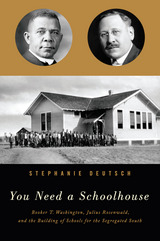 You Need a Schoolhouse: Booker T. Washington, Julius Rosenwald, and the Building of Schools for the Segregated South
Stephanie Deutsch
Northwestern University Press, 2011 Booker T. Washington, the founder of Tuskegee Institute, and Julius Rosenwald, the president of Sears, Roebuck, and Company, first met in 1911 at a Chicago luncheon. By charting the lives of these two men both before and after the meeting, Stephanie Deutsch offers a fascinating glimpse into the partnership that would bring thousands of modern schoolhouses to African American communities in the rural South in the era leading up to the civil rights movement. Trim and vital at just shy of fifty, Rosenwald was the extraordinarily rich chairman of one of the nation’s largest businesses, interested in using his fortune to do good not just in his own Jewish community but also to promote the well-being of African Americans.
Washington, though widely admired, had weathered severe crises both public and private in his fifty-six years. He had dined with President Theodore Roosevelt and drunk tea with Queen Victoria, but he had also been assaulted on a street in New York City. He had suffered personal heartbreak, years of overwork, and the discouraging knowledge that, despite his optimism and considerable success, conditions for African Americans were not improving as he had assumed they would. From within his own community, Washington faced the bitter charge of accommodationism that haunts his legacy to this day. Despite their differences, the two men would work together well and their collaboration would lead to the building of five thousand schoolhouses. By the time segregation ended, the “Rosenwald Schools” that sprang from this unlikely partnership were educating one third of the South’s African American children. These schoolhouses represent a significant step in the ongoing endeavor to bring high quality education to every child in the United States—an ideal that remains to be realized even today.
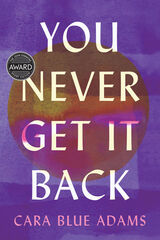 You Never Get It Back
Cara Blue Adams
University of Iowa Press, 2021 The linked stories in Cara Blue Adams’s precise and observant collection offer elegantly constructed glimpses of the life of Kate, a young woman from rural New England, moving between her childhood in the countryside of Vermont and her twenties and thirties in the northeast, southwest, and South in pursuit of a vocation, first as a research scientist and later as a writer. Place is a palpable presence: Boston in winter, Maine in summer, Virginia’s lush hillsides, the open New Mexico sky. Along the way, we meet Kate’s difficult bohemian mother and younger sister, her privileged college roommate, and the various men Kate dates as she struggles to define what she wants from the world on her own terms.
Wryly funny and shot through with surprising flashes of anger, these smart, dreamy, searching stories show us a young woman grappling with social class, gender, ambition, violence, and the distance between longing and having.
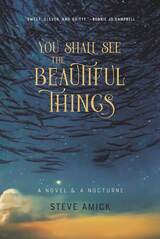 You Shall See the Beautiful Things: A Novel & A Nocturne
Steve Amick
Acre Books, 2023 Envisioned as a “nocturne,” Steve Amick’s playful, multilayered novel expansively retells Eugene Field’s famed verse “Wynken, Blynken, and Nod.”
In the fishing village of Scheveningen in 1889, three men build and secretly launch an unorthodox fishing vessel, departing from the long tradition of netting herring using massive boats and large crews. Collaborating in this venture are Wyn van Winkel, a cavalier joker and opium addict currently AWOL from the Aceh War in Sumatra; Ned Nodder, a seasoned fisherman trying to support his family while plagued by narcolepsy and prophetic dreams; and Luuk Blenkin, a scattered young troubadour failing at love and searching for his place in the world.
As formally innovative as the “picarooner” this mismatched trio construct, the narrative lifts off into the fantastical, flitting between reality and irreality. Sparked by lines of the “Dutch lullaby,” the inexplicable adventure unfolds—and along the way, we learn of Wyn’s romantic recklessness, his broken relationship with his father, and the tragedies of war that scarred and changed him. We witness Ned’s unconventional path toward matrimony, as well as the painful loss that made his marriage a true union. We follow Luuk’s fumblings for purpose and fulfillment beyond the disgrace that befell his family and marred both his outlook and his prospects.
In the spirit of a nocturne, Steve Amick envelops his characters in the world of night and dreams. Lyrical, historical, surprising, magical, heartwarming, and heartbreaking, You Shall See the Beautiful Things will make readers look at the stars—and herring—in a new light.
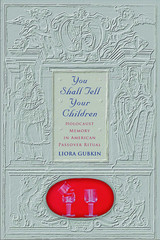 You Shall Tell Your Children: Holocaust Memory in American Passover Ritual
Gubkin, Liora
Rutgers University Press, 2007 Passover is among the most widely observed holidays for American Jews. During this festival of redemption, Jewish families retell the biblical story of Exodus using a ritual book known as a haggadah, often weaving modern tales of oppression through the biblical narrative. References to the Holocaust are some of the most common additions to contemporary haggadot. However, the parallel between ancient and modern oppression, which seems obvious to some, raises troubling questions for many others. Is it possible to find any redemptive meaning in the Nazi genocide? Are we adding value to this unforgivable moment in history? Liora Gubkin critiques commemorations that violate memory by erasing the value of everyday life that was lost and collapse the diversity of responses both during the Shoah and afterward. She recounts oral testimonies from Holocaust survivors, cites references to the holiday in popular American culture, and analyzes examples of actual haggadot. Ultimately, Gubkin concludes that it is possible and important to make a space for Holocaust commemoration, all the time recognizing that haggadot must be constantly revisited and “performed.”
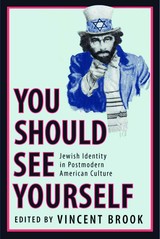 'You Should See Yourself': Jewish Identity in Postmodern American Culture
Brook, Vincent
Rutgers University Press, 2006 The past few decades have seen a remarkable surge in Jewish influences on American culture. Entertainers and artists such as Jerry Seinfeld, Adam Sandler, Allegra Goodman, and Tony Kushner have heralded new waves of television, film, literature, and theater; a major klezmer revival is under way; bagels are now as commonplace as pizza; and kabbalah has become as cool as crystals. Does this broad range of cultural expression accurately reflect what it means to be Jewish in America today? Bringing together fourteen new essays by leading scholars, You Should See Yourself examines the fluctuating representations of Jewishness in a variety of areas of popular culture and high art, including literature, the media, film, theater, music, dance, painting, photography, and comedy. Contributors explore the evolution that has taken place within these cultural forms and how we can best explain these changes. Are variations in our understanding of Jewishness the result of general phenomena such as multiculturalism, politics, and postmodernism, or are they the product of more specifically Jewish concerns such as the intermarriage/continuity crisis, religious renewal, and relations between the United States and Israel? Accessible to students and general readers alike, this volume takes an important step toward advancing the discussion of Jewish cultural influences in this country.
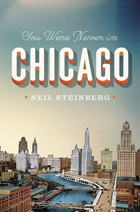 You Were Never in Chicago
Neil Steinberg
University of Chicago Press, 2012 In 1952 the New Yorker published a three-part essay by A. J. Liebling in which he dubbed Chicago the "Second City." From garbage collection to the skyline, nothing escaped Liebling's withering gaze. Among the outraged responses from Chicago residents was one that Liebling described as the apotheosis of such criticism: a postcard that read, simply, "You were never in Chicago."
Neil Steinberg has lived in and around Chicago for more than three decades—ever since he left his hometown of Berea, Ohio, to attend Northwestern—yet he remains fascinated by the dynamics captured in Liebling's anecdote. In You Were Never in Chicago Steinberg weaves the story of his own coming-of-age as a young outsider who made his way into the inner circles and upper levels of Chicago journalism with a nuanced portrait of the city that would surprise even lifelong residents.
Steinberg takes readers through Chicago's vanishing industrial past and explores the city from the quaint skybridge between the towers of the Wrigley Building, to the depths of the vast Deep Tunnel system below the streets. He deftly explains the city's complex web of political favoritism and carefully profiles the characters he meets along the way, from greats of jazz and journalism to small-business owners just getting by. Throughout, Steinberg never loses the curiosity and close observation of an outsider, while thoughtfully considering how this perspective has shaped the city, and what it really means to belong. Intimate and layered, You Were Never in Chicago will be a welcome addition to the bookshelves of all Chicagoans, be they born in the city or forever transplanted.
You Will Hear Thunder
Anna Akhmatova
Ohio University Press, 2017 Anna Akhmatova lived through pre-revolution Russia, Bolshevism, and Stalinism. Throughout it all, she maintained an elegant, muscular style that could grab a reader by the throat at a moment’s notice. Defined by tragedy and beauty in equal measure, her poems take on romantic frustration and the pull of the sensory, and find power in the mundane. Above all, she believed that a Russian poet could only produce poetry in Russia. You Will Hear Thunder spans Akhmatova’s very early career into the early 1960s. These poems were written through her bohemian prerevolution days, her many marriages, the terror and privation of life under Stalin, and her later years, during which she saw her work once again recognized by the Soviet state. Intricately observed and unwavering in their emotional immediacy, these strikingly modern poems represent one of the twentieth century’s most powerful voices.
You Will Hear Thunder
Anna Akhmatova
Ohio University Press, 2017 Anna Akhmatova lived through pre-revolution Russia, Bolshevism, and Stalinism. Throughout it all, she maintained an elegant, muscular style that could grab a reader by the throat at a moment’s notice. Defined by tragedy and beauty in equal measure, her poems take on romantic frustration and the pull of the sensory, and find power in the mundane. Above all, she believed that a Russian poet could only produce poetry in Russia. You Will Hear Thunder spans Akhmatova’s very early career into the early 1960s. These poems were written through her bohemian prerevolution days, her many marriages, the terror and privation of life under Stalin, and her later years, during which she saw her work once again recognized by the Soviet state. Intricately observed and unwavering in their emotional immediacy, these strikingly modern poems represent one of the twentieth century’s most powerful voices.
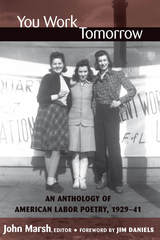 You Work Tomorrow: An Anthology of American Labor Poetry, 1929-41
John Marsh, Editor
University of Michigan Press, 2007 "An outstanding piece of scholarship and a welcome contribution to the field, this collection of neglected but powerful poetry speaks to our own time as much as it does to its own era."
---Nicholas Coles, University of Pittsburgh "Opens up a dramatic new aspect of American literature for study, discussion, and enjoyment. The collection of poems is original and engaging and is sure to be useful for classes in literature, American history, and labor studies."
---Alan Wald, University of Michigan You Work Tomorrow provides a glimpse into a relatively unknown aspect of American literary and labor history---the remarkable but largely forgotten poems published in union newspapers during the turbulent 1930s. Members of all unions---including autoworkers, musicians, teachers, tenant farmers, garment workers, artists, and electricians---wrote thousands of poems during this period that described their working, living, and political conditions. From this wealth of material, John Marsh has chosen poetry that is both aesthetically appealing and historically relevant, dispelling the myth that labor poetry consisted solely of amateurish and predictable sloganeering. A foreword by contemporary poet Jim Daniels is followed by John Marsh's substantive introduction, detailing the cultural and political significance of union poetry. John Marsh is Assistant Professor of English at the University of Illinois at Urbana-Champaign and Coordinator of The Odyssey Project, a year-long, college-accredited course in the humanities offered at no cost to adults living below or slightly above the federal poverty level. A volume in the series Class : Culture
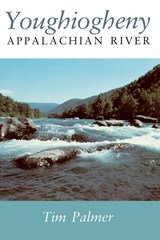 Youghiogheny: Appalachian River
Tim Palmer
University of Pittsburgh Press, 1984
The mountains of southwestern Pennsylvania provide the setting for the most popular whitewater in America: the Youghiogheny River at Ohiopyle. People from all over the nation come to run the rapids, while others simply enjoy the natural beauty of Ohiopyle State Park. But this Appalachian river has many faces as it flows from its source among the scattered mountain farms of western Maryland to its confluence with the Monongahela in the industrial outskirts of Pittsburgh. Though always a home to people who cherish their mountain roots, the region’s river offers recreation for millions of Americans.
By canoe, raft, van, and on foot, Tim Palmer explores the river from its highest spring to its industrial end. He writes about the people - afternoon visitors and eigth-generation natives - and about their pasts and their hopes, about the shaping of the land, and the land’s inevitable shaping of them.
The author chronicles the rise of the five Ohiopyle rafting companies that host 80,000 visitors each year and then takes the reader on one of these outfitted voyages. Finally, Palmer paddles beyond the Appalachians to the river’s urban end near Pittsburgh. Strip mining, land development, and recreation management are examined with a consciousness that asks, What will happen to this remarkable but threatened place?
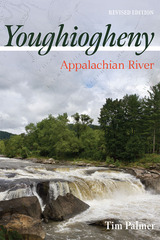 Youghiogheny: Appalachian River, Revised Edition
Palmer, Tim
University of Pittsburgh Press, 2023 First Published in 1984, this 40th Anniversary Edition of Youghiogheny is Revised and Expanded with a Beautiful New Cover
Turbulent rapids and wild shorelines of the Youghiogheny River highlight natural wonders of the Appalachian Mountains, and midway on the stream’s revealing path, Ohiopyle State Park is a showcase of beauty and has become a recreational hotspot where the river thunders over its iconic falls and cascades through the wooded gorges of Pennsylvania. With deep reflection, a compelling sense of adventure, and family ties to the waterway going back many generations, author Tim Palmer wrote Youghiogheny: Appalachian River in 1984 as the essential biography of this river and region. Now, in this fortieth anniversary revised and expanded edition of his classic narrative on this special landscape and its people, he revisits the river, addresses the changes that have occurred since the book was first published, and poses the question: What will happen to this historic and cherished place?
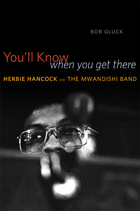 You'll Know When You Get There: Herbie Hancock and the Mwandishi Band
Bob Gluck
University of Chicago Press, 2012 As the 1960s ended, Herbie Hancock embarked on a grand creative experiment. Having just been dismissed from the celebrated Miles Davis Quintet, he set out on the road, playing with his first touring group as a leader until he eventually formed what would become a revolutionary band. Taking the Swahili name Mwandishi, the group would go on to play some of the most innovative music of the 1970s, fusing an assortment of musical genres, American and African cultures, and acoustic and electronic sounds into groundbreaking experiments that helped shape the American popular music that followed. In You’ll Know When You Get There, Bob Gluck offers the first comprehensive study of this influential group, mapping the musical, technological, political, and cultural changes that they not only lived in but also effected. Beginning with Hancock’s formative years as a sideman in bebop and hard bop ensembles, his work with Miles Davis, and the early recordings under his own name, Gluck uncovers the many ingredients that would come to form the Mwandishi sound. He offers an extensive series of interviews with Hancock and other band members, the producer and engineer who worked with them, and a catalog of well-known musicians who were profoundly influenced by the group. Paying close attention to the Mwandishi band’s repertoire, he analyzes a wide array of recordings—many little known—and examines the group’s instrumentation, their pioneering use of electronics, and their transformation of the studio into a compositional tool. From protofunk rhythms to synthesizers to the reclamation of African identities, Gluck tells the story of a highly peculiar and thrillingly unpredictable band that became a hallmark of American genius.
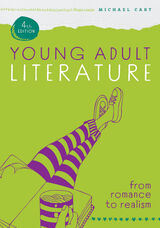 Young Adult Literature, Fourth Edition: From Romance to Realism
Michael Cart
American Library Association, 2022 Editorial Advisory Board: Sarah Park Dahlen, Associate Professor, School of Information Sciences, University of Illinois Urbana-Champaign; Marianne Martens, Associate Professor, School of Information, Kent State University; Amy Pattee, Associate Professor and Co-coordinator of Dual-Degree MS LIS/MA Children’s Literature, School of Library and Information Science, Children’s Literature, Simmons University
“Comprehensive and substantial … a highly recommended resource," raved VOYA about the third edition. Now, to keep pace with changes in the field of publishing and realign itself to the newest generation of young adults, Cart returns with a sweeping update of his classic text. Relied upon by educators, LIS instructors and students, and practitioners for its insight and thoroughness, his book - surveys the landscape of YA lit both past and present, sketching out its origins and showing how it has evolved to deal with subjects every bit as complex as its audience;
- closely examines teen demographics, literacy, audiobooks, the future of print, the role of literary criticism, and other key topics;
- provides updated coverage of perennially popular genre fiction, including horror, sci fi, and dystopian fiction;
- delves deeply into multicultural and LGBTQIA+ literature, substantially updated in this edition;
- features expansive interviews with best-selling authors like Eric Shanower, Jackie Woodson, and Bill Konigsberg as well as several publishers and leaders in the field;
- discusses the impact of the Printz Award, ALAN’s Walden Award, the National Book Award, The Los Angeles Times Book Award, and other honors; and
- features abundant bibliographic material to aid in readers' advisory and collection development.
 The Young Adult Playbook: Living Like It Matters
Anna Moreland
Catholic University of America Press, 2024 The Young Adult Playbook goes where other life design books refuse to go: it asks deep questions about what constitutes a happy life. After decades of listening to their students, Anna Moreland and Thomas Smith name the underlying desires in young adults: while searching for a lucrative career, they long for meaningful work; their social media and gaming practices point to a deeper yearning for intimacy; and their leisure habits have been crushed under the productivity machine. This book helps them unlock their deepest desires. It offers practical strategies to improve habits. And it leads them to recover activities lost from childhood. The book is threaded with the real voices of young adults who have found their way out of this rough terrain. These offer much needed models of hope, providing a concrete map through unprecedented challenges. Journal exercises throughout the chapters tailor the strategies for each individual reader.
Plenty of books diagnose the ills of this digital age. Few offer a pathway out of these challenges. As caring and effective college professors, Moreland and Smith have spent decades rescuing students from this impoverished landscape. In this book they attempt to reach the students they can't teach
|
|



